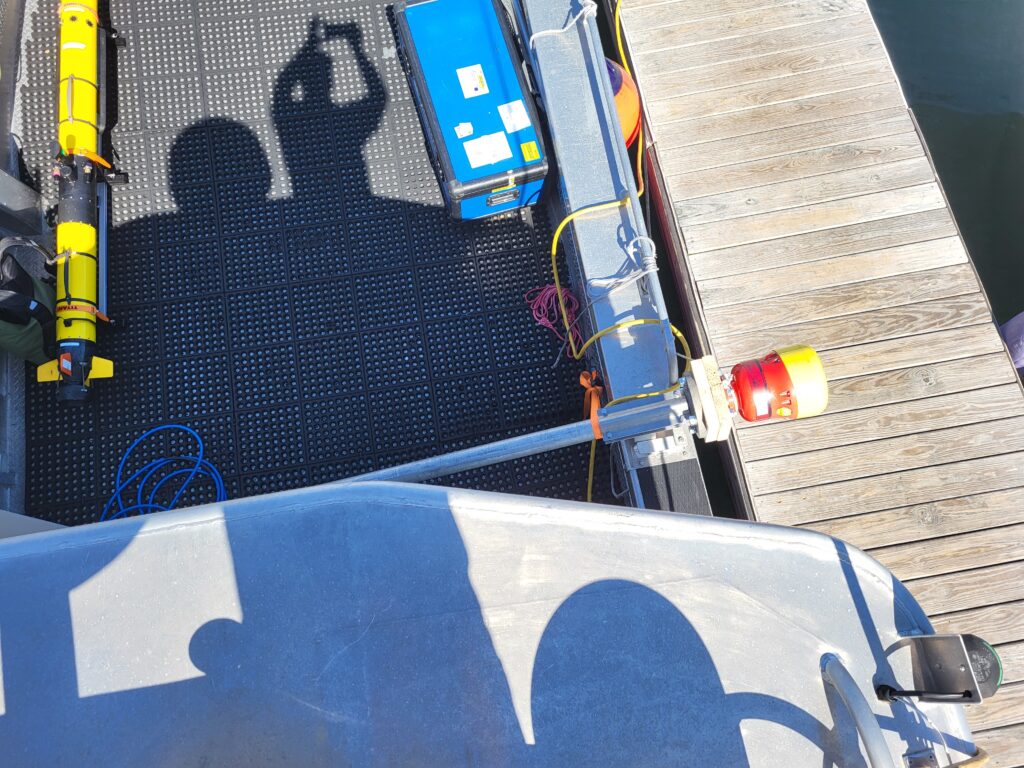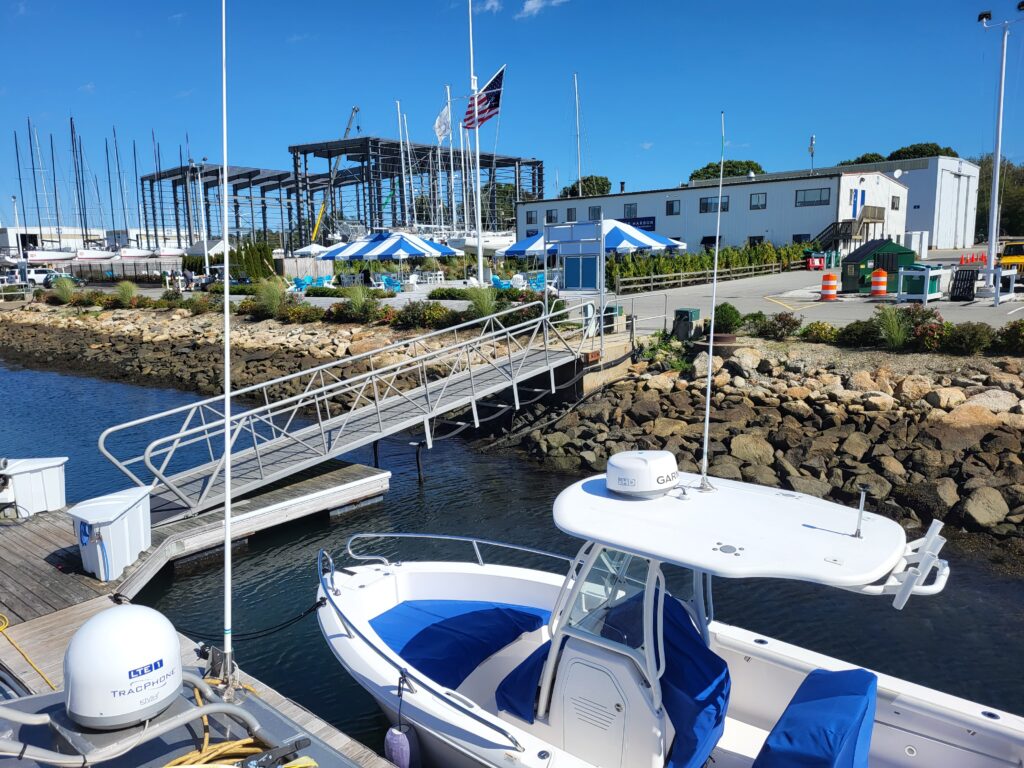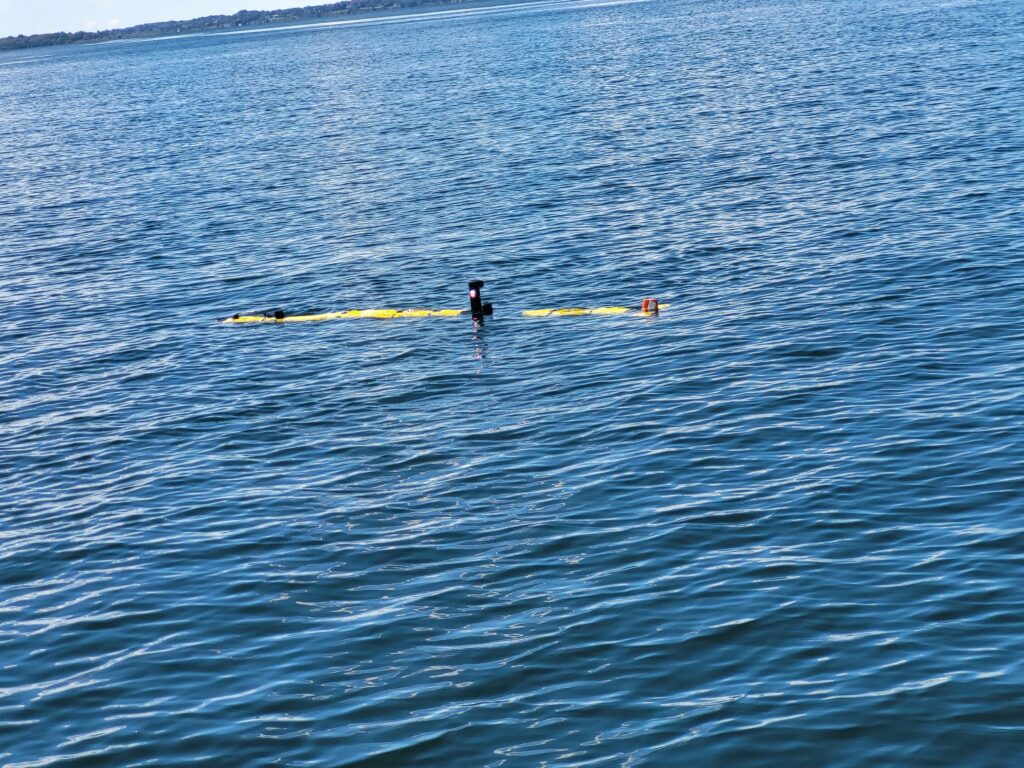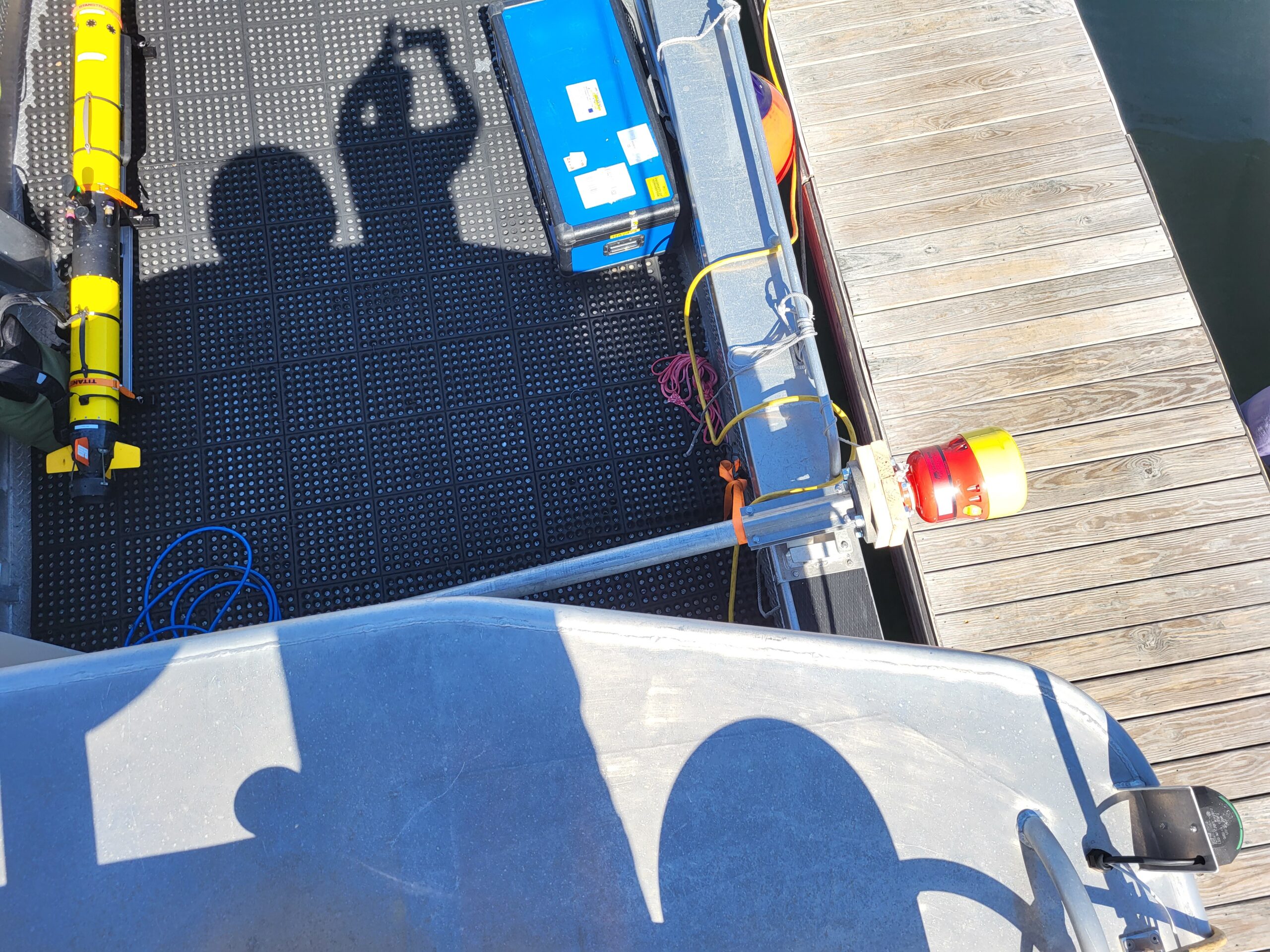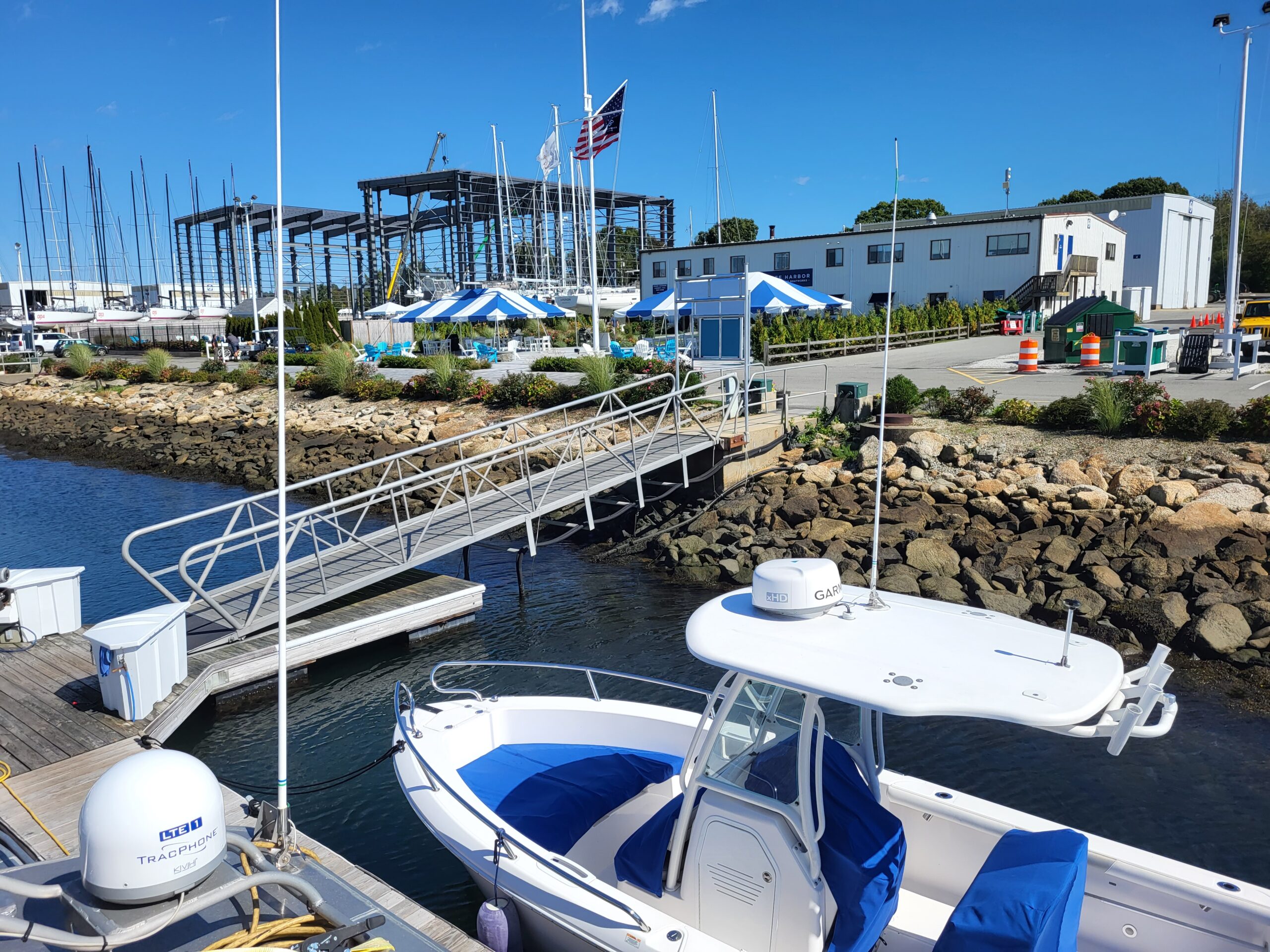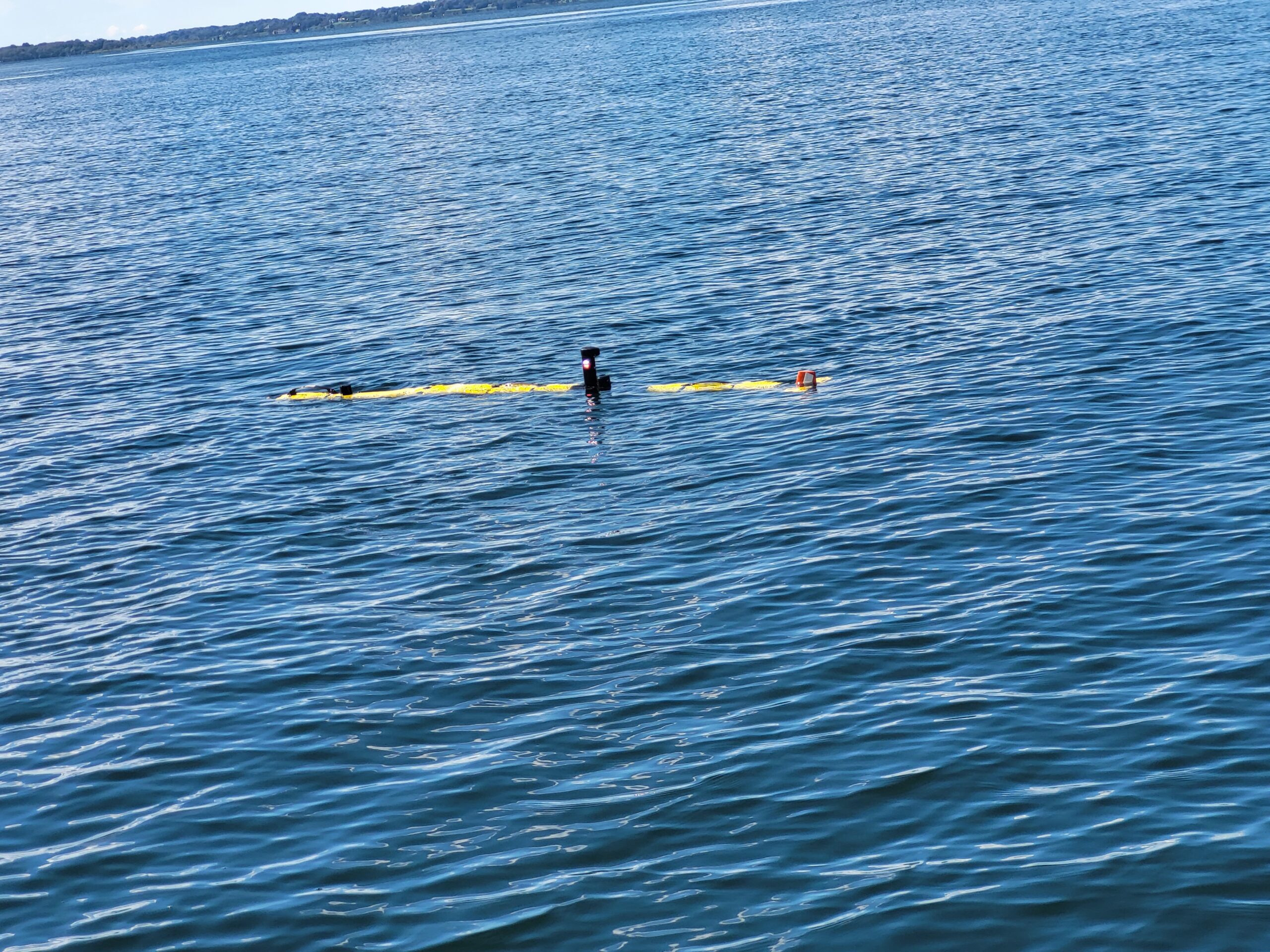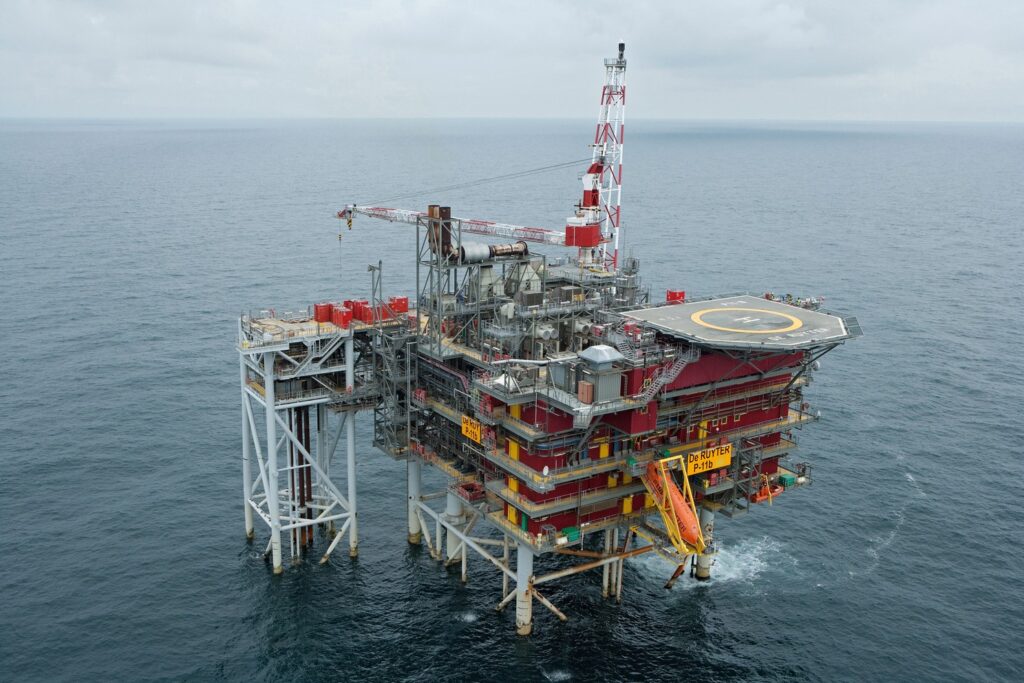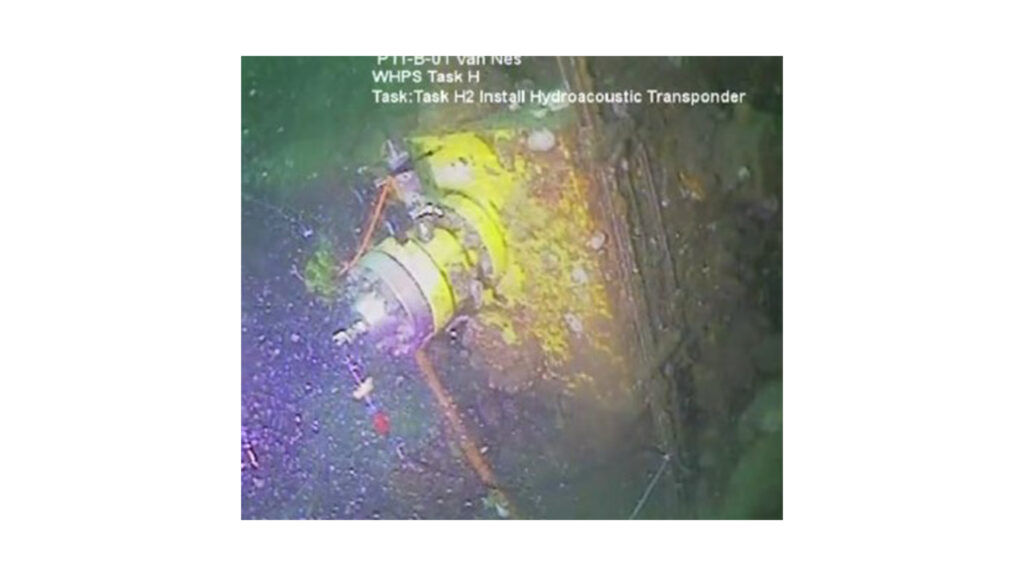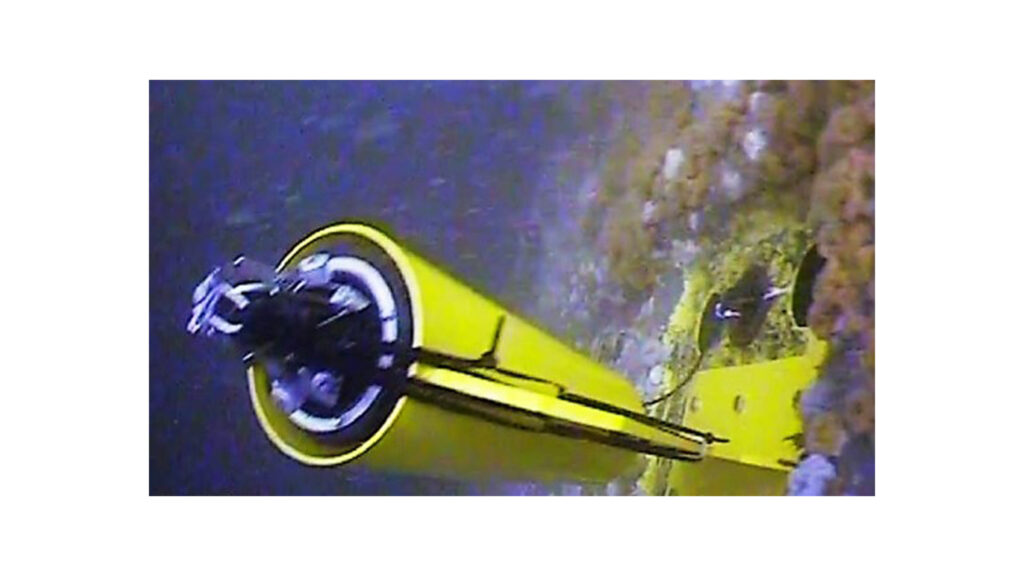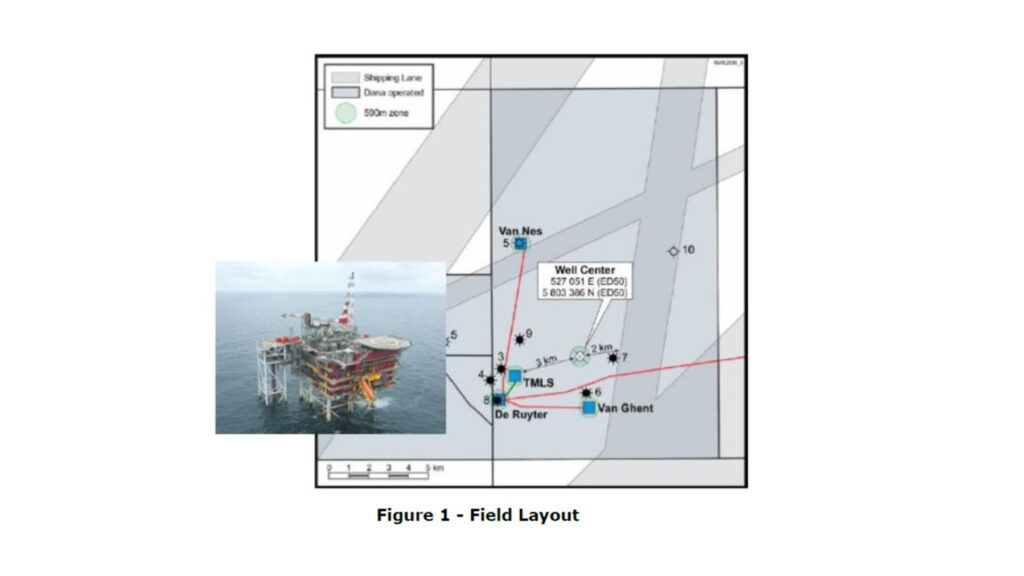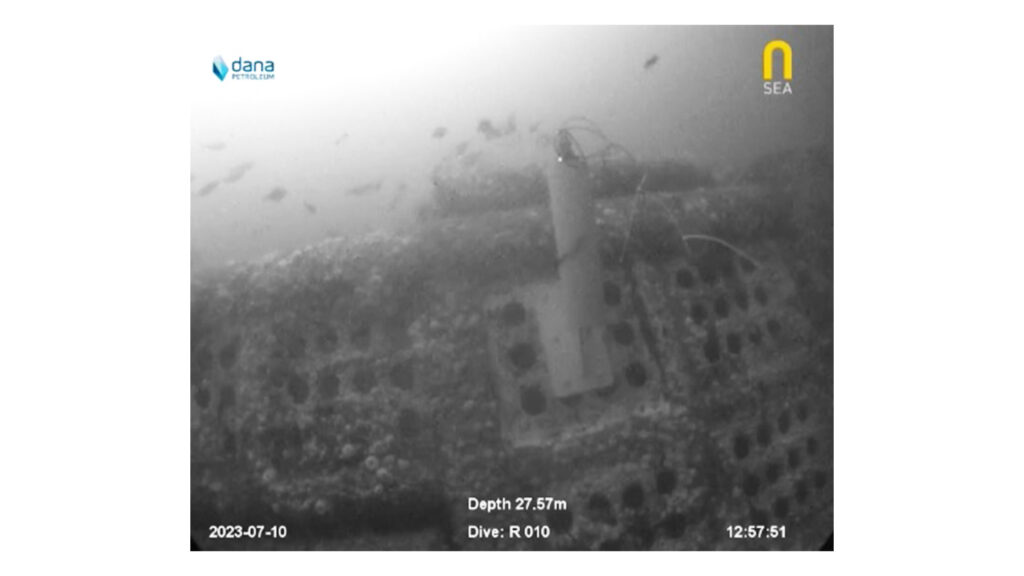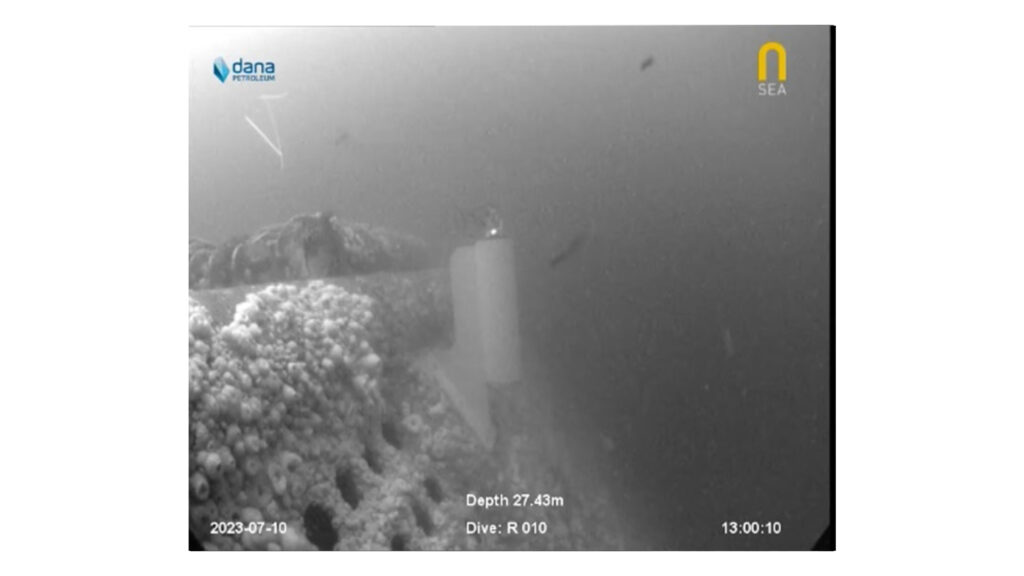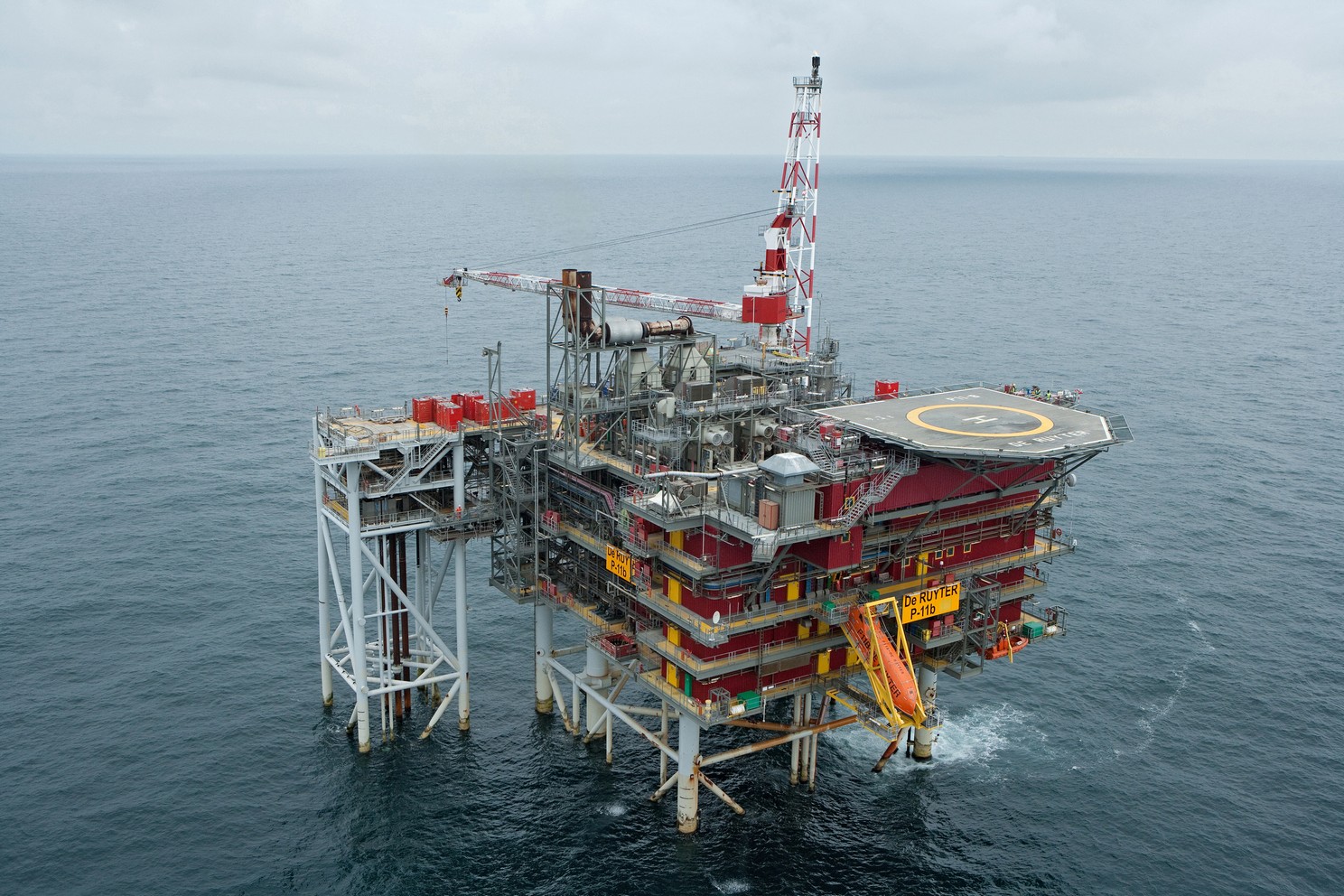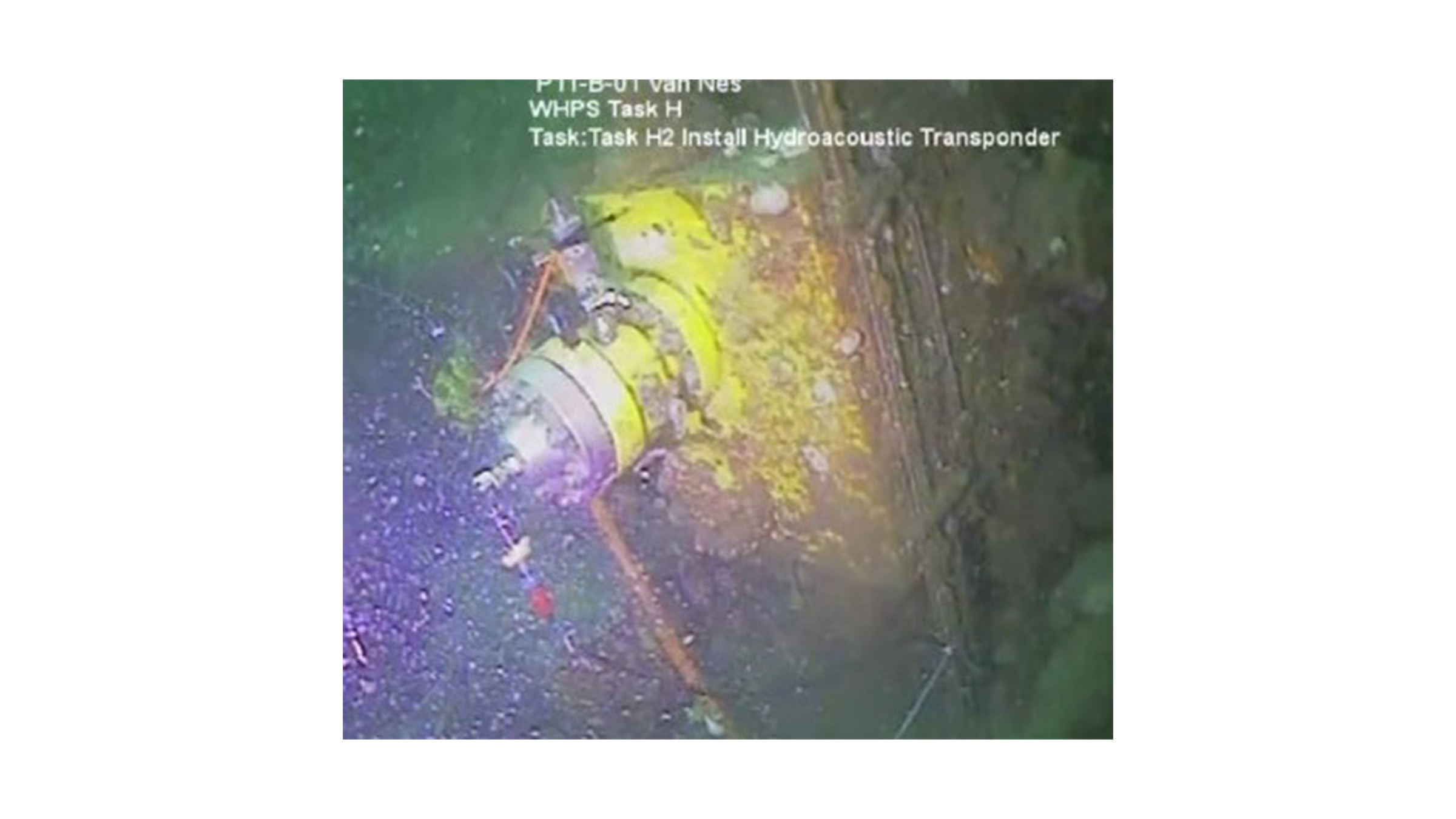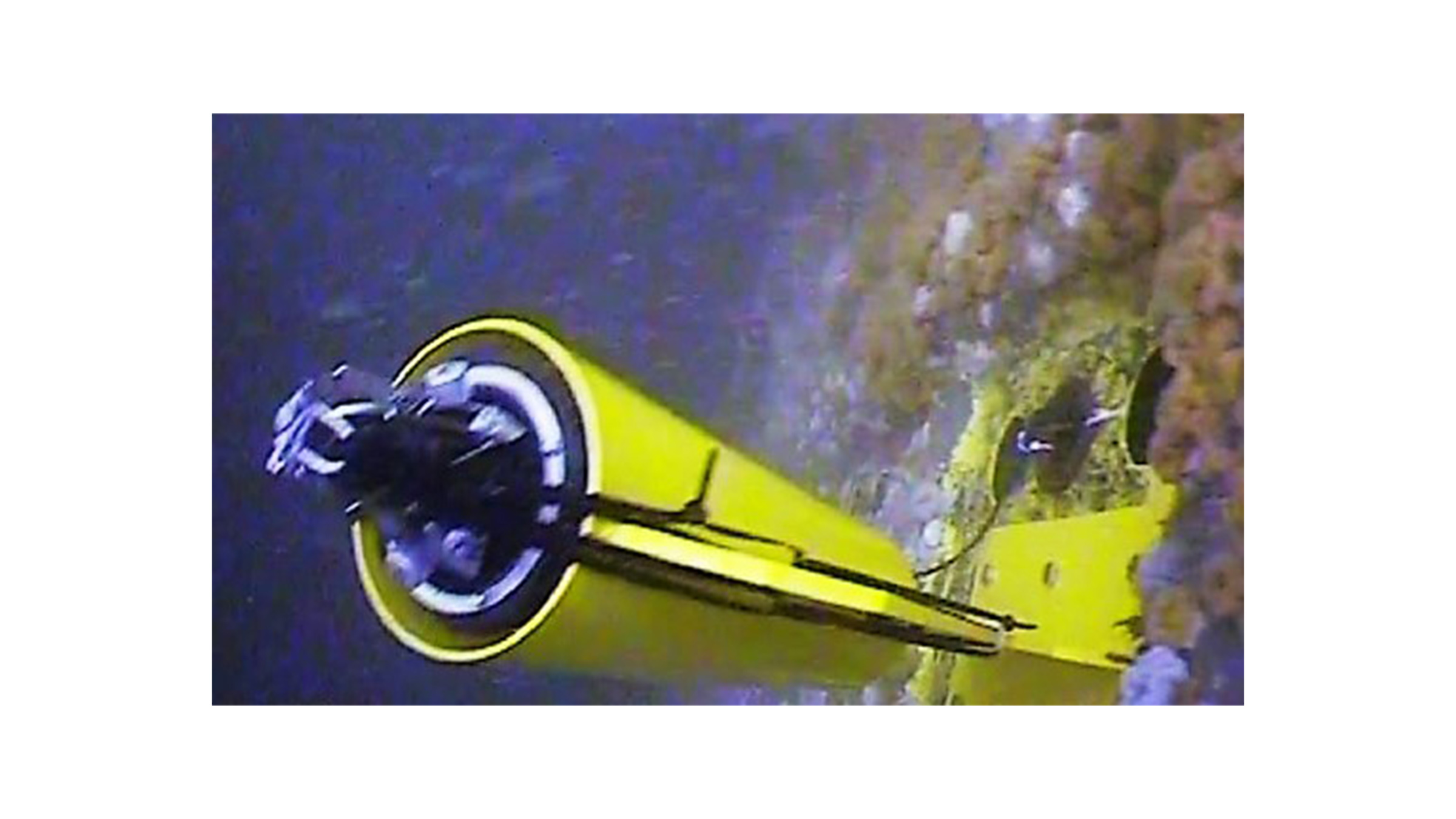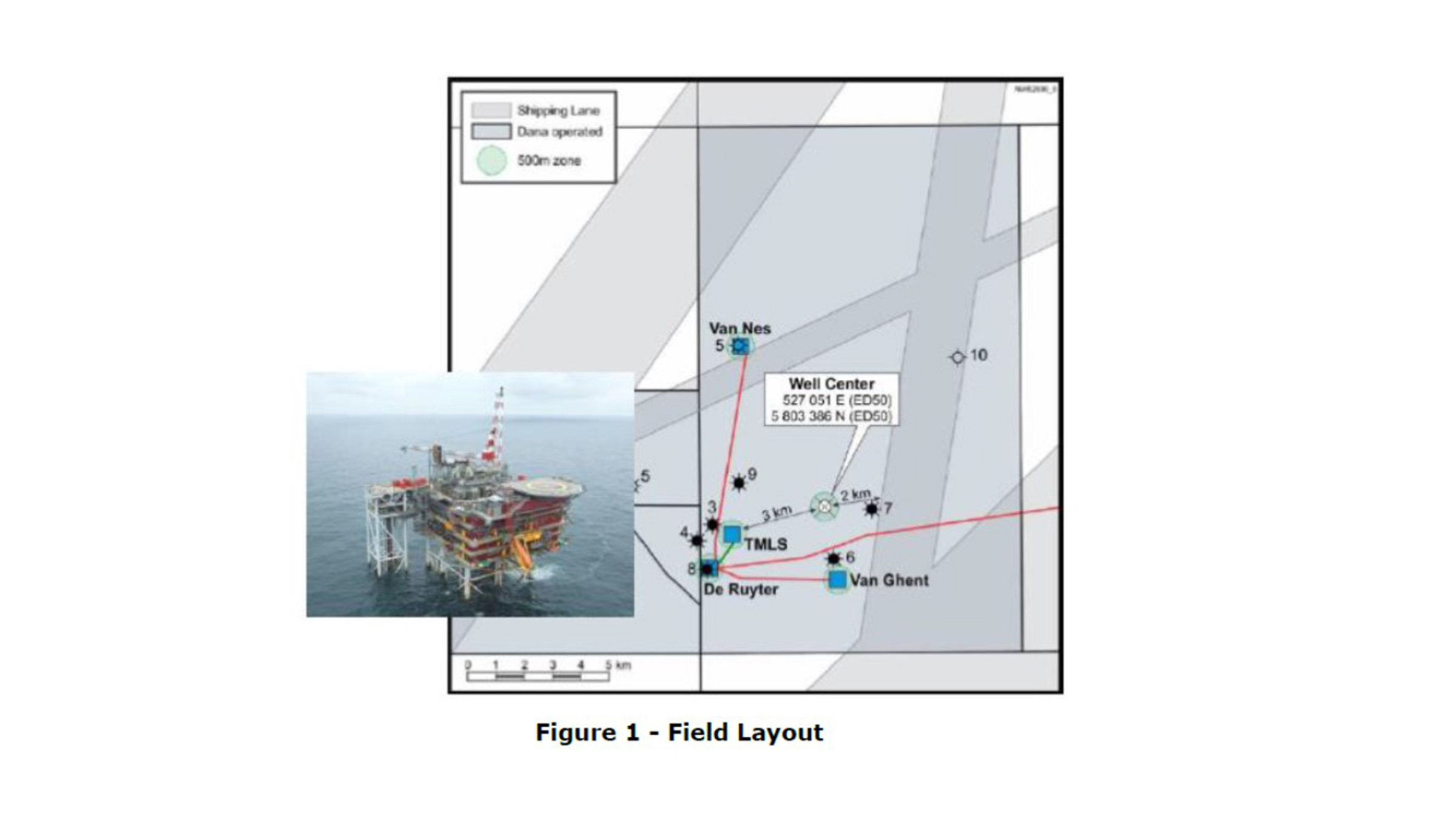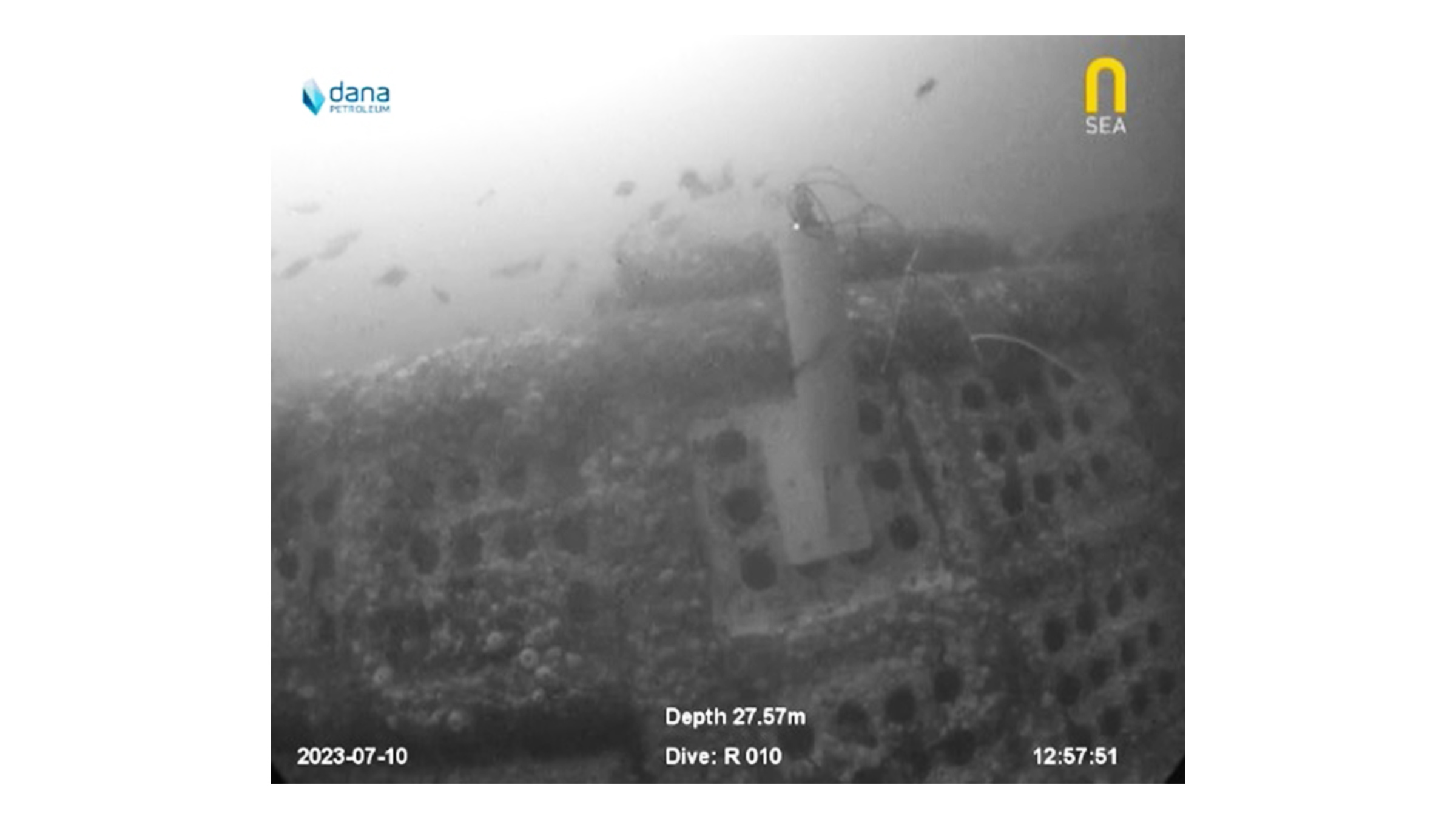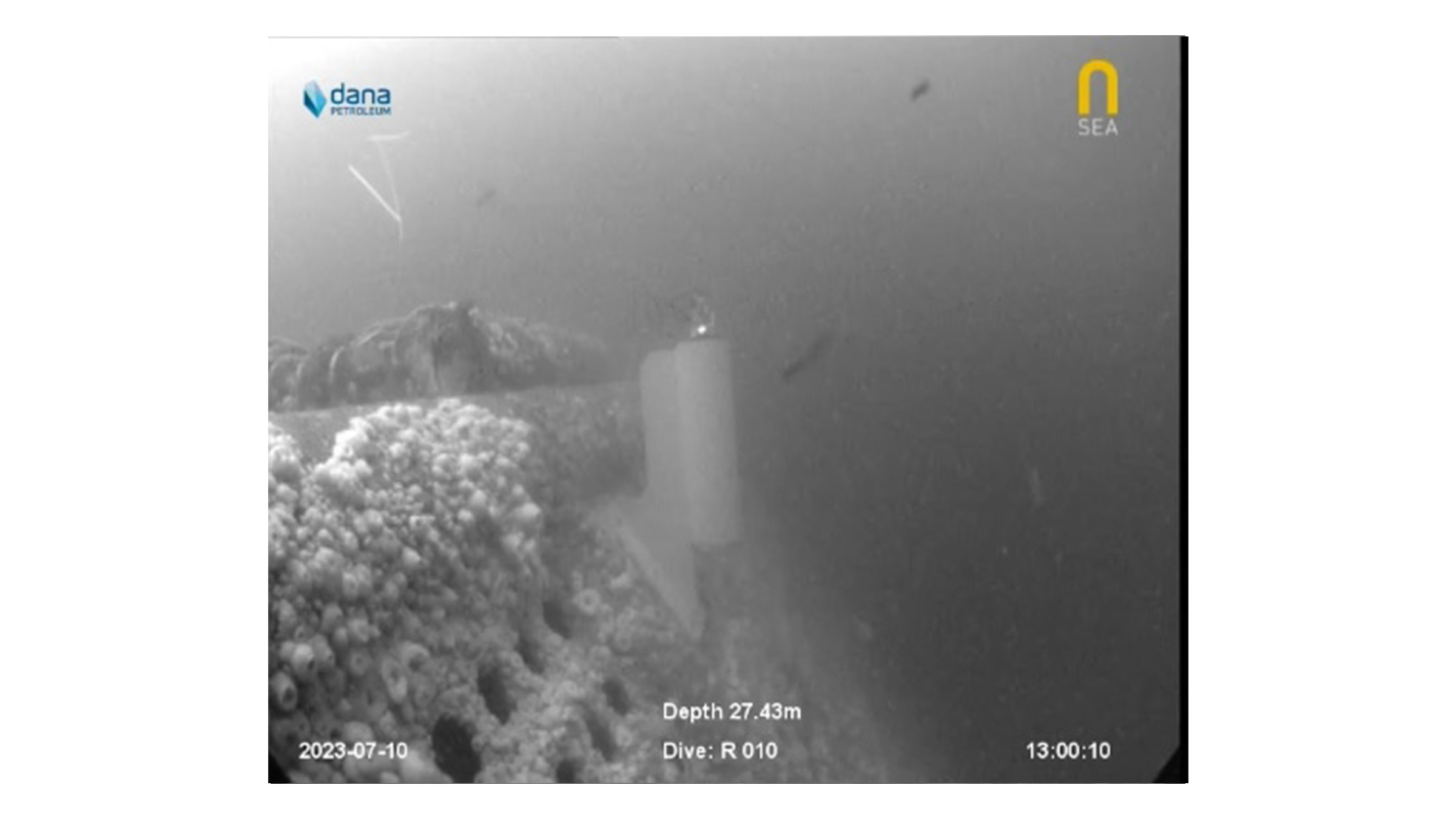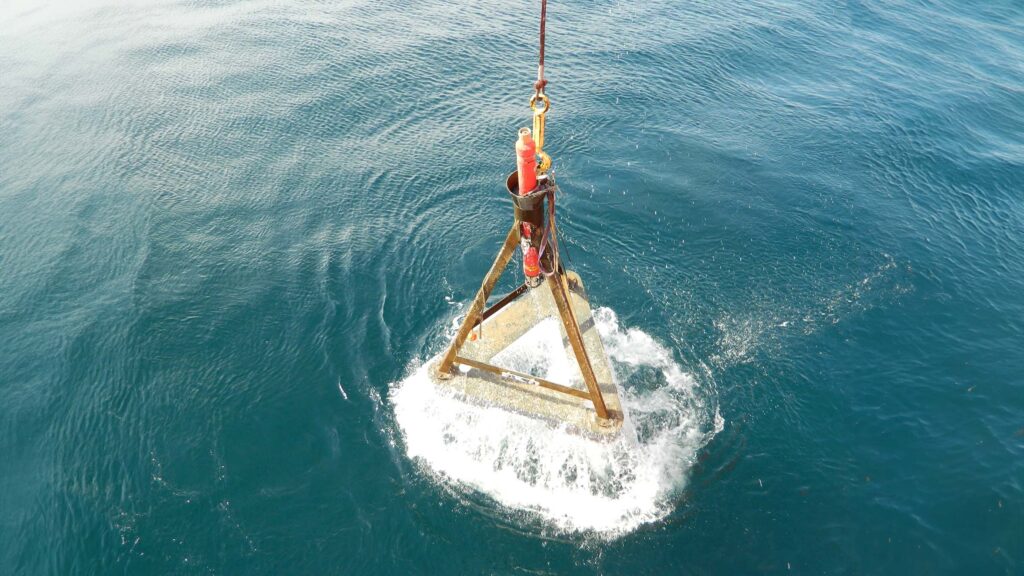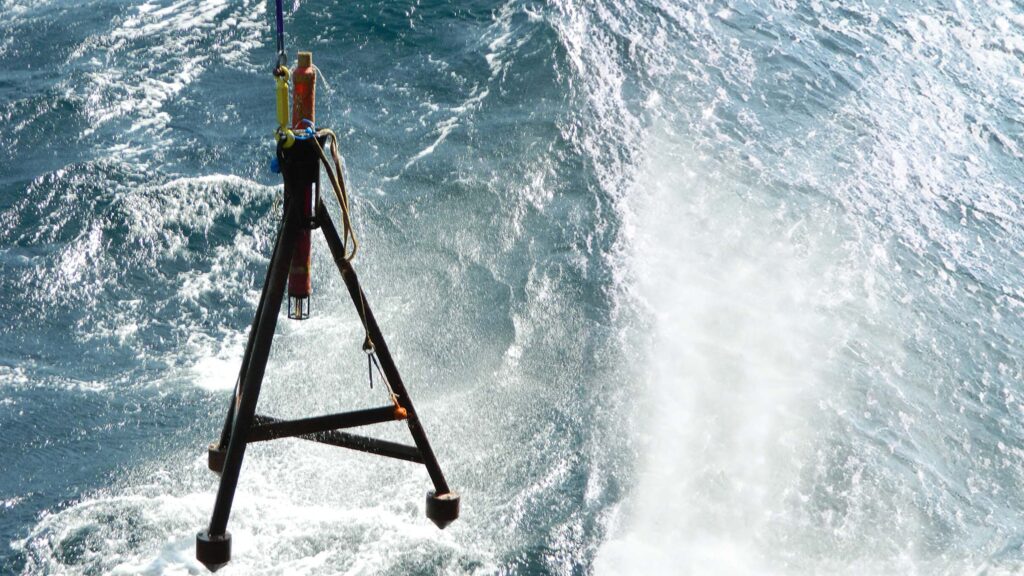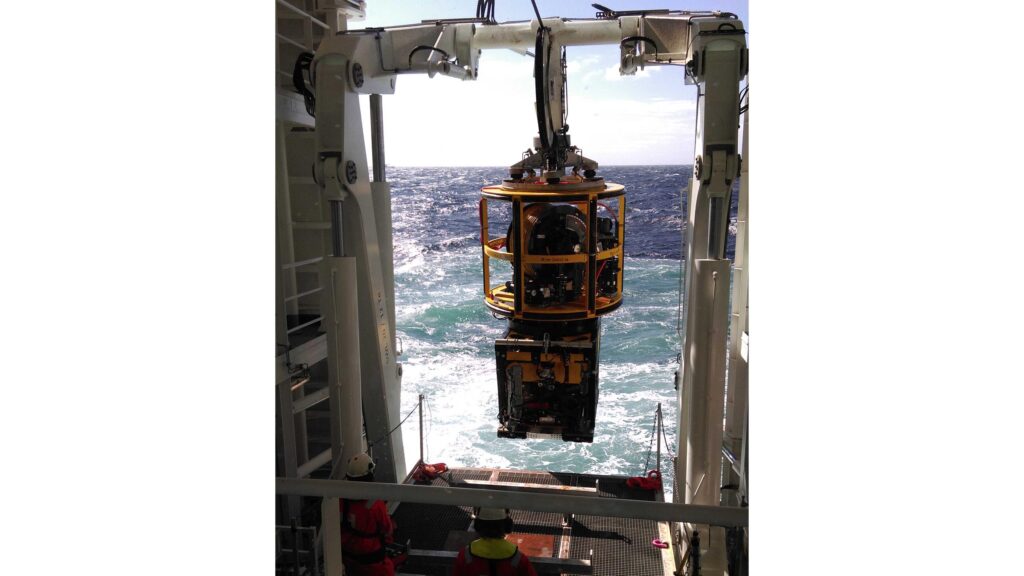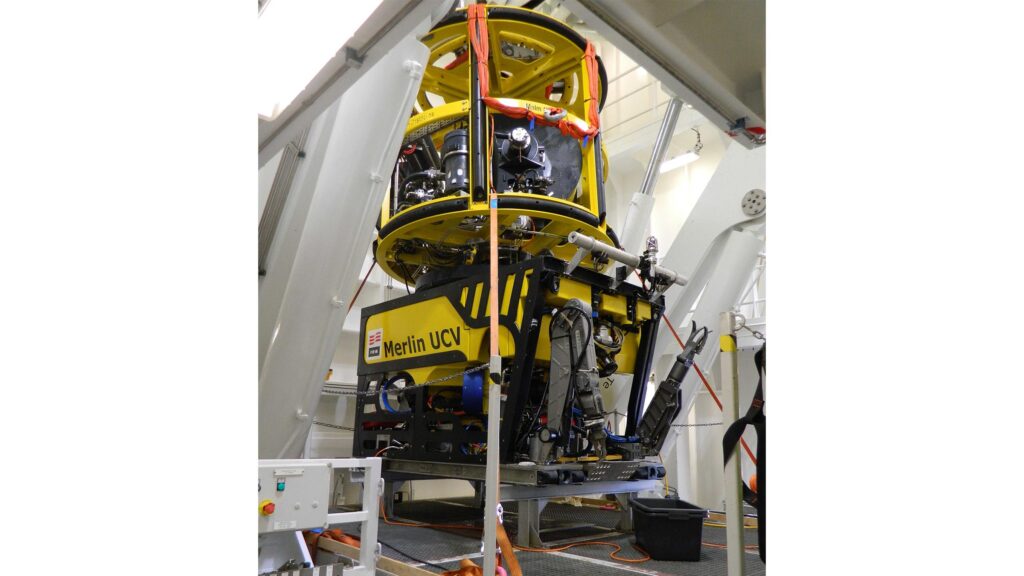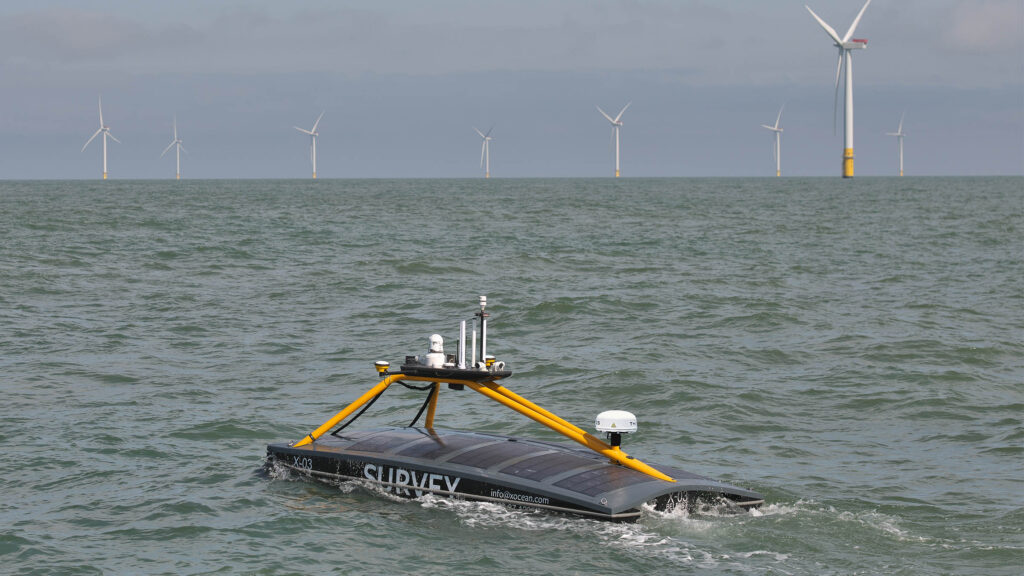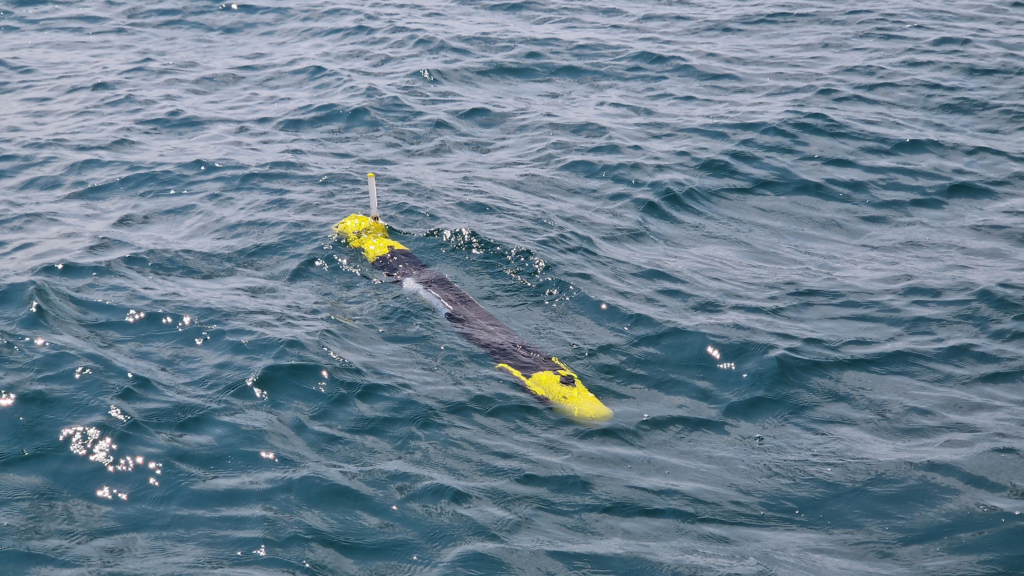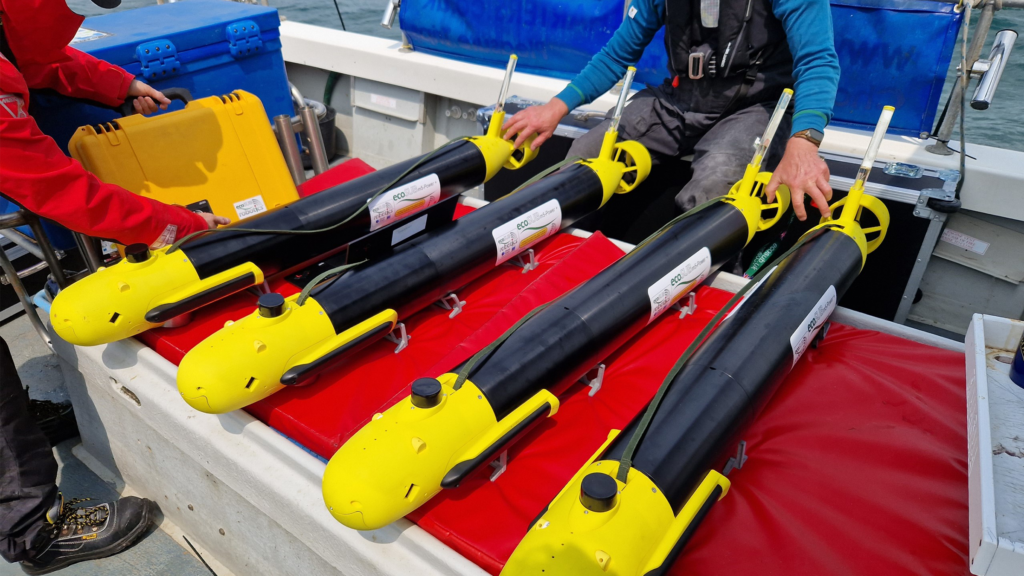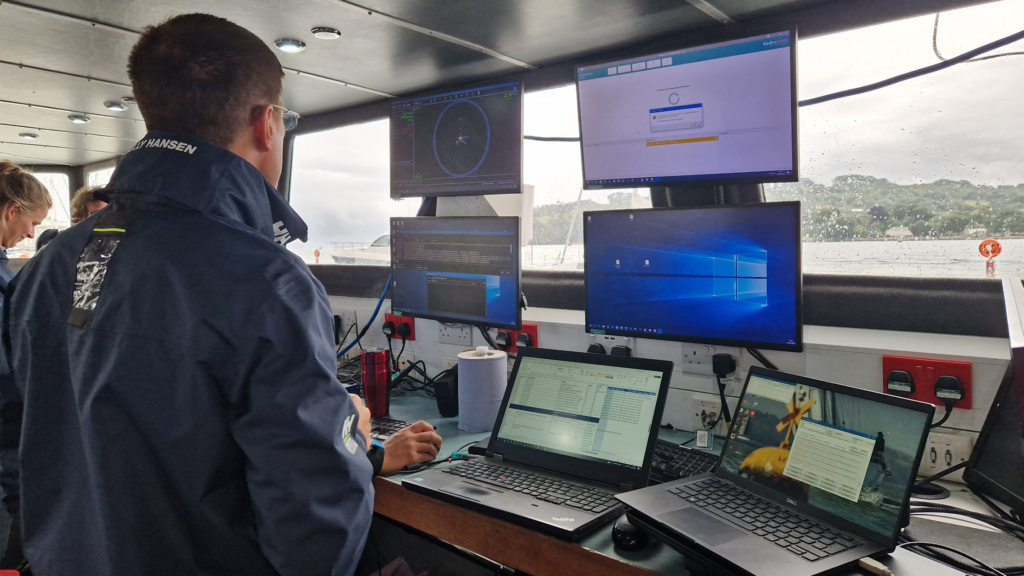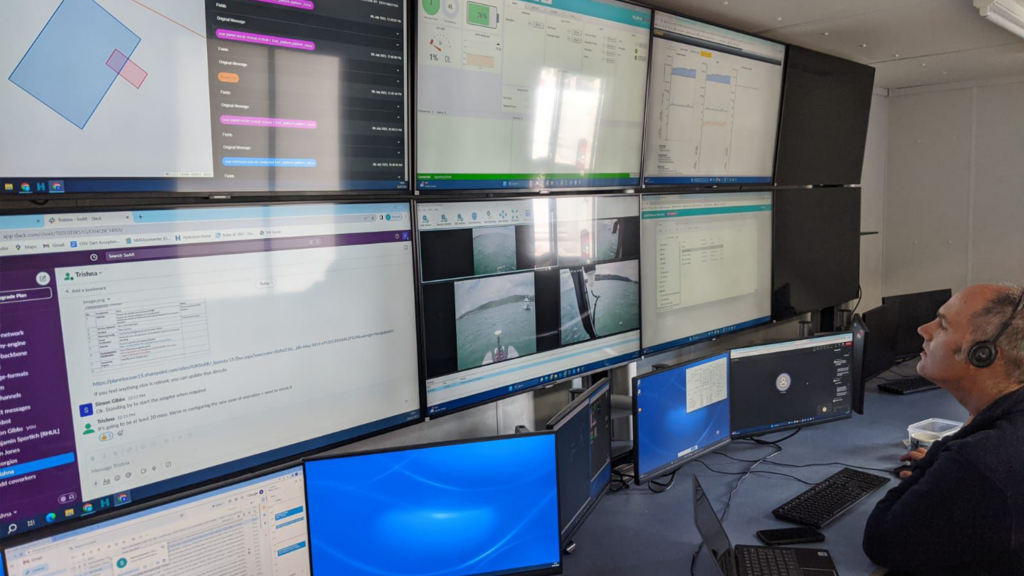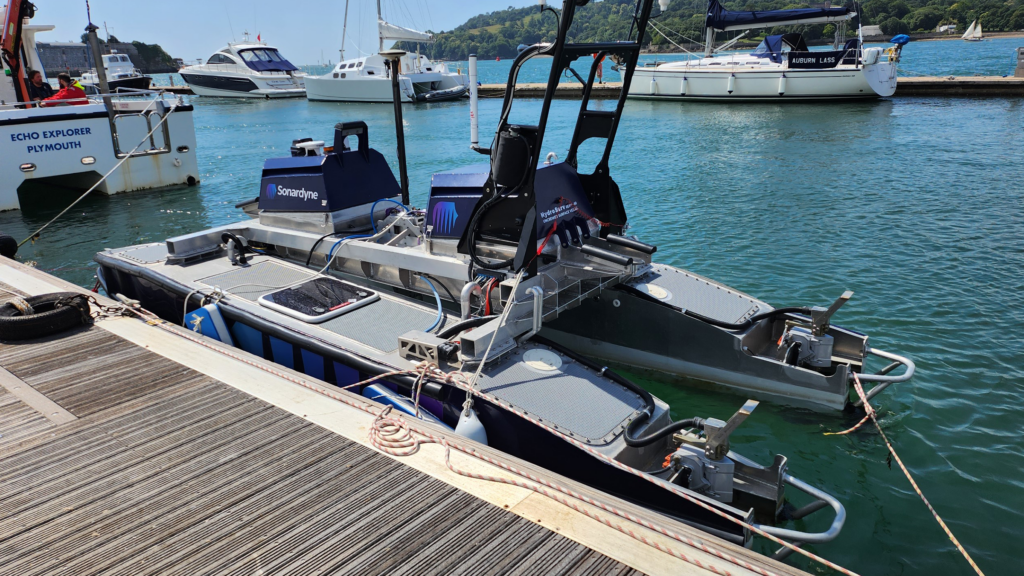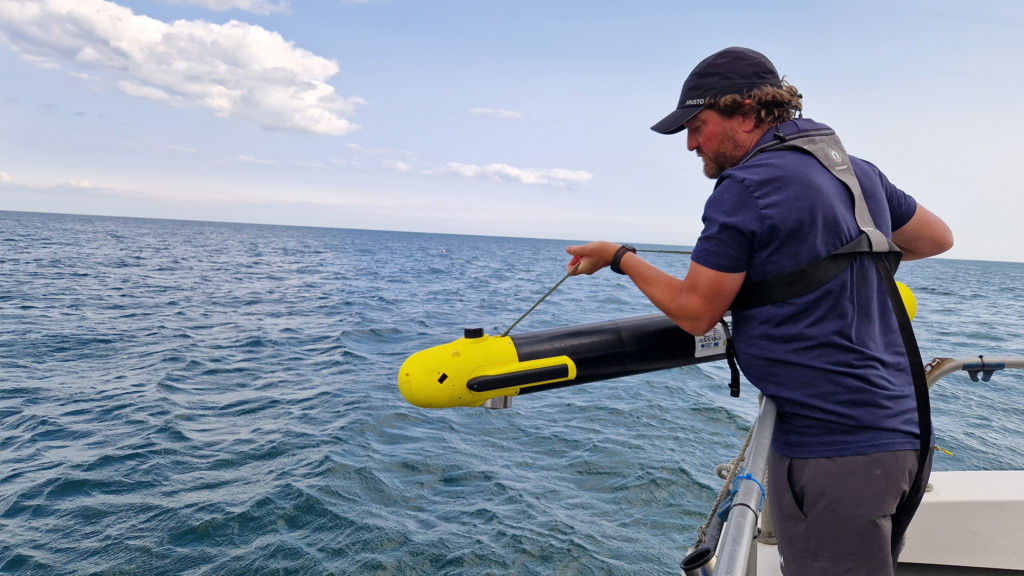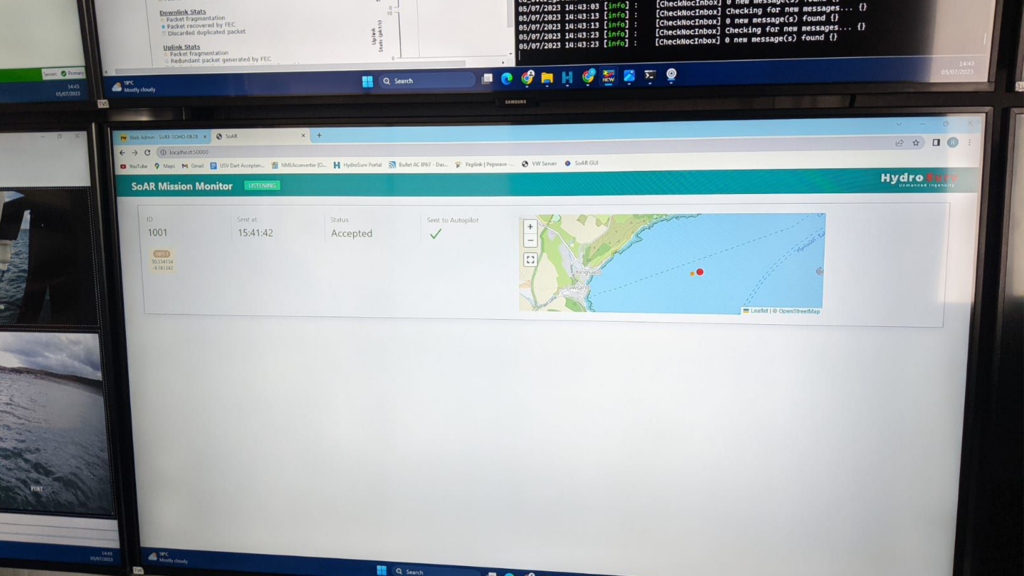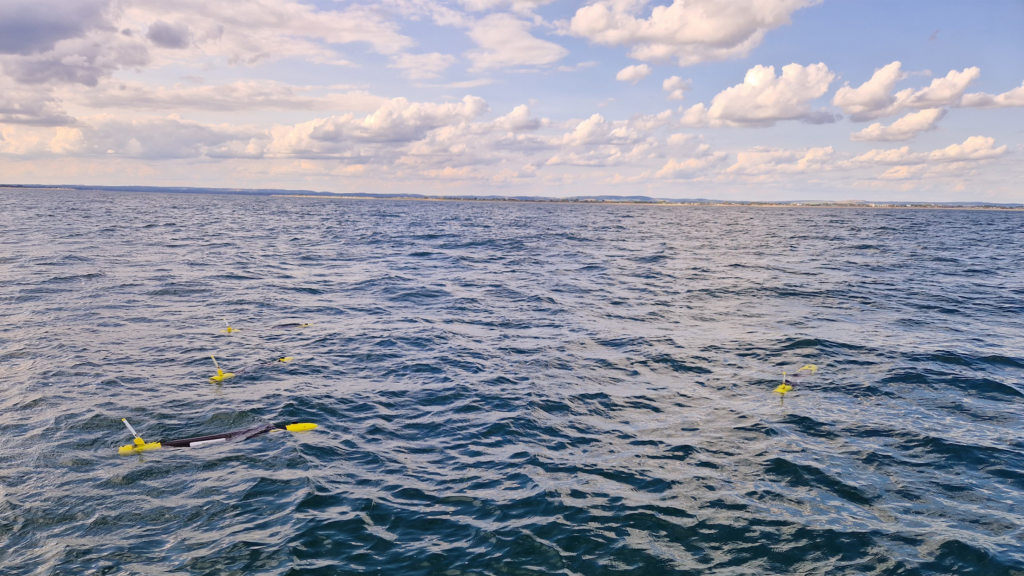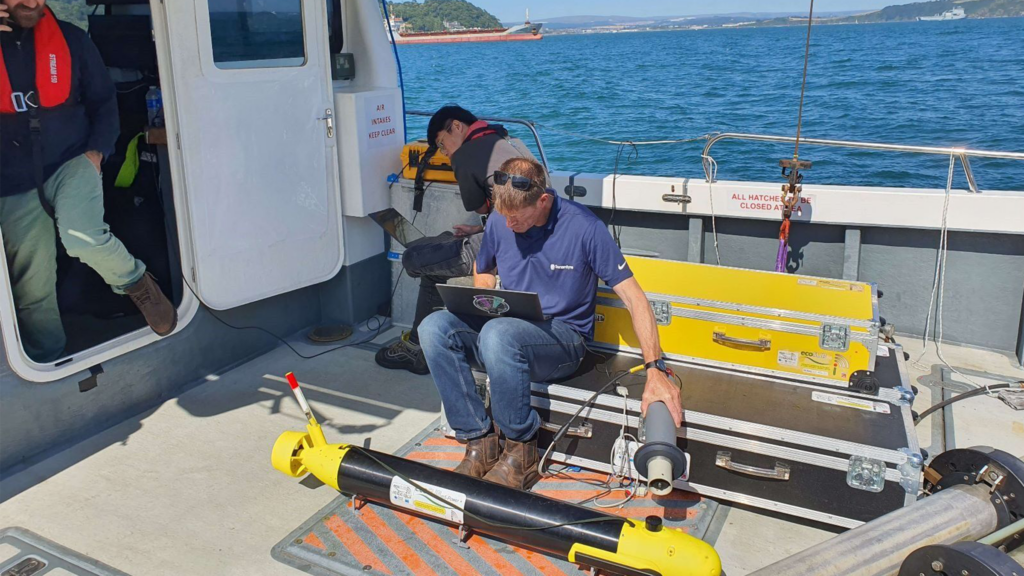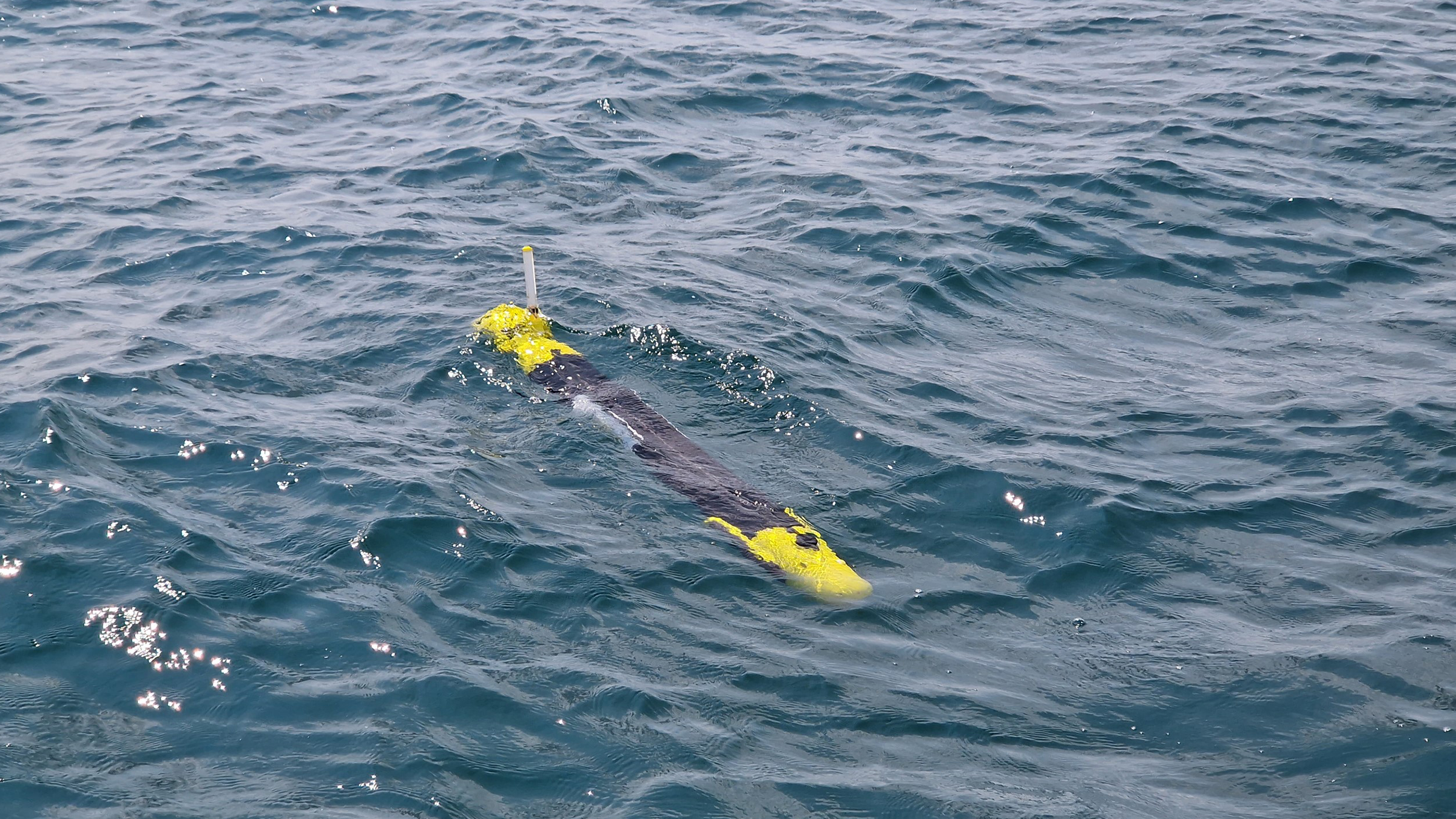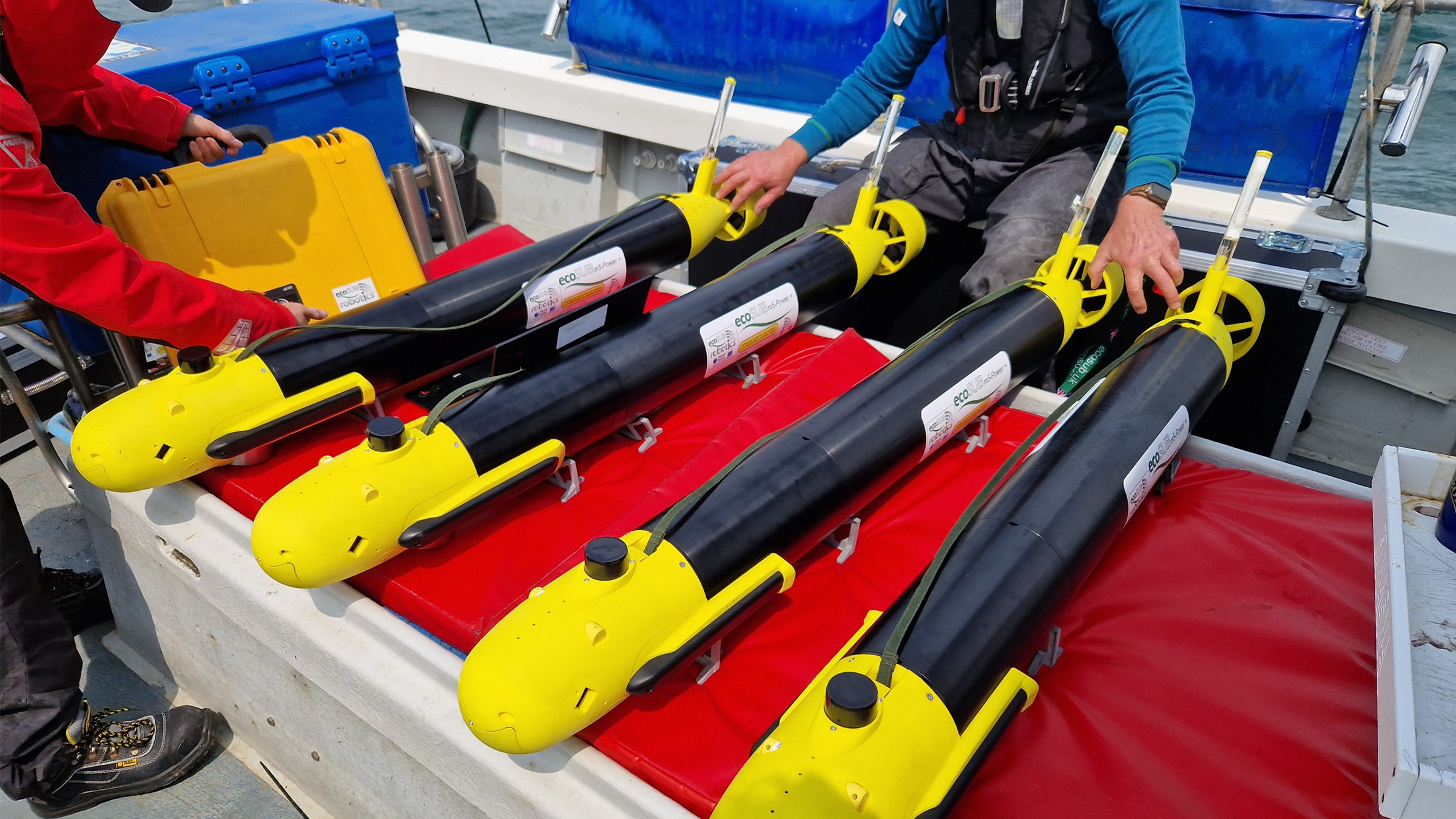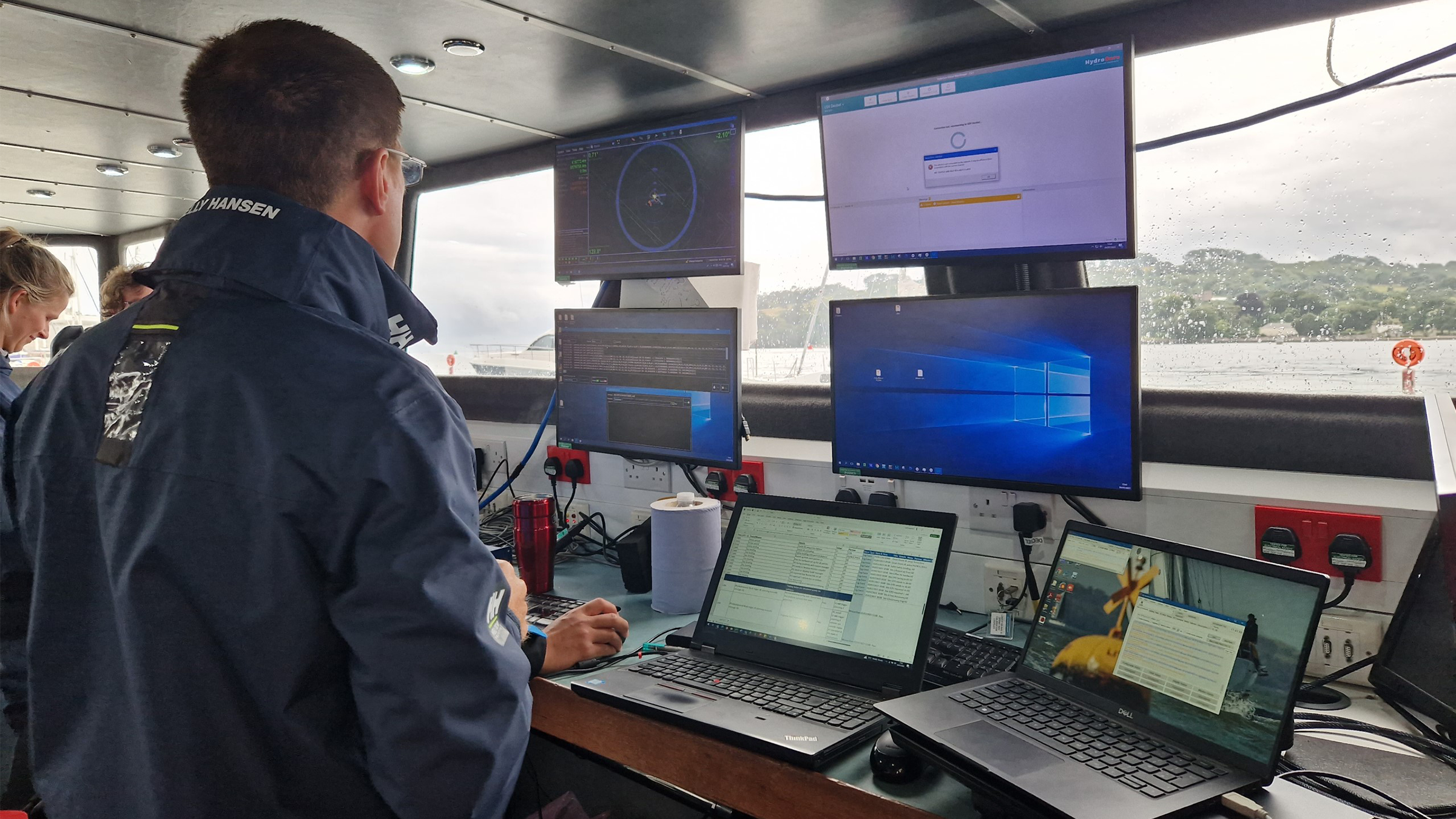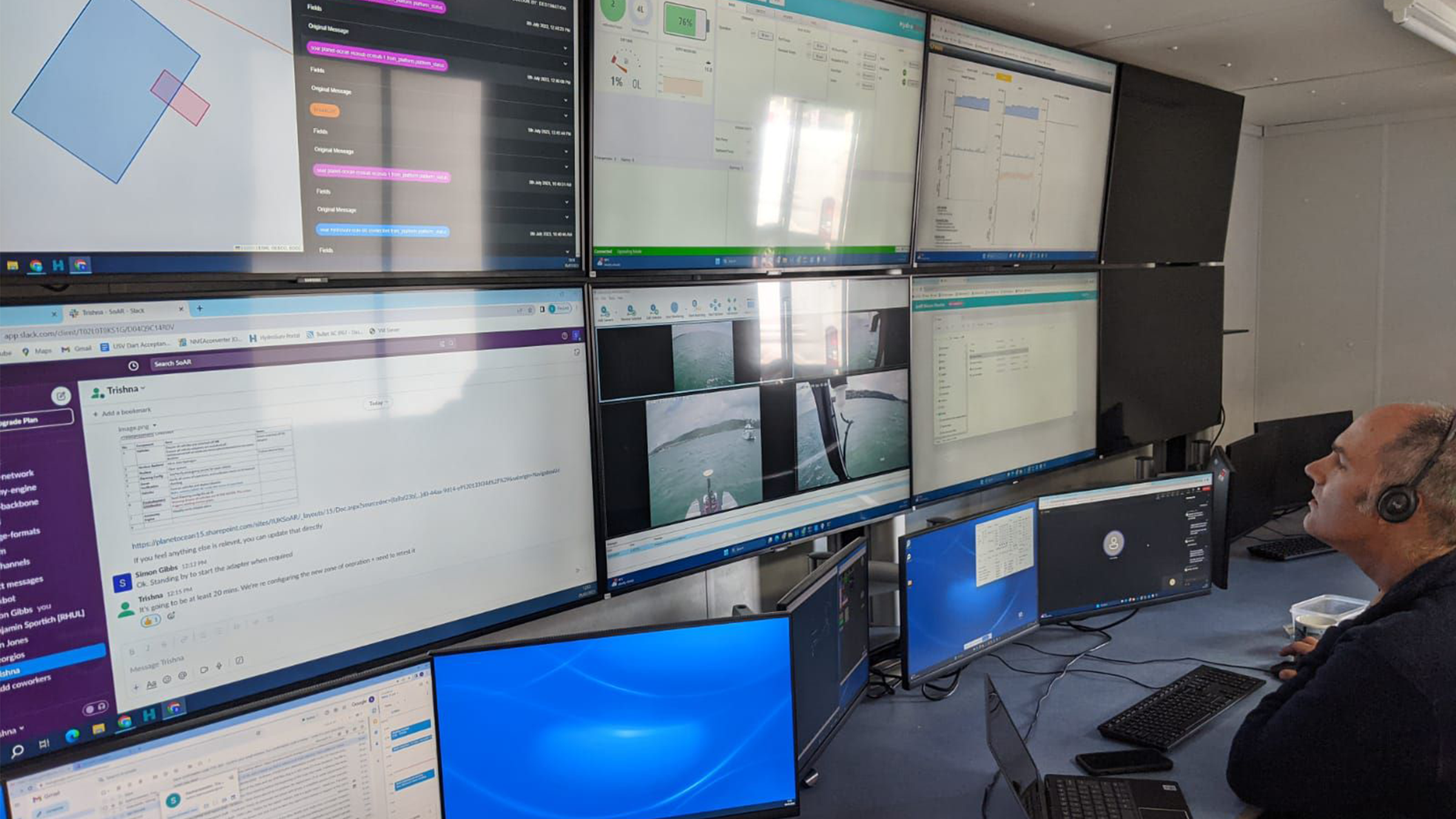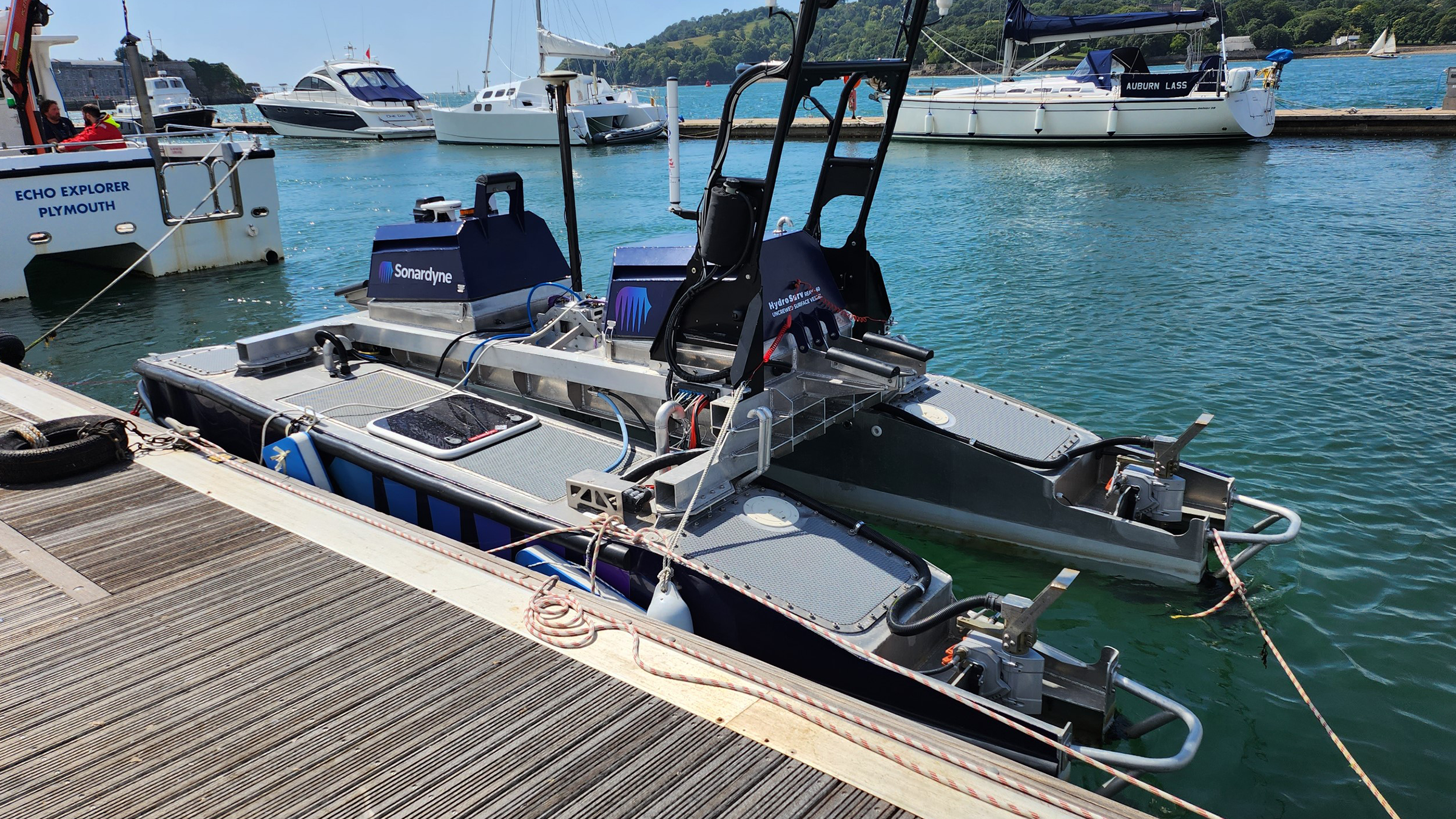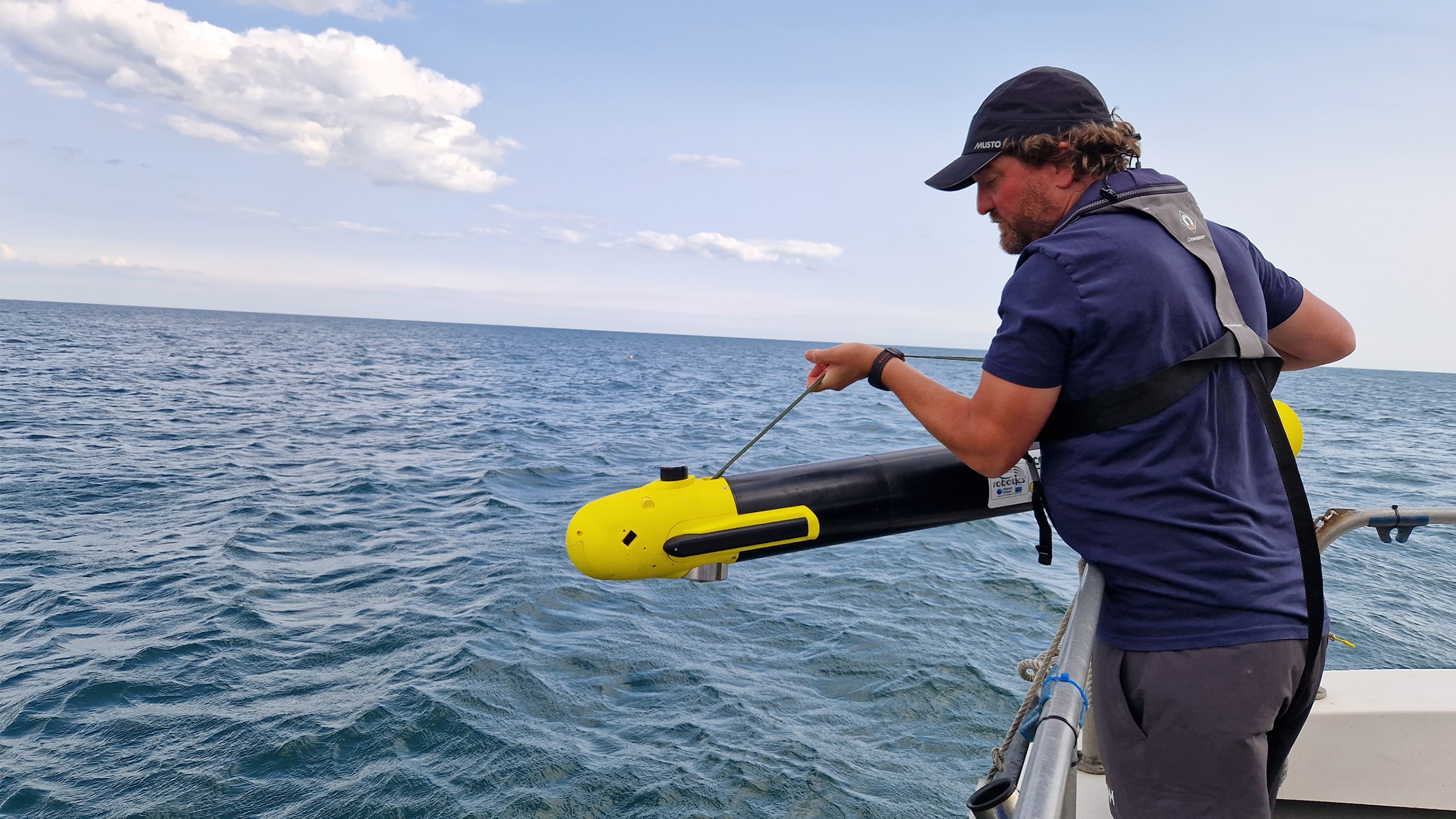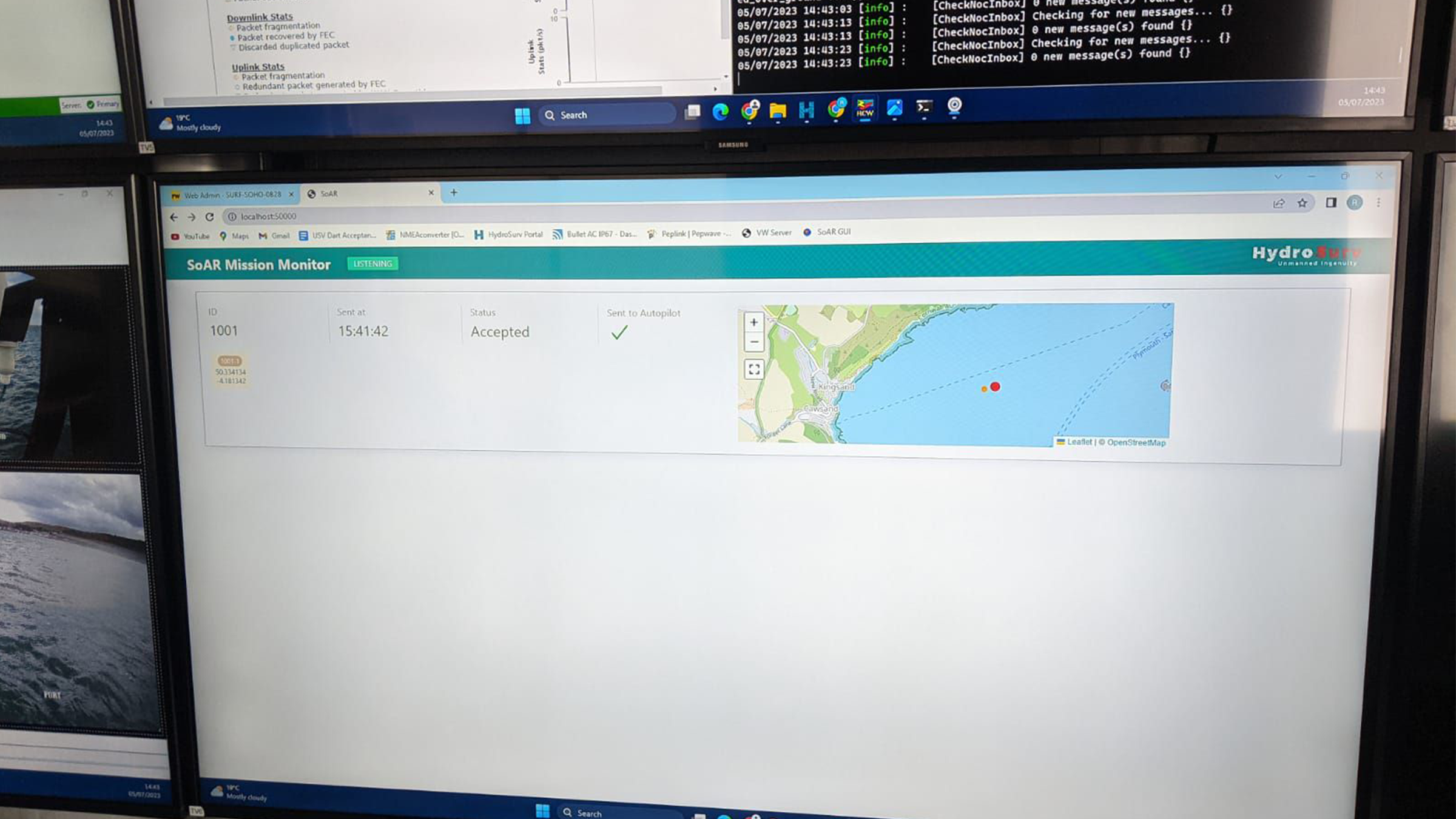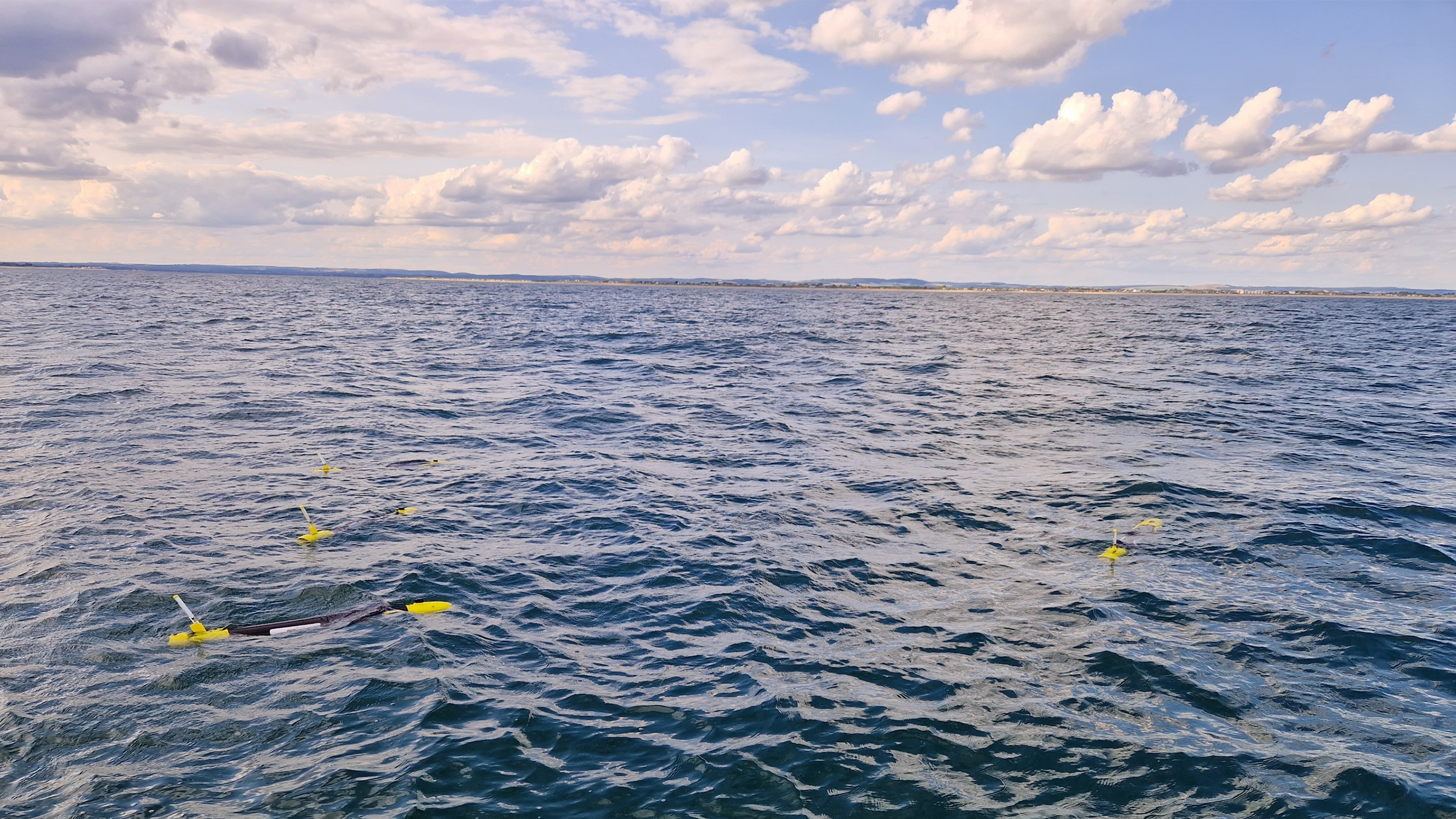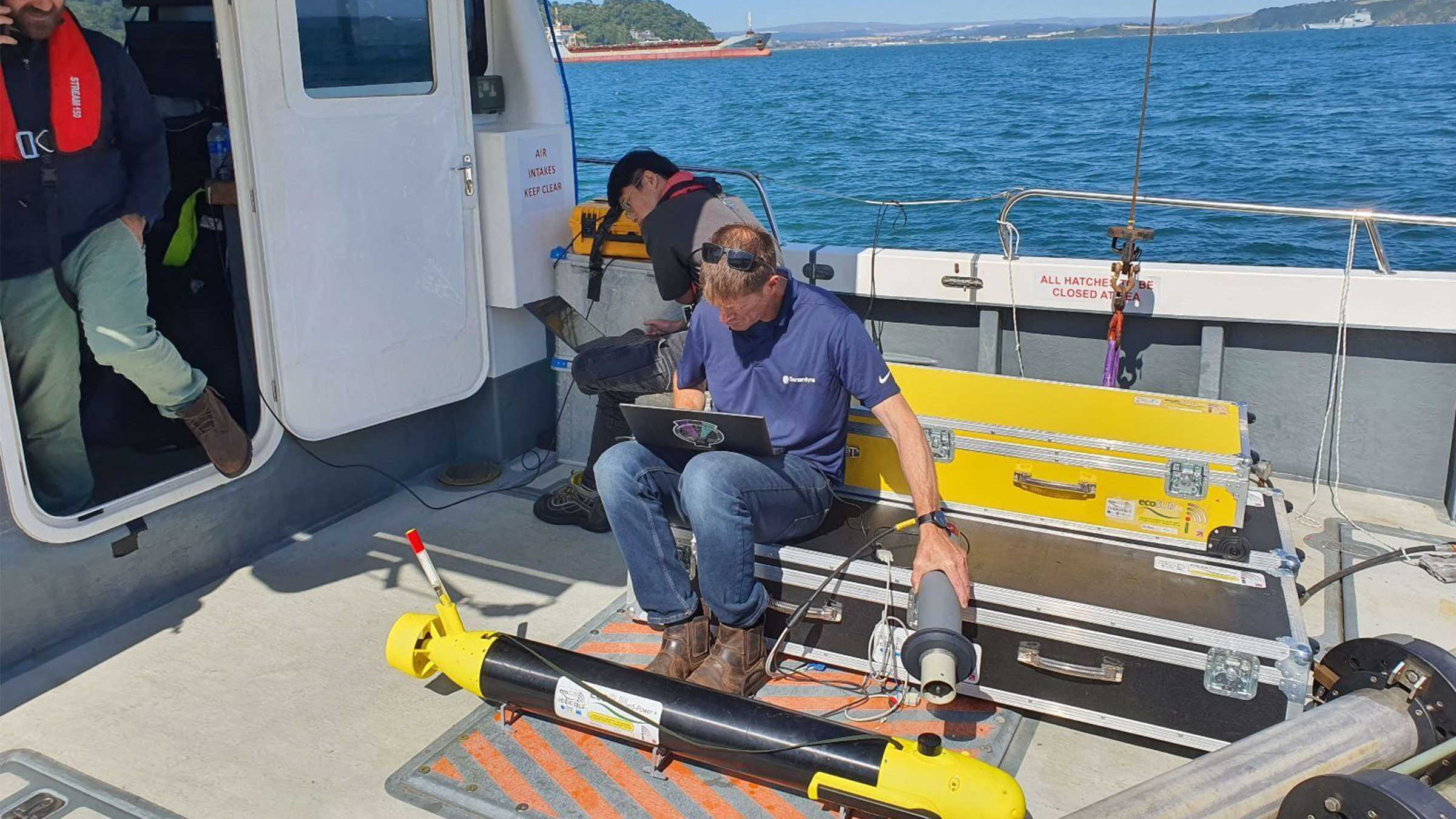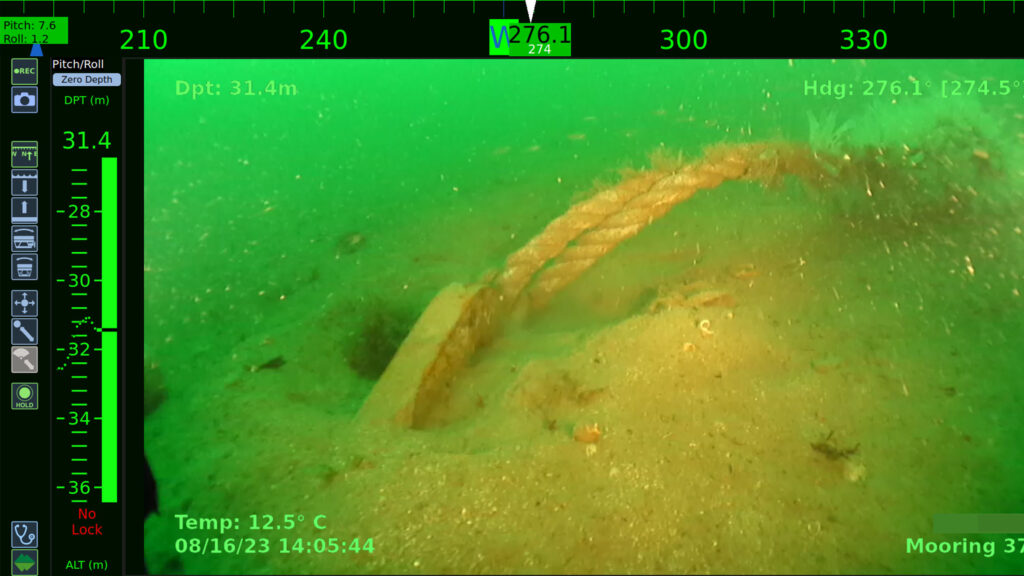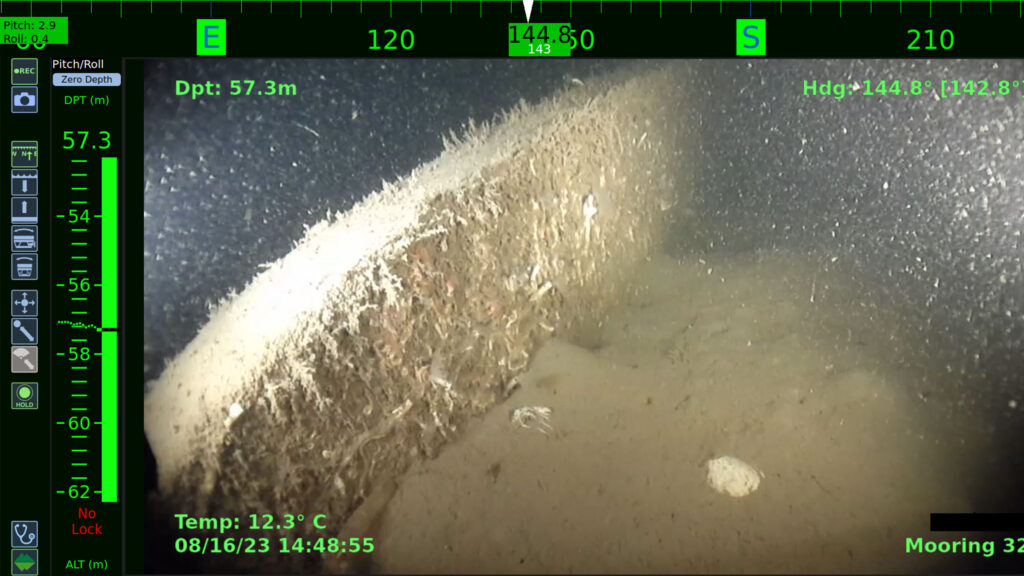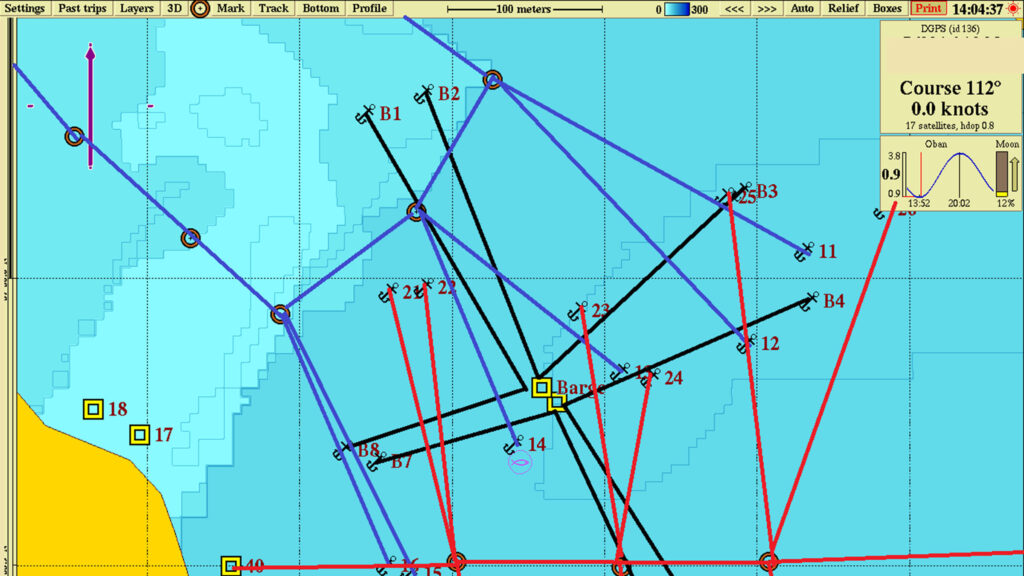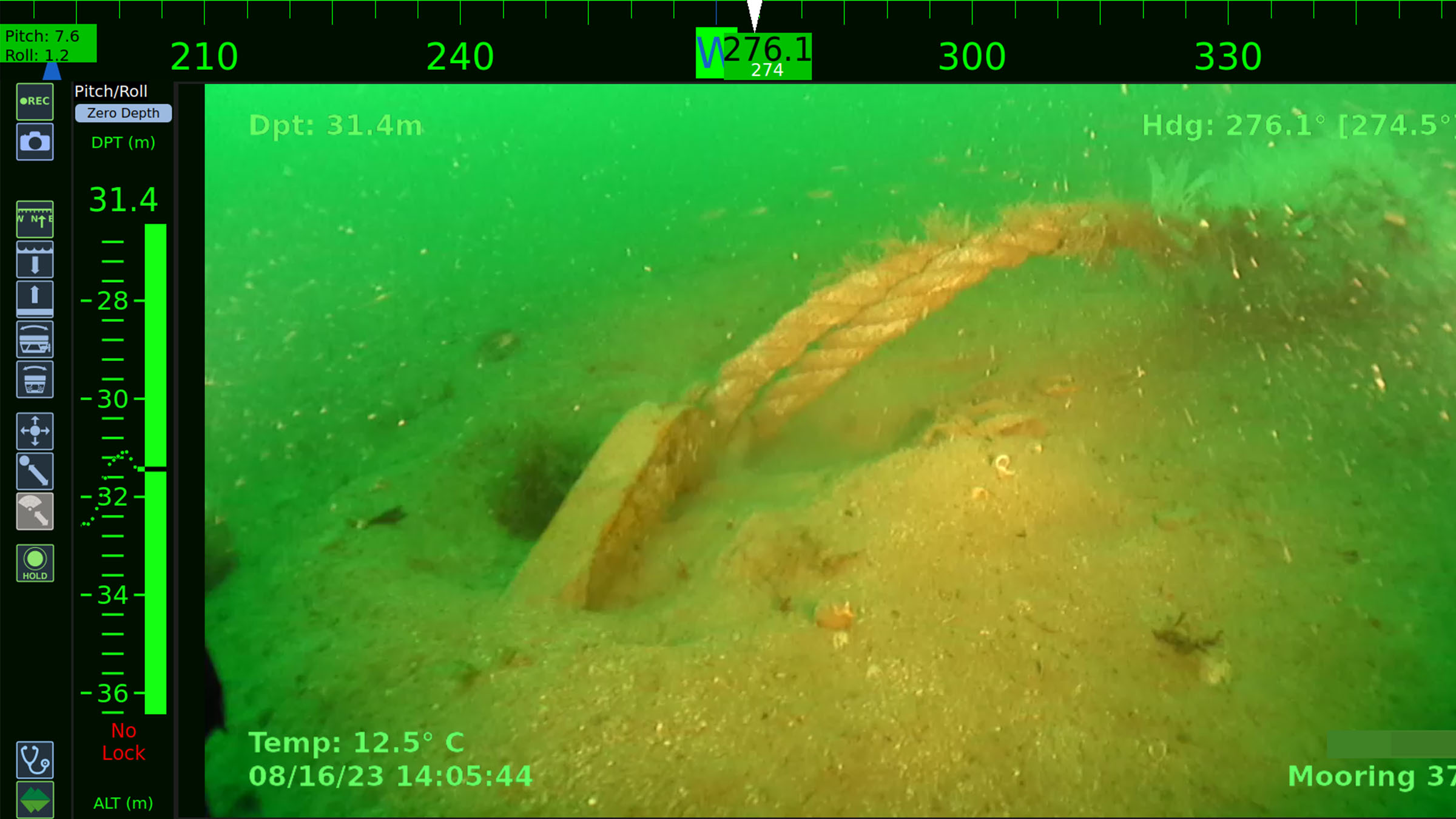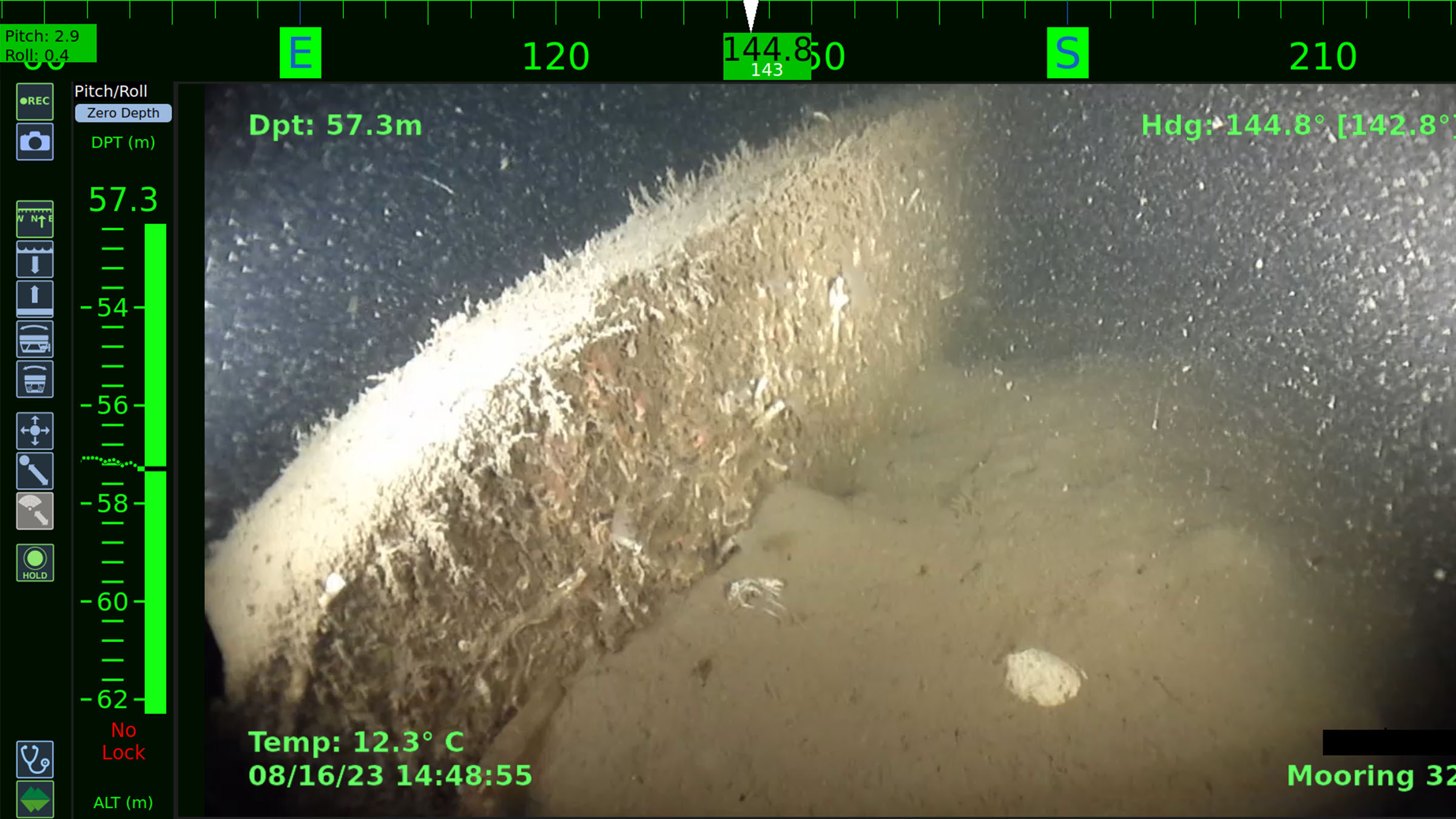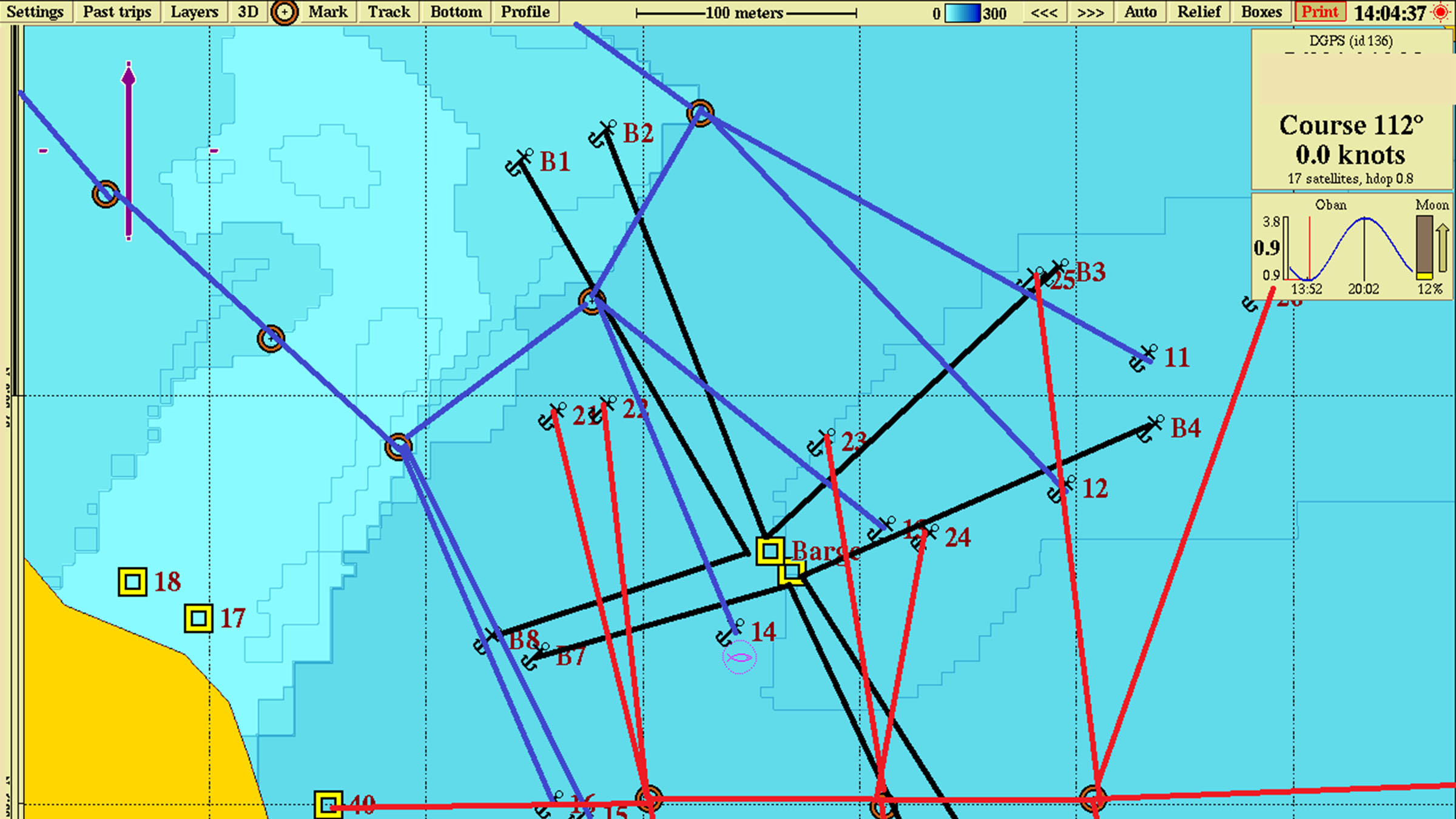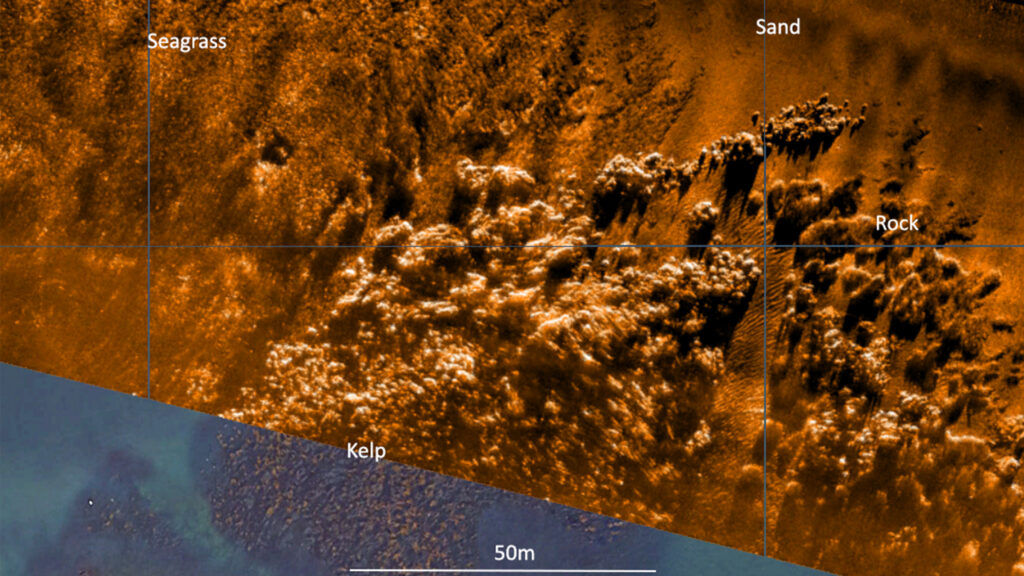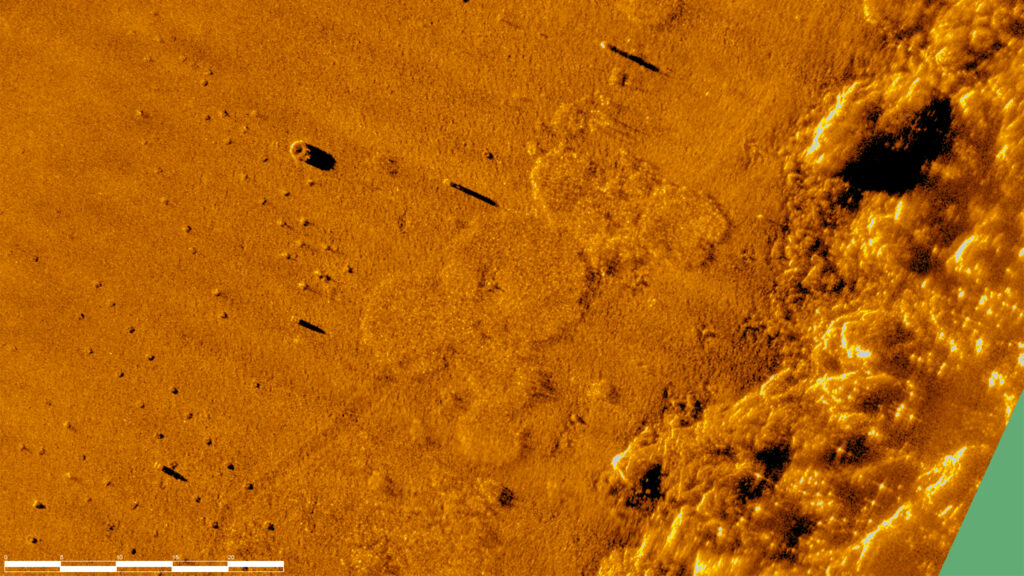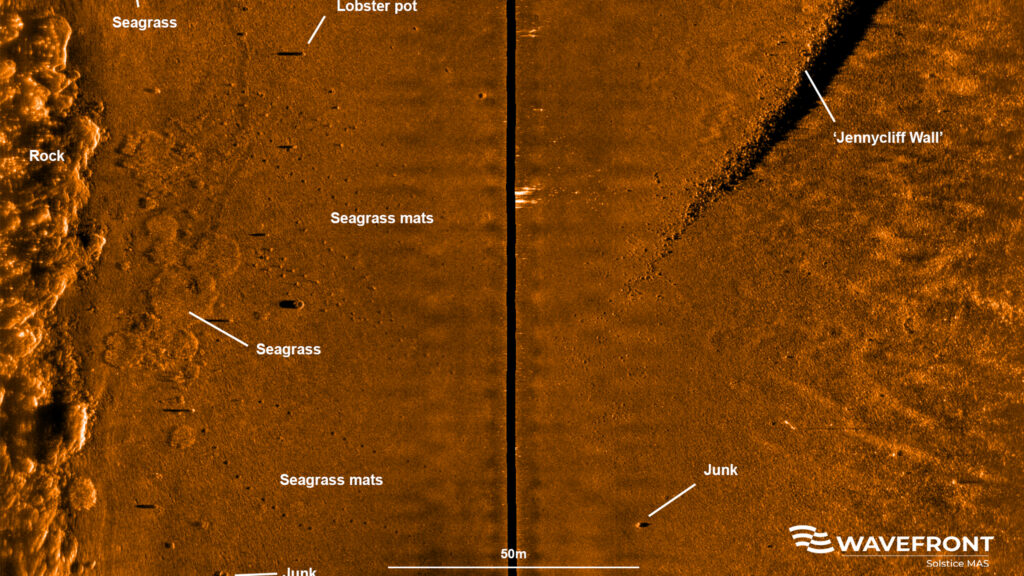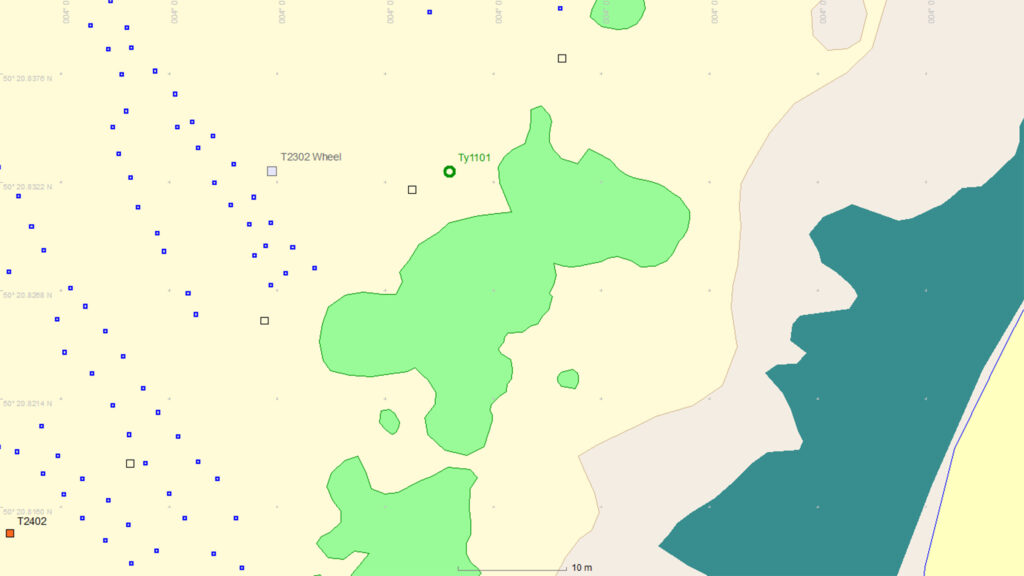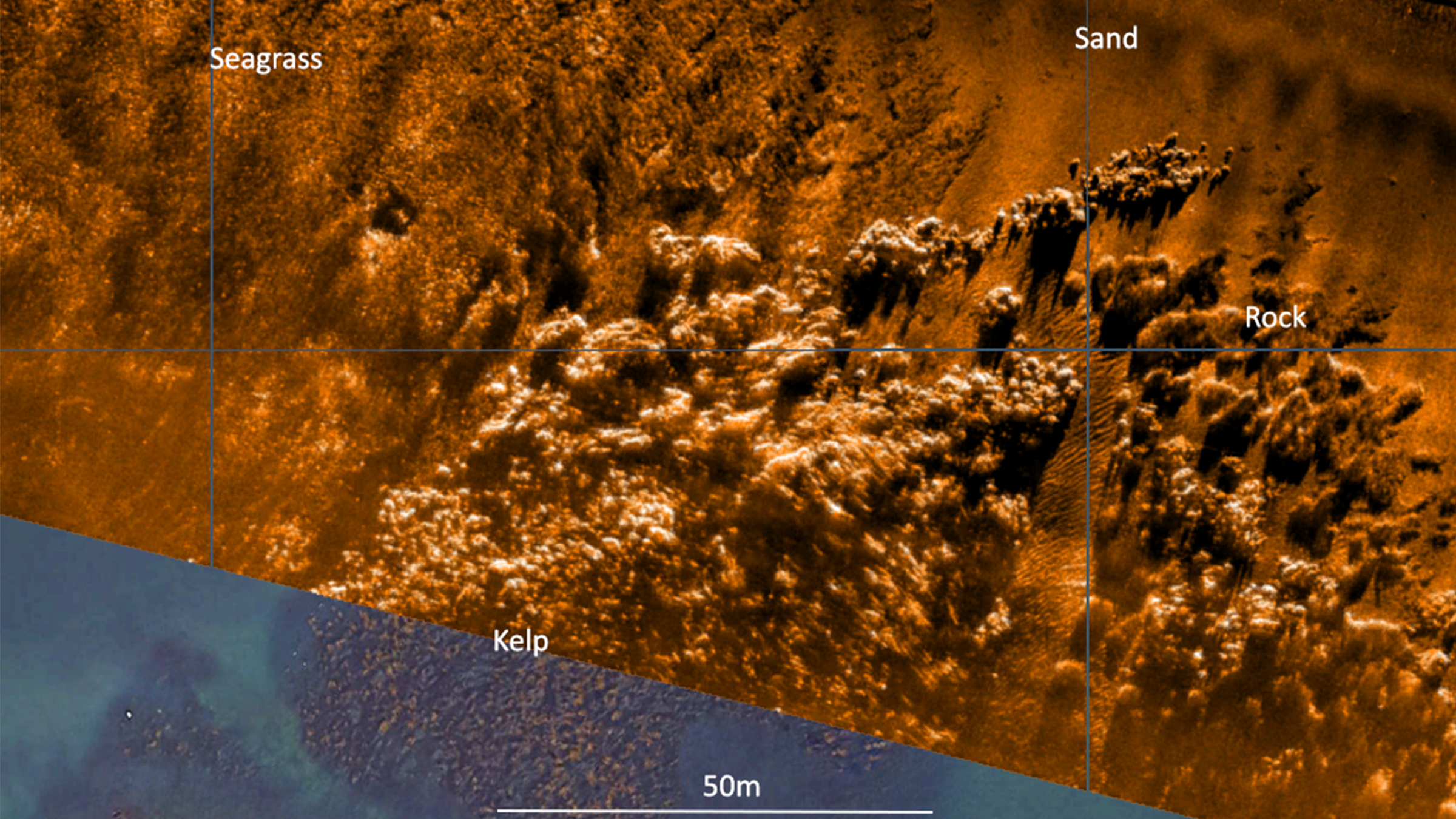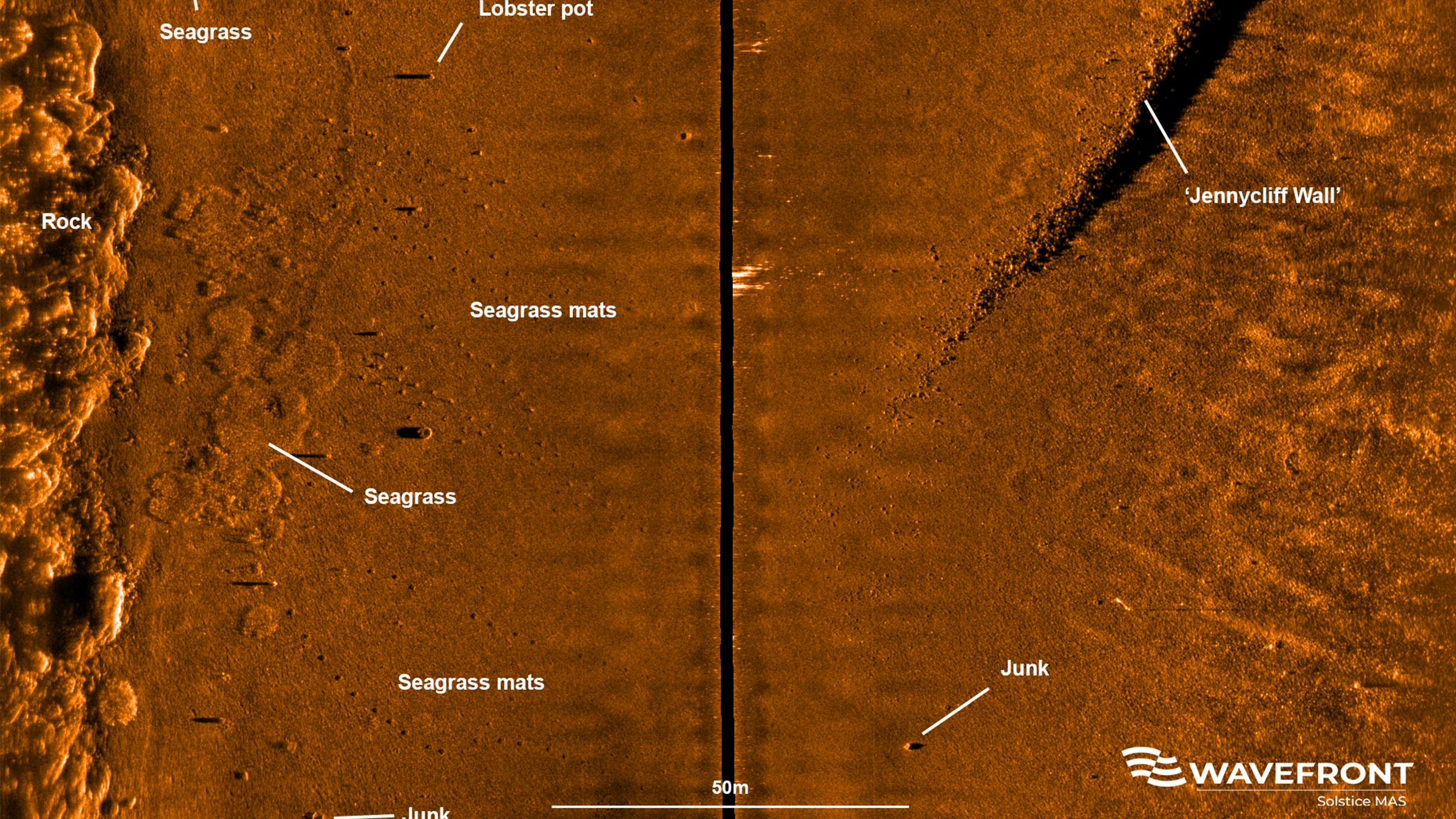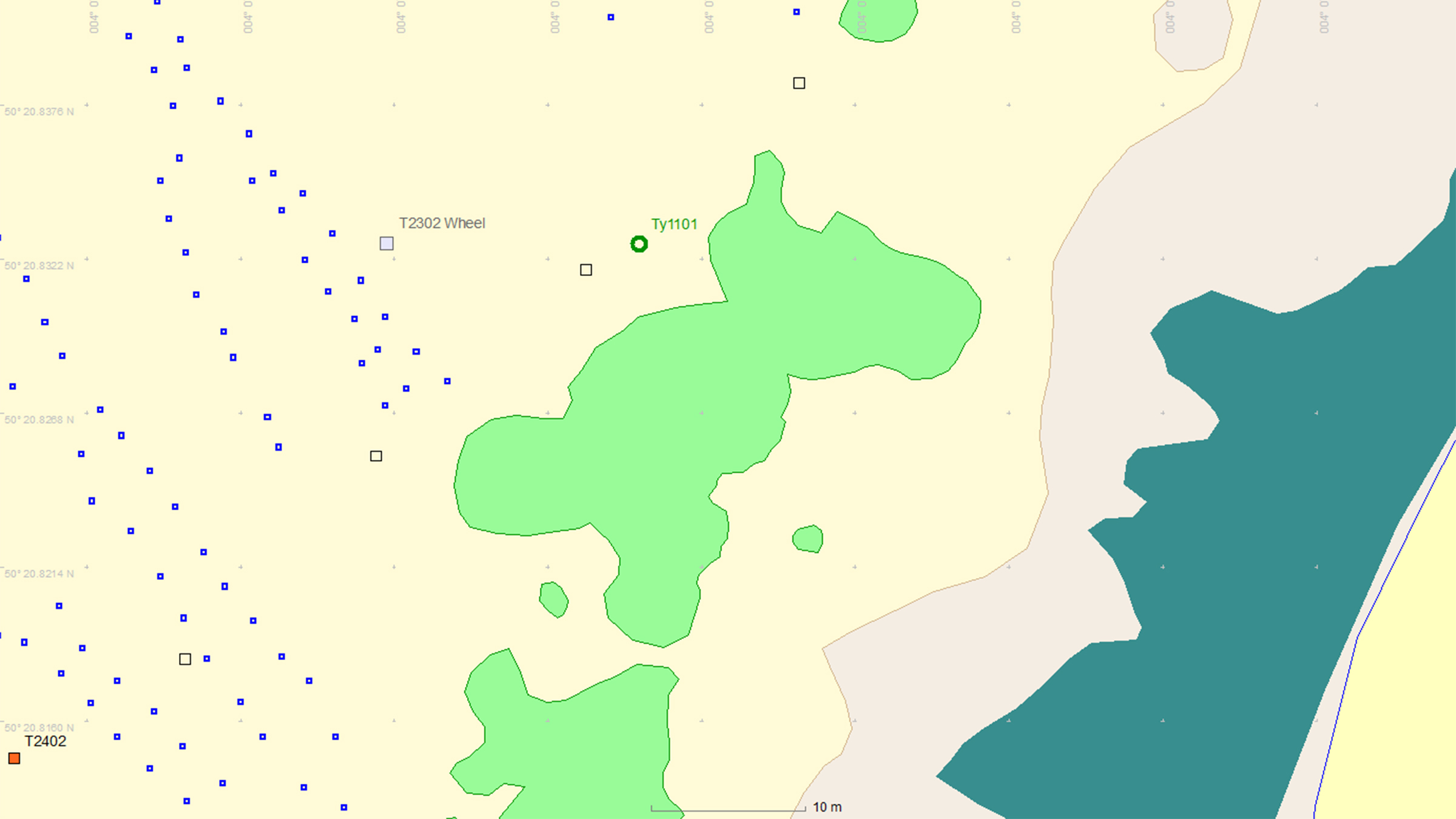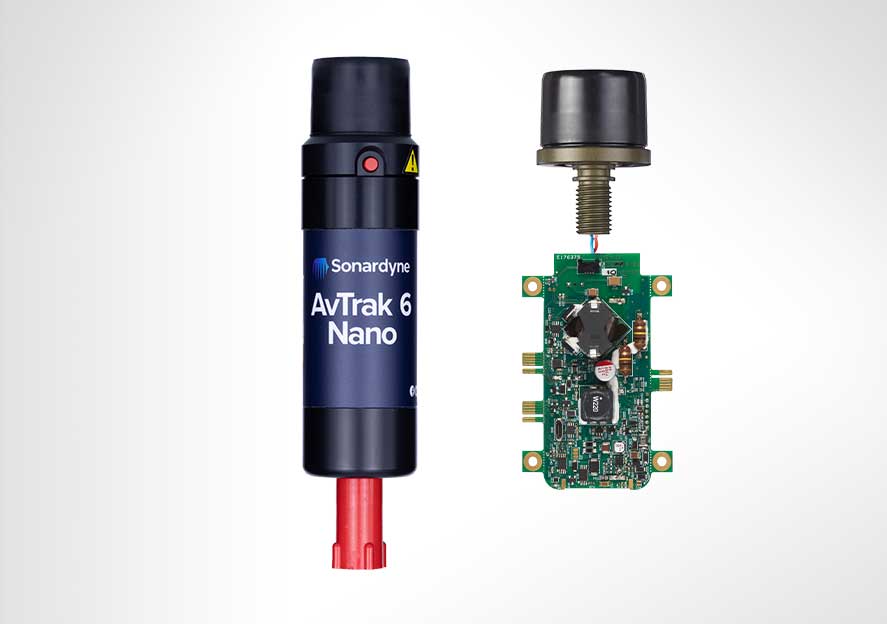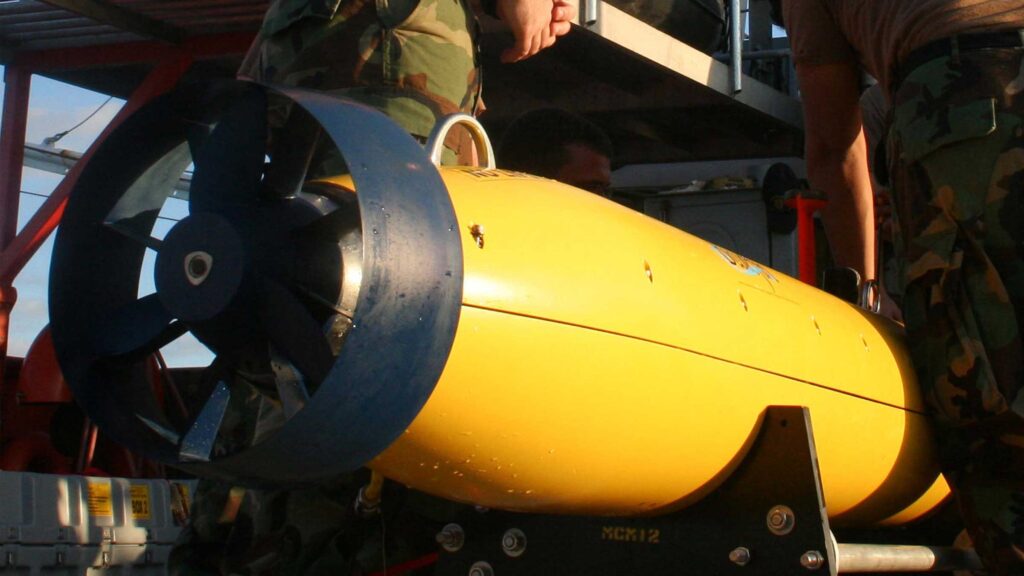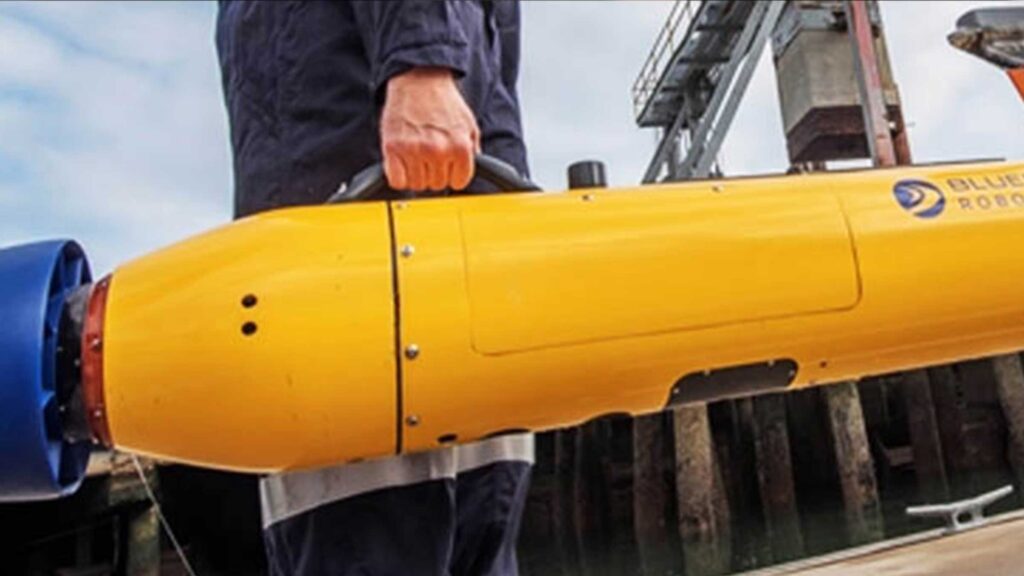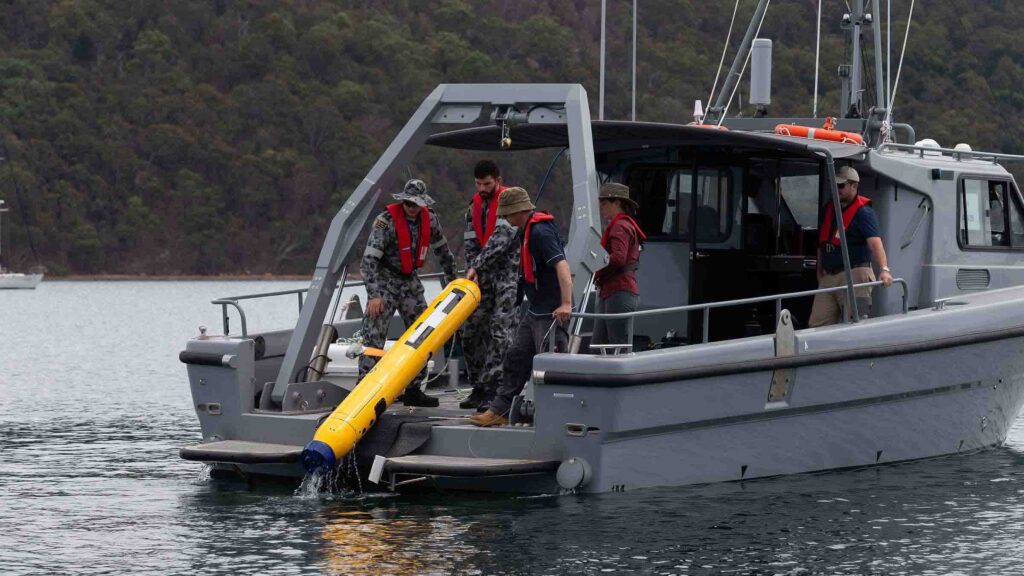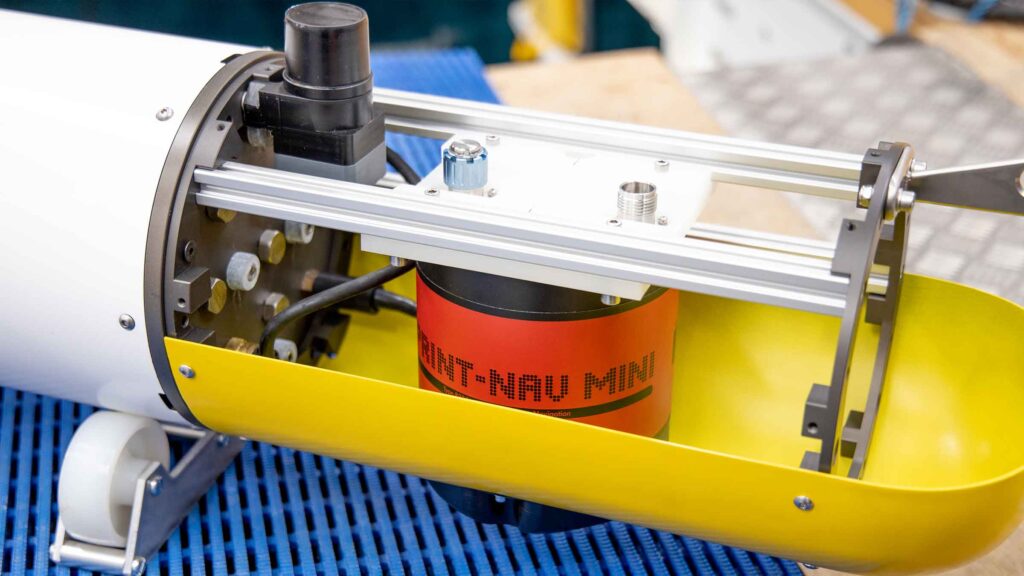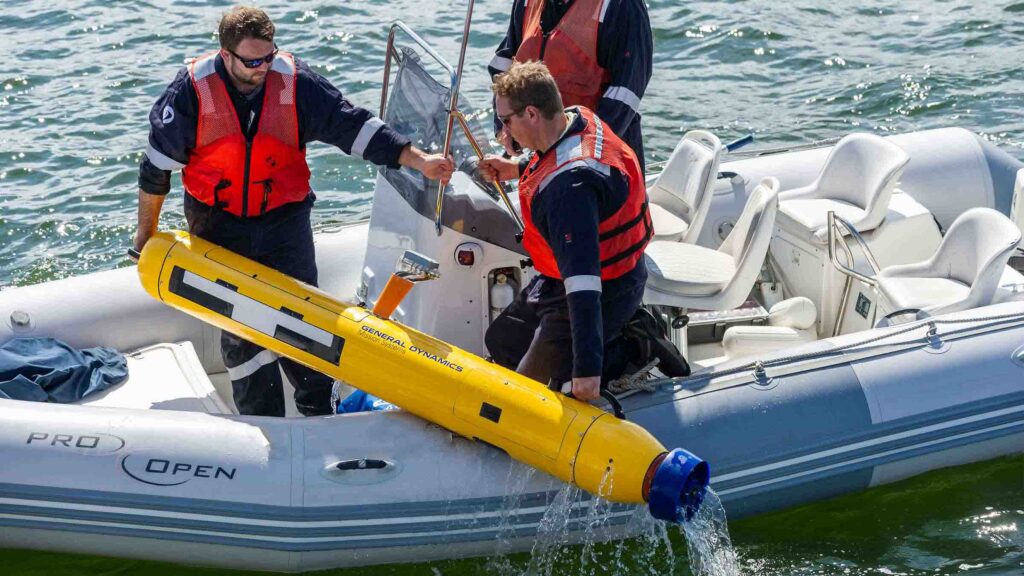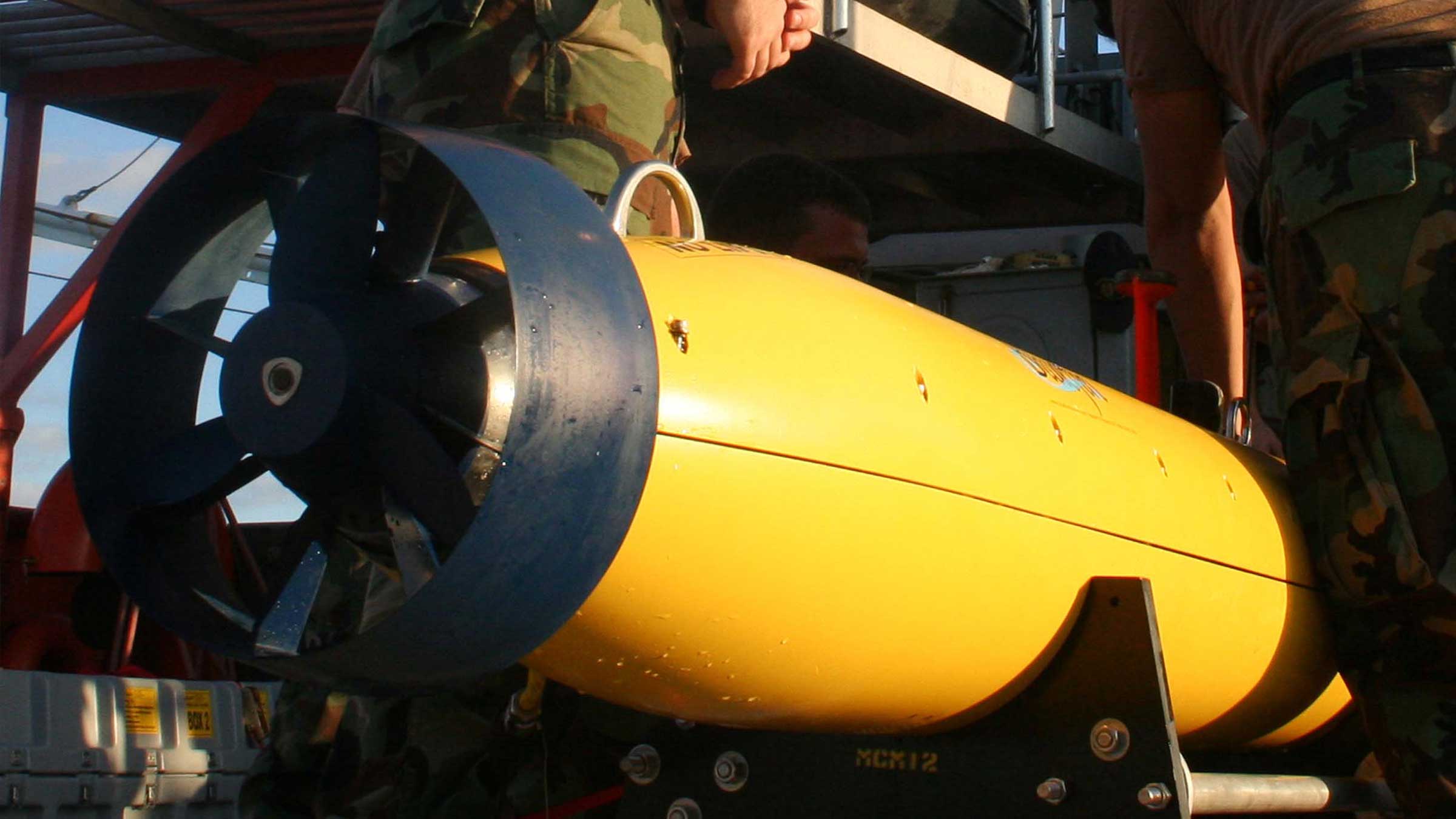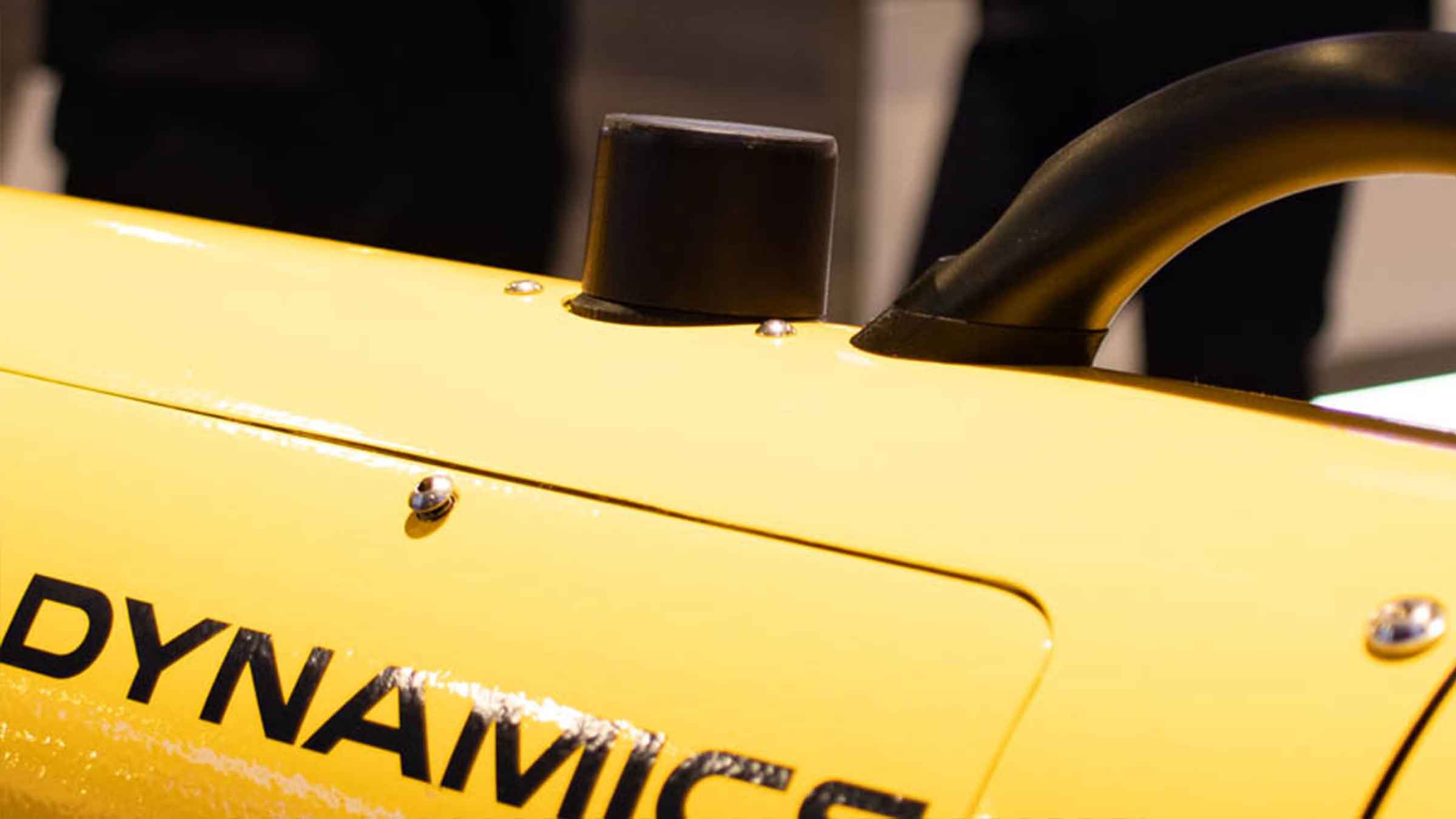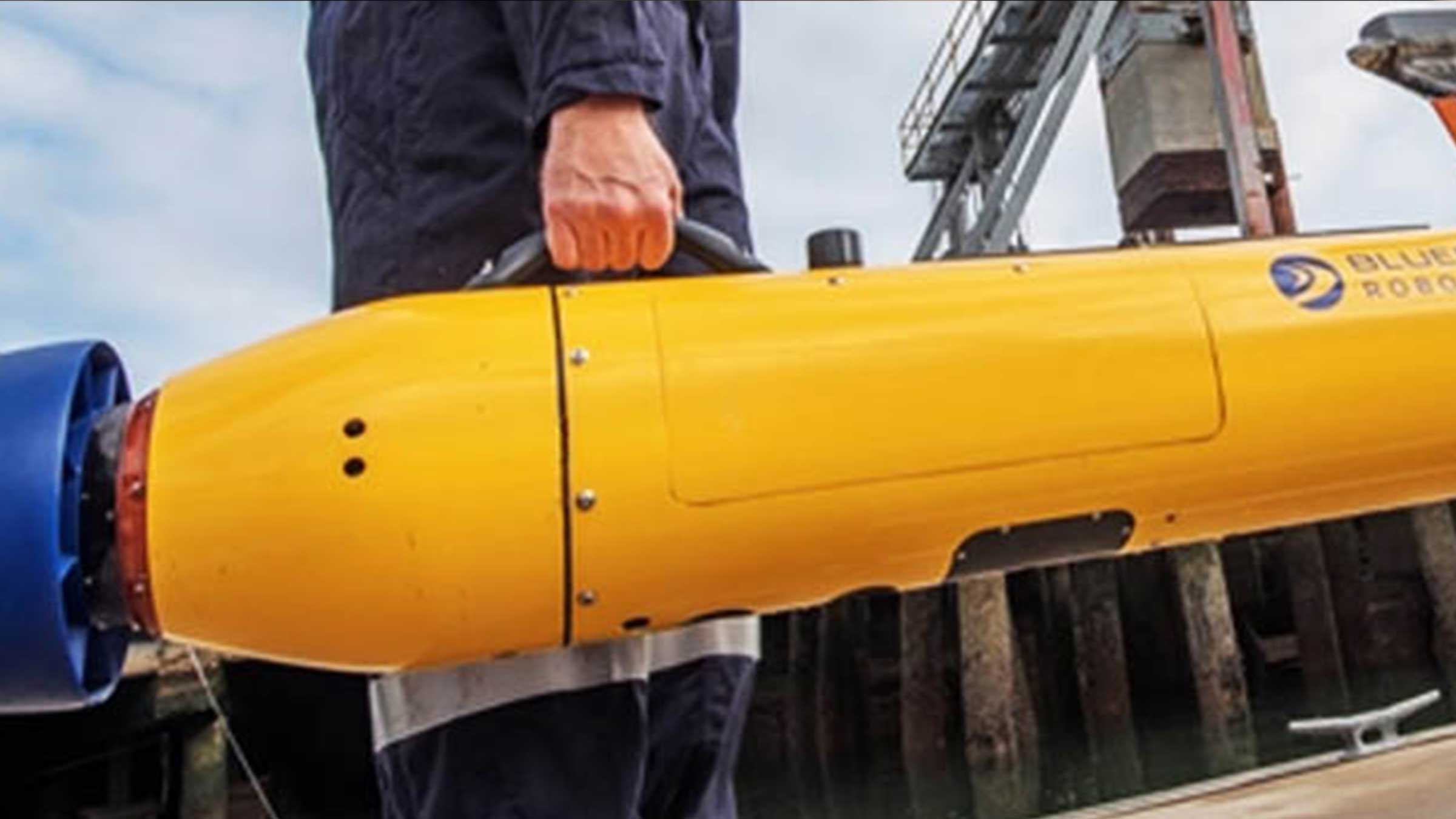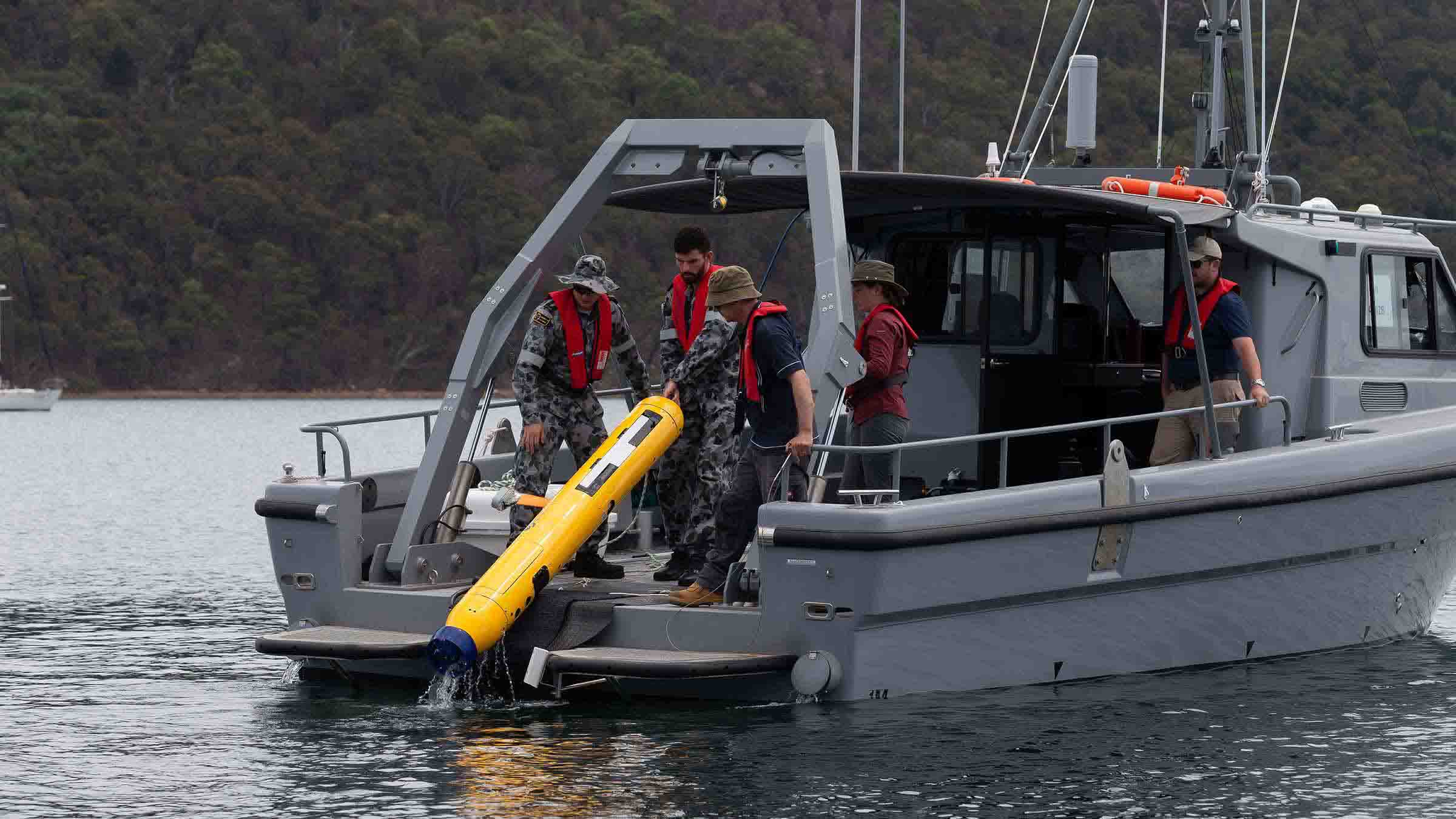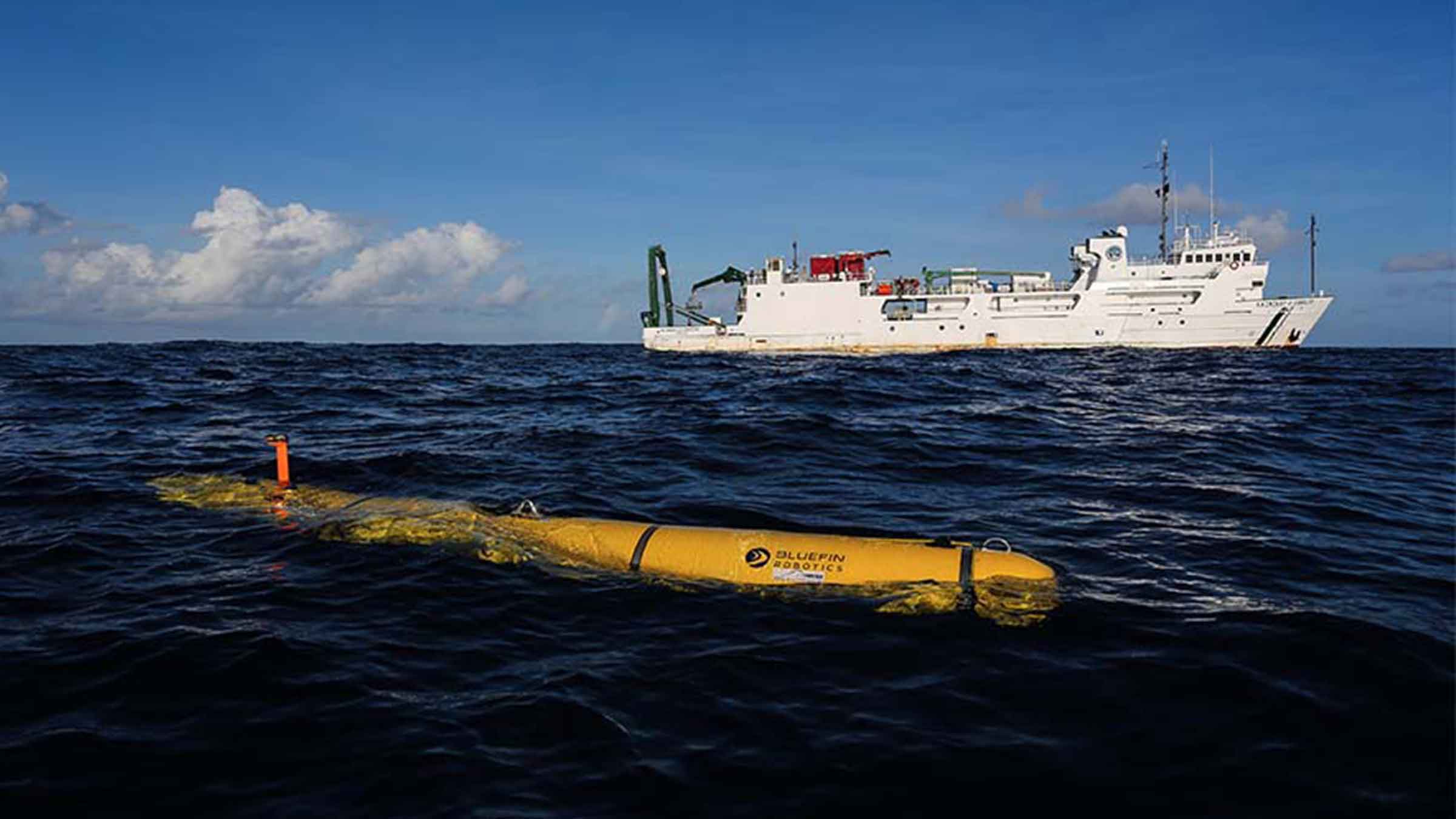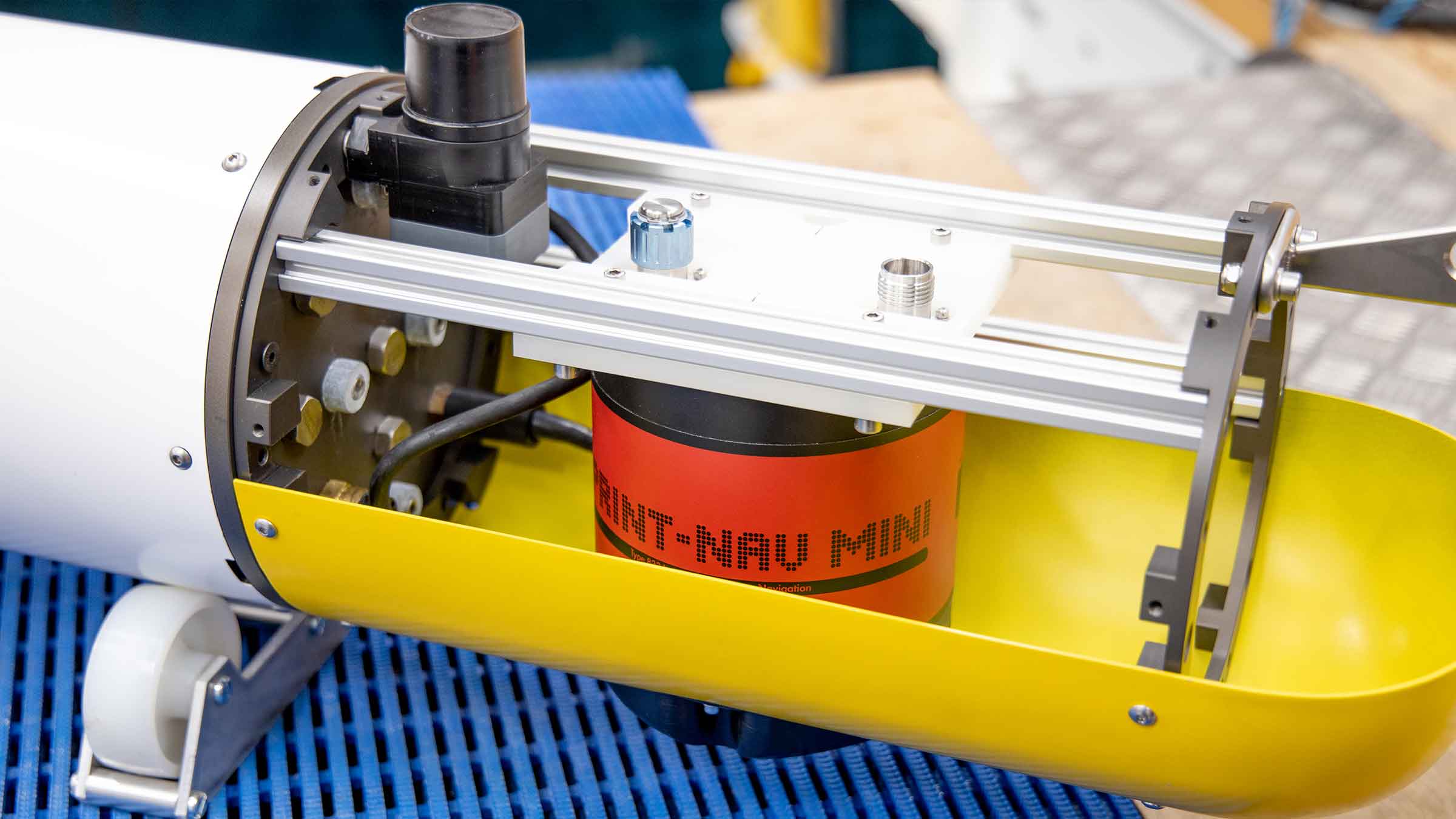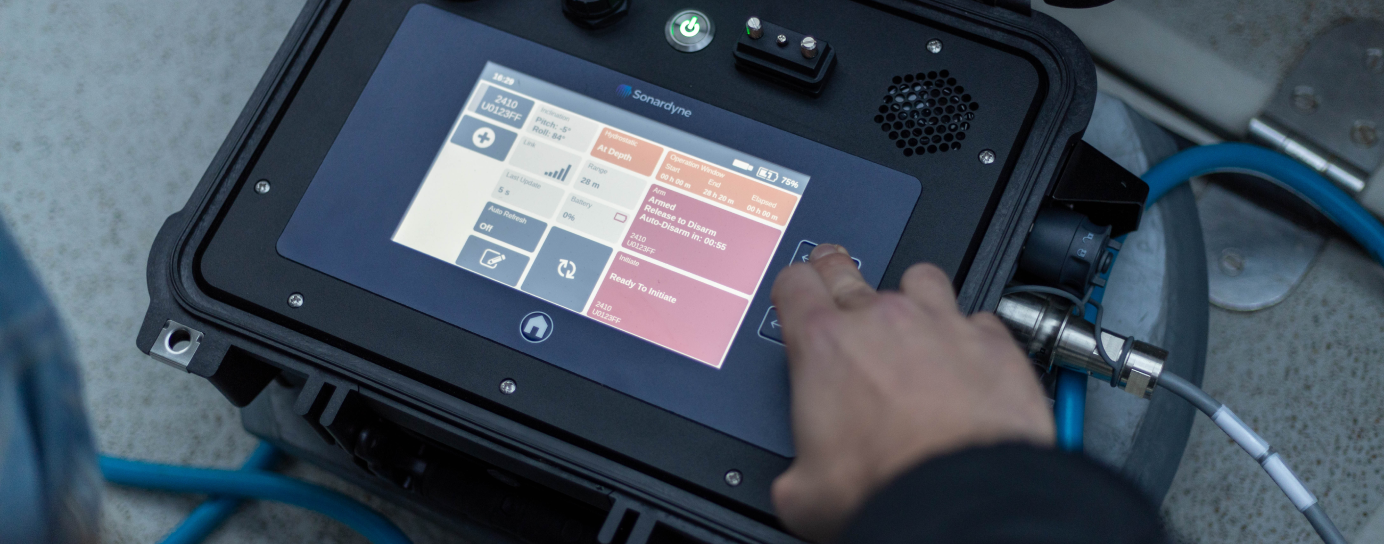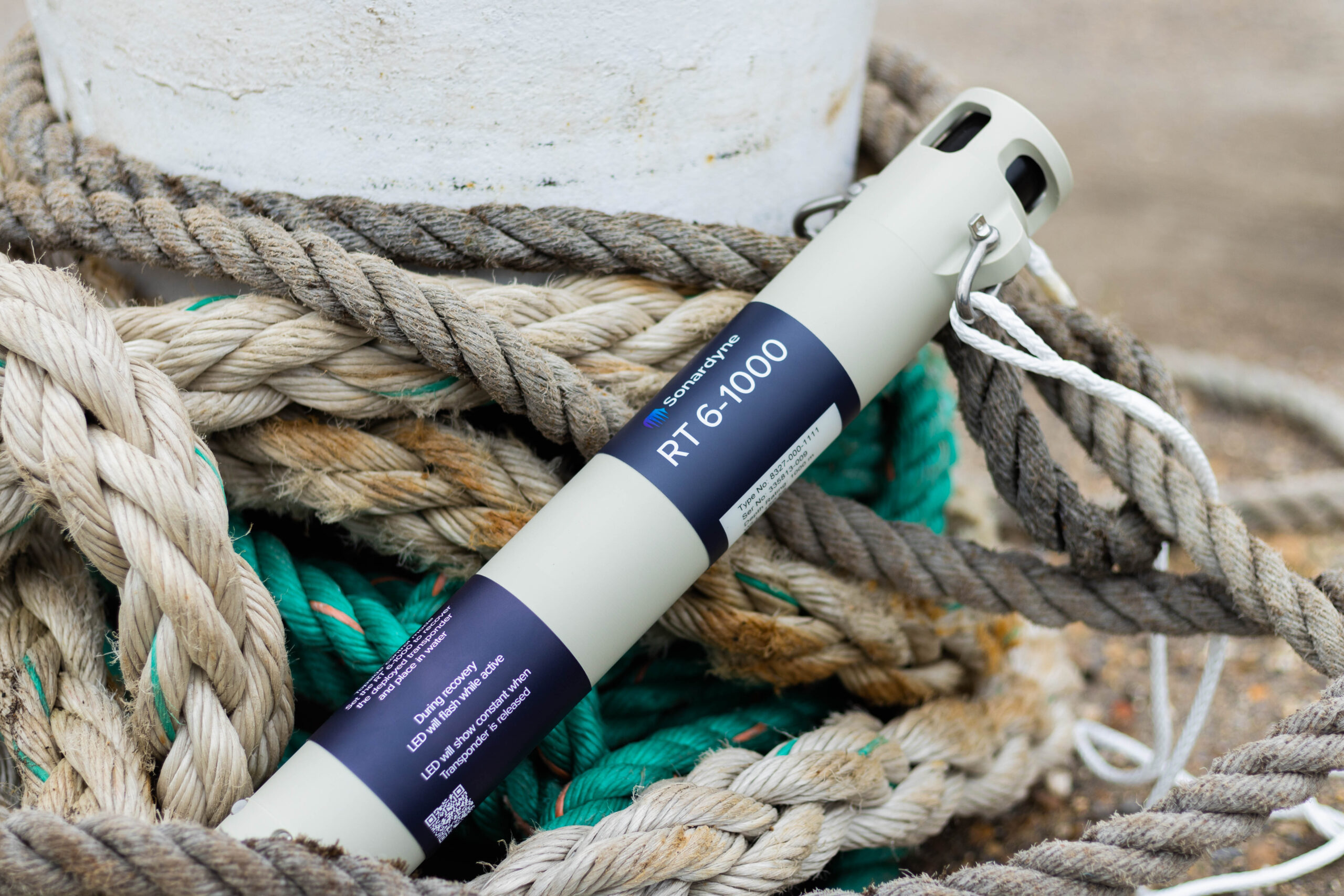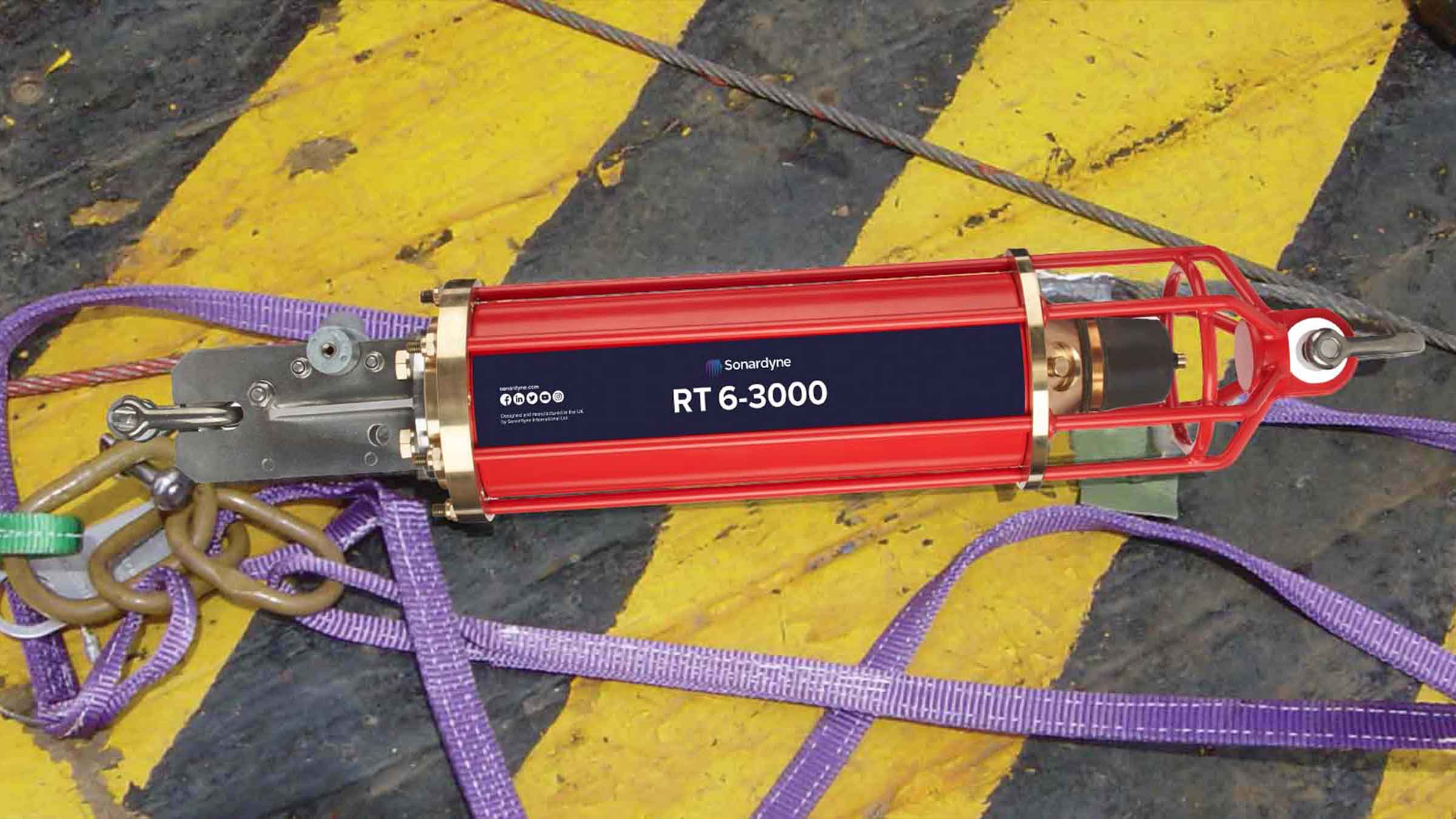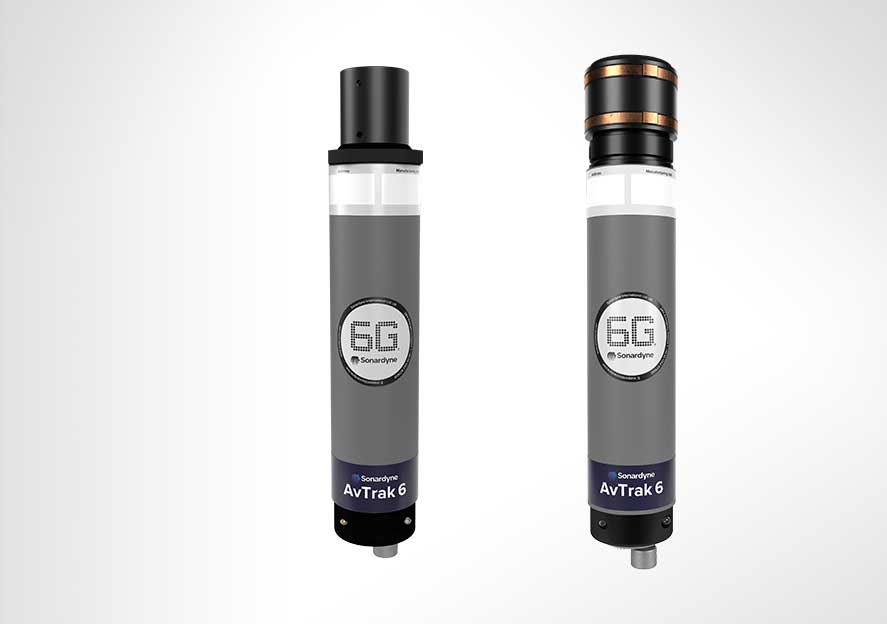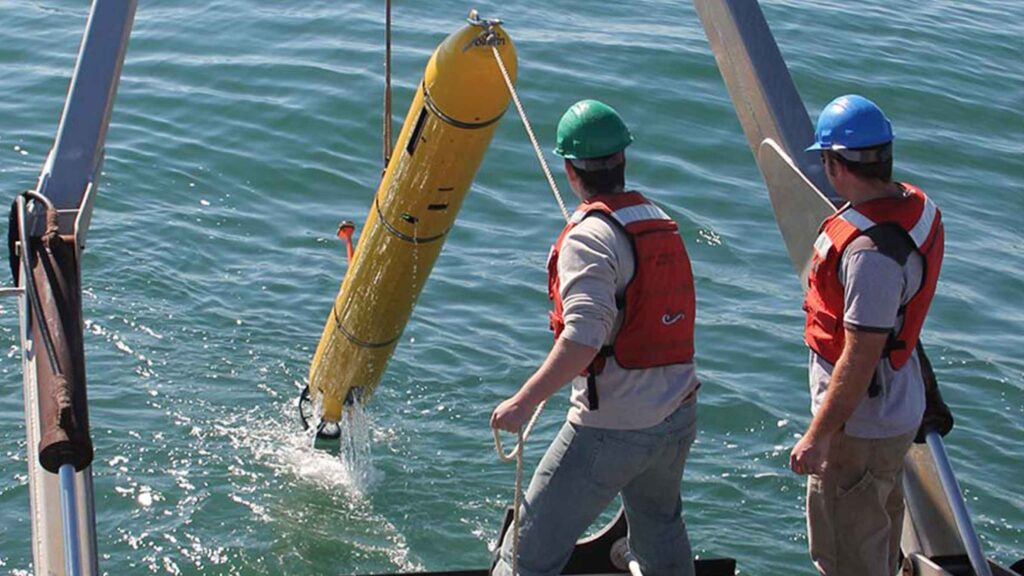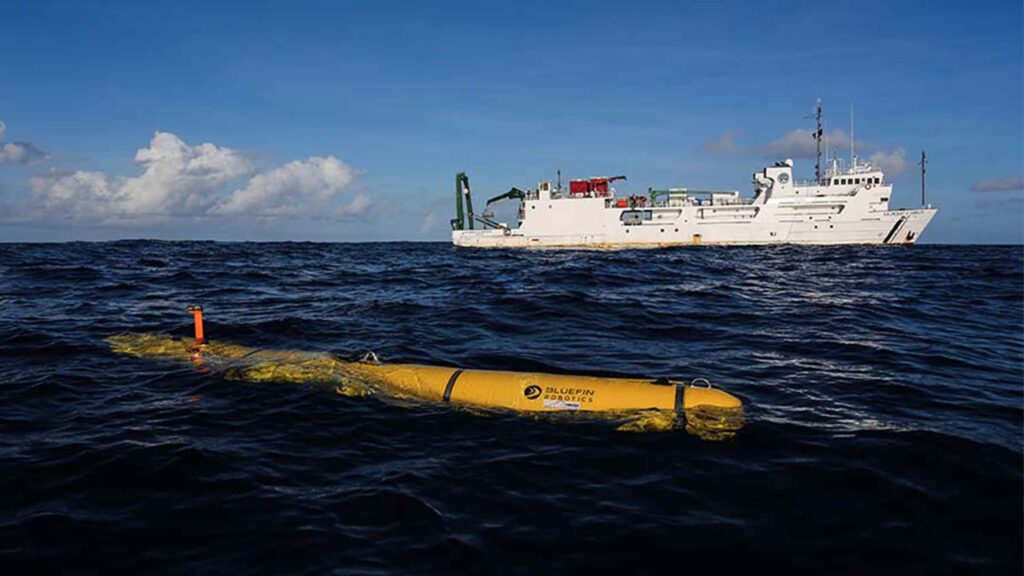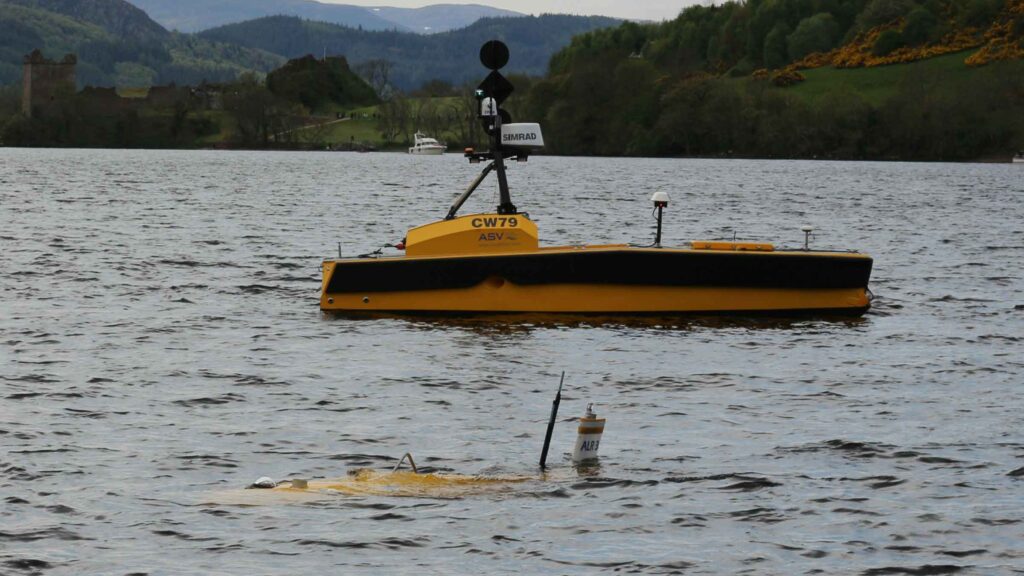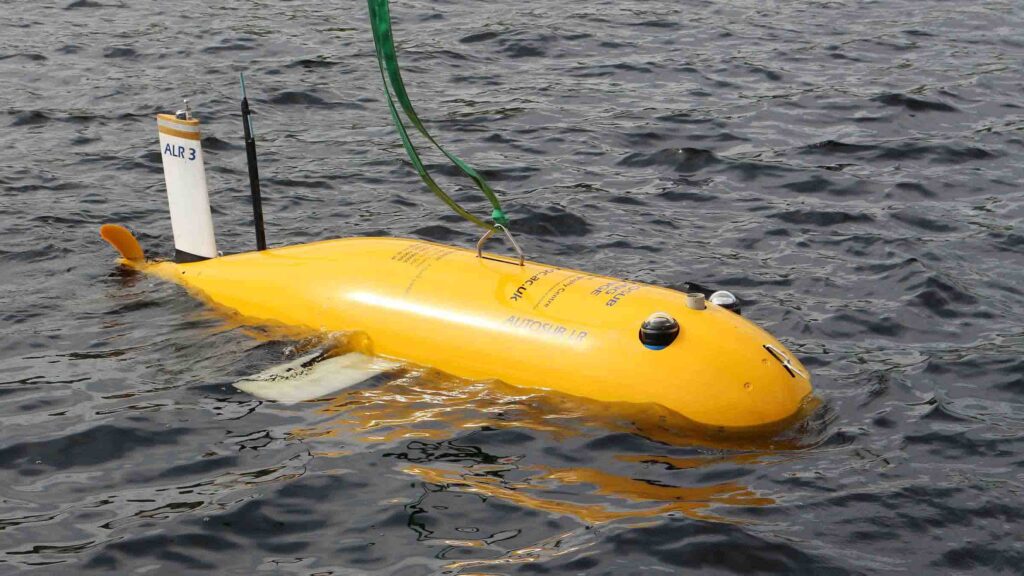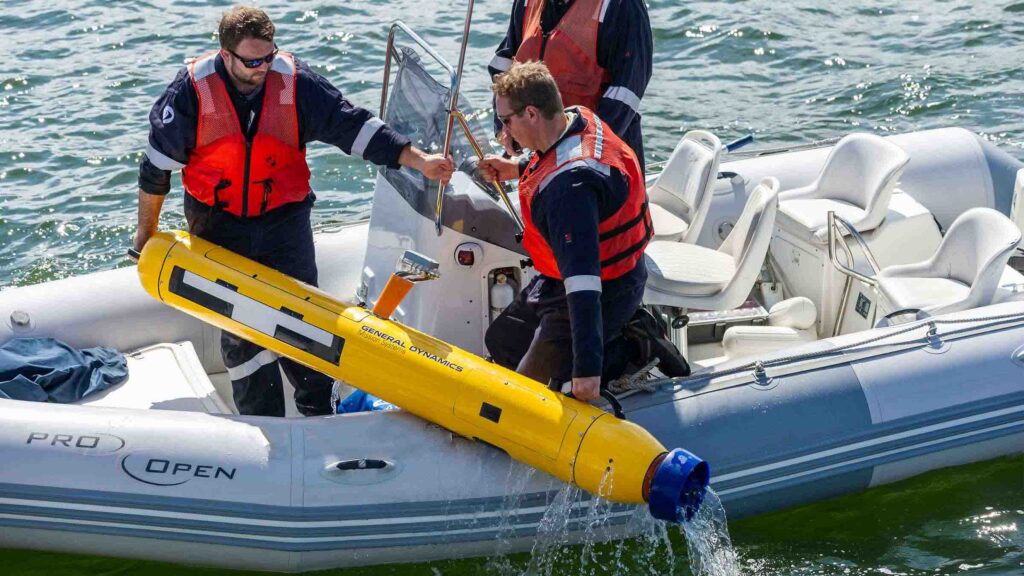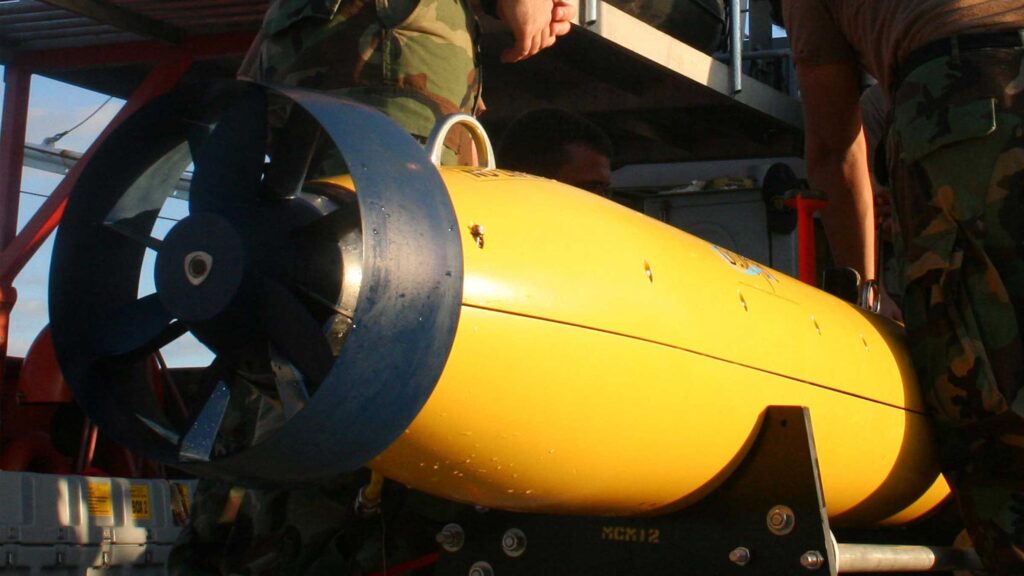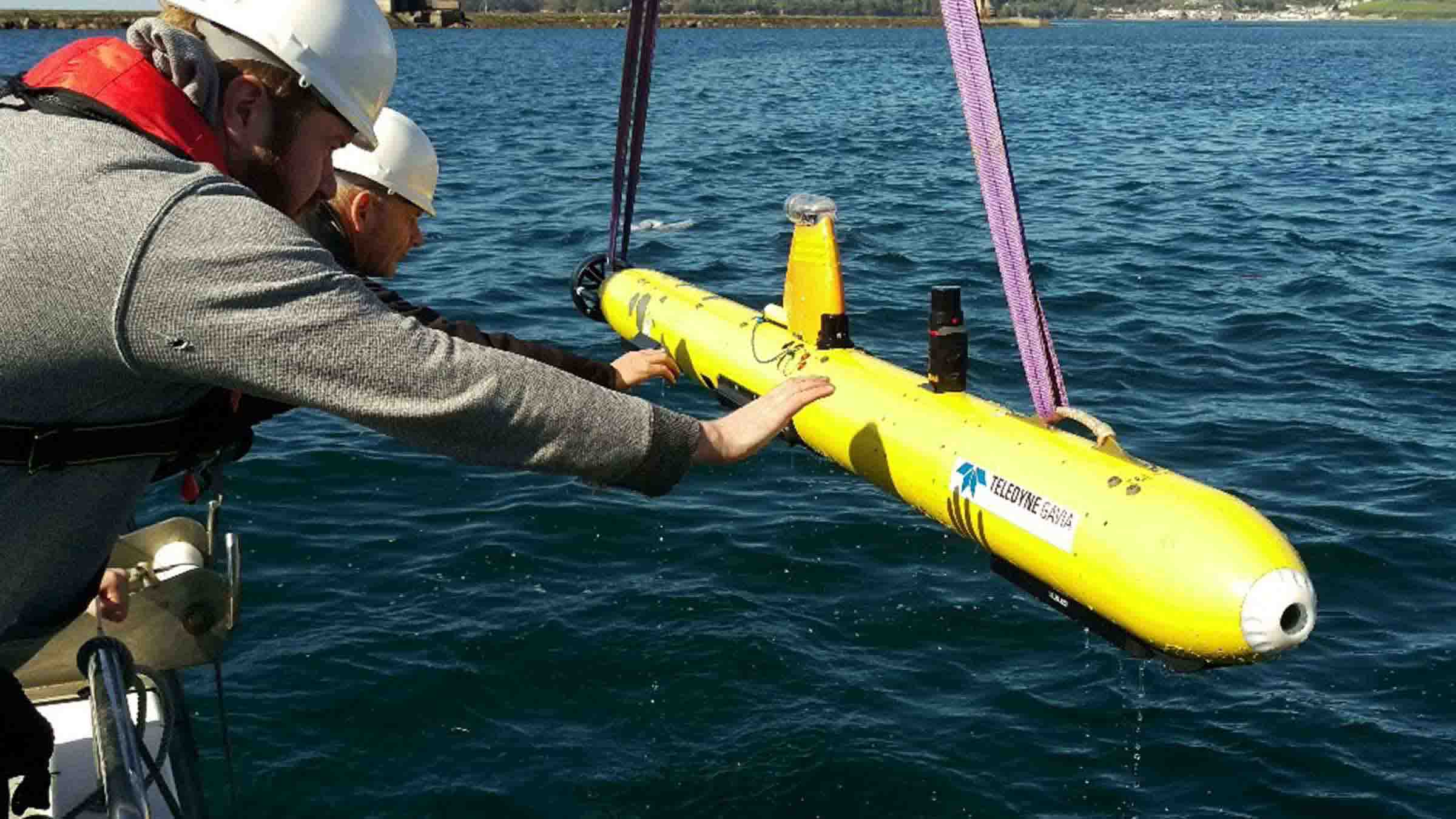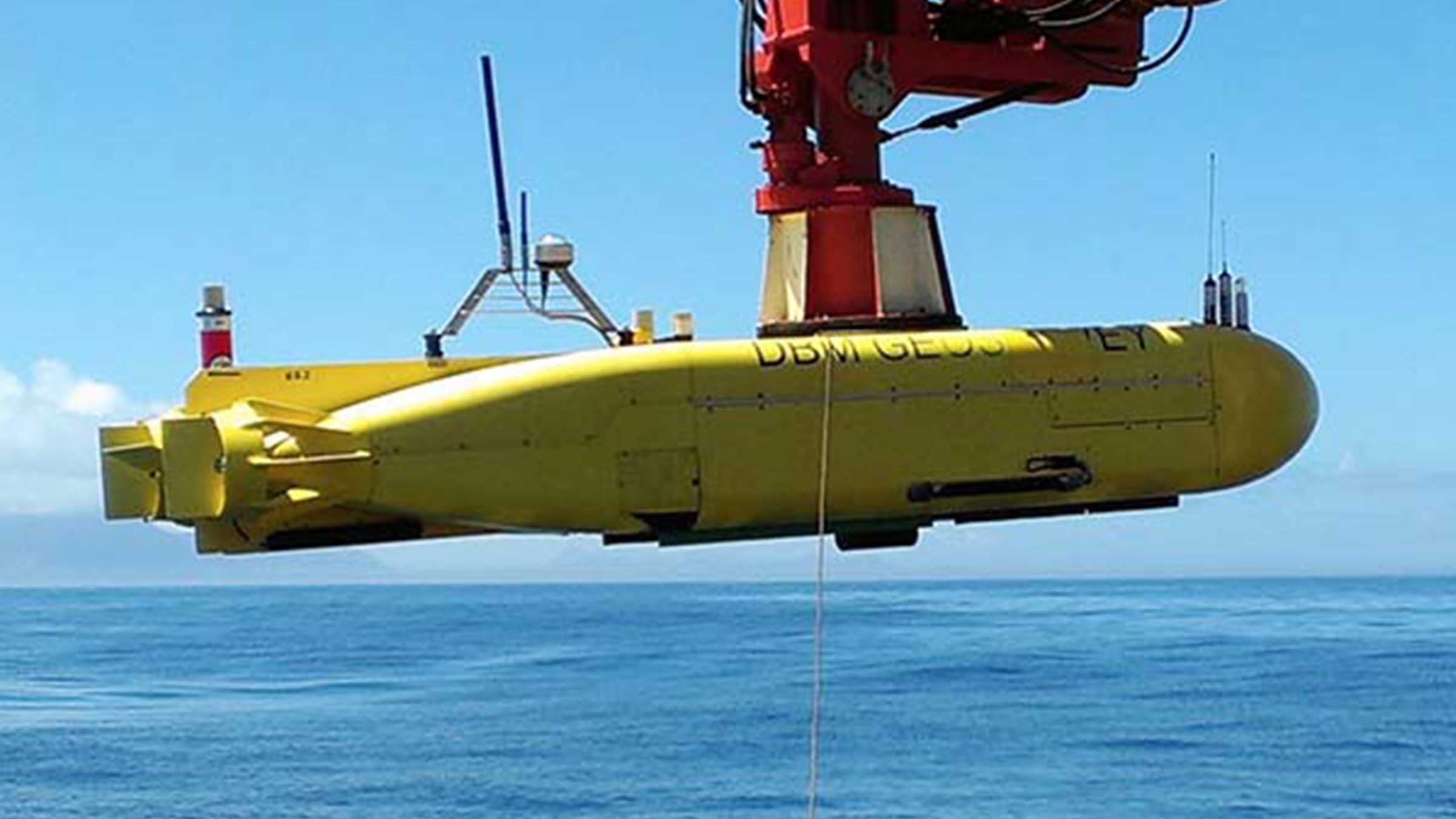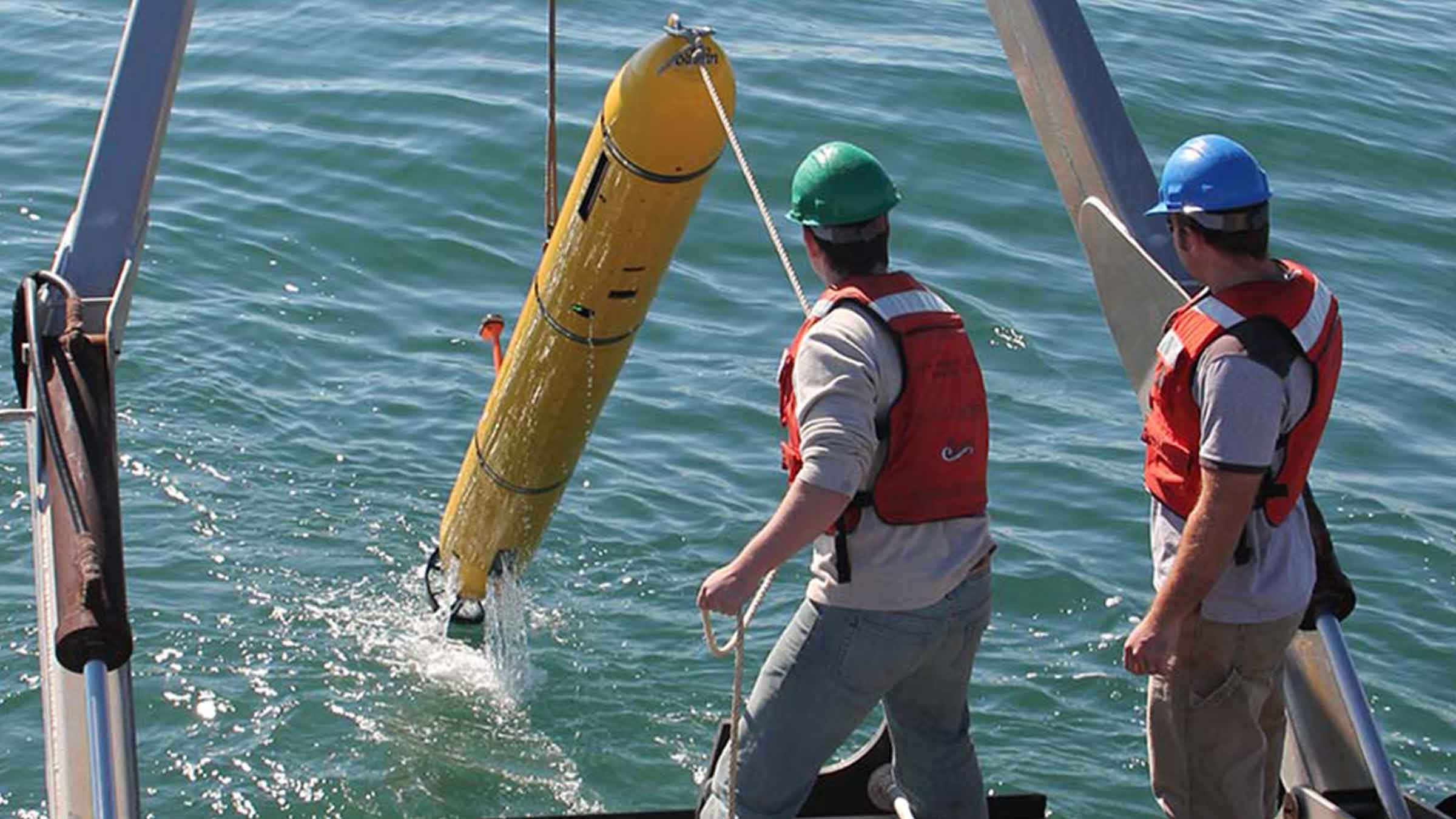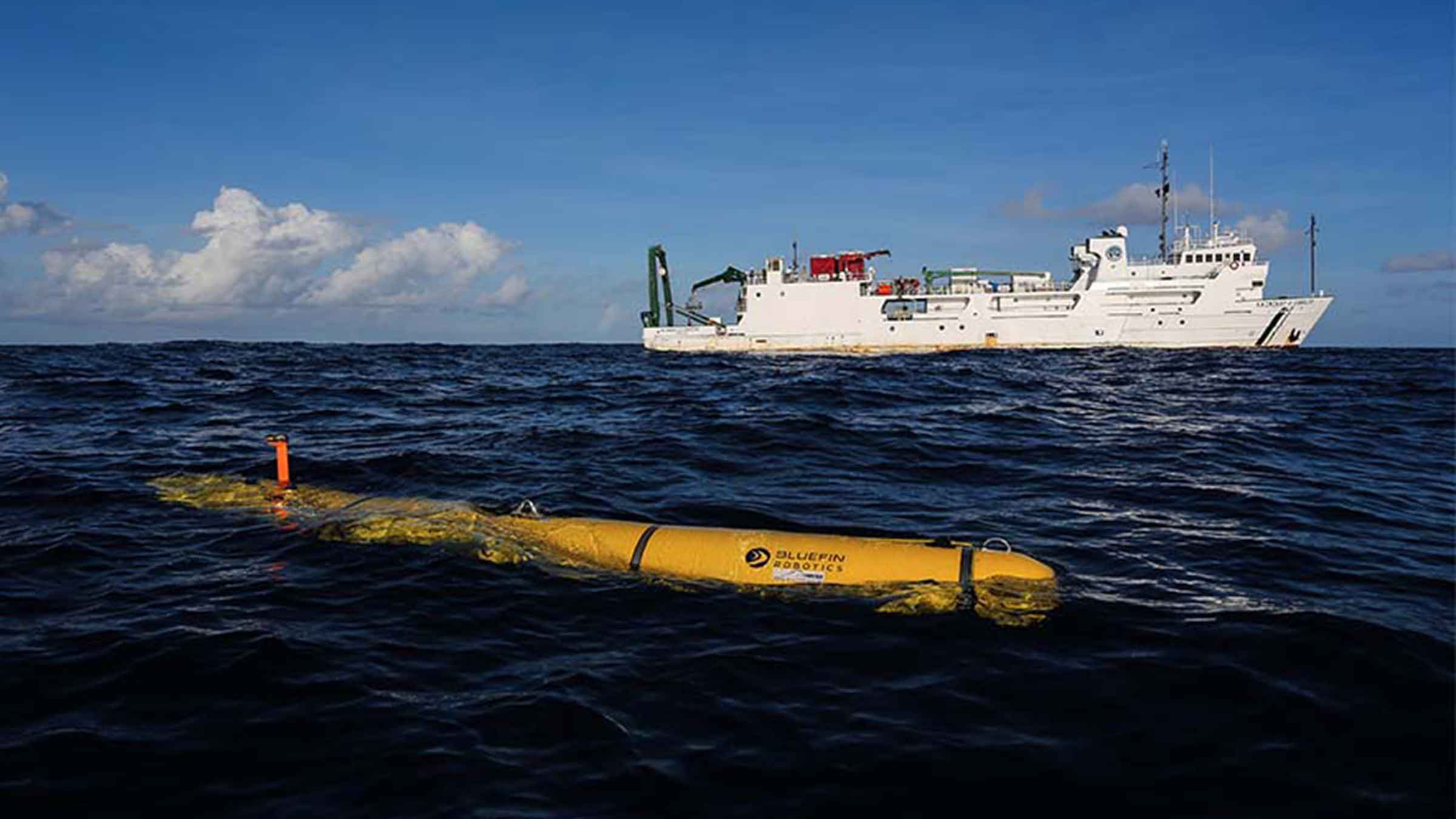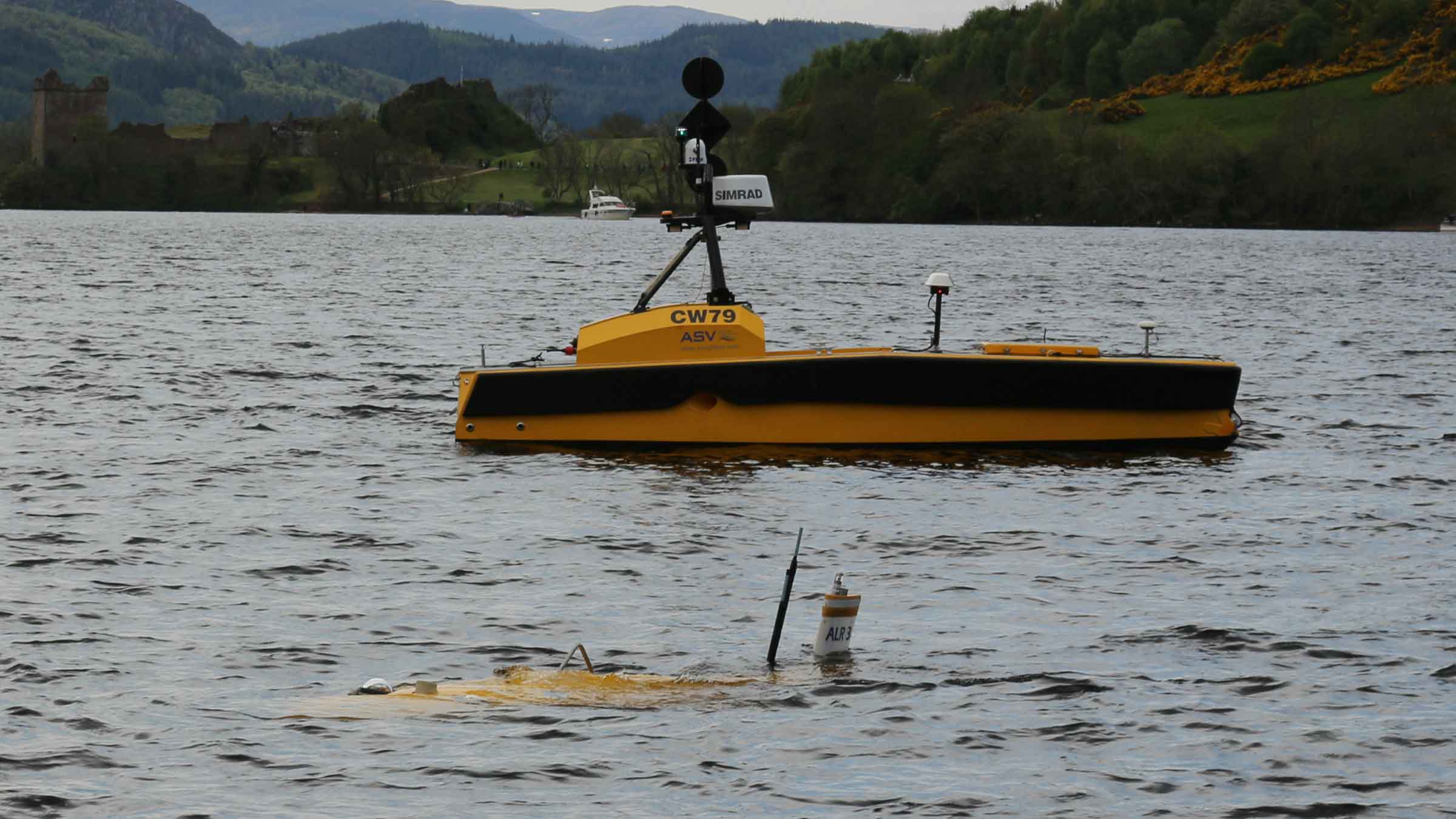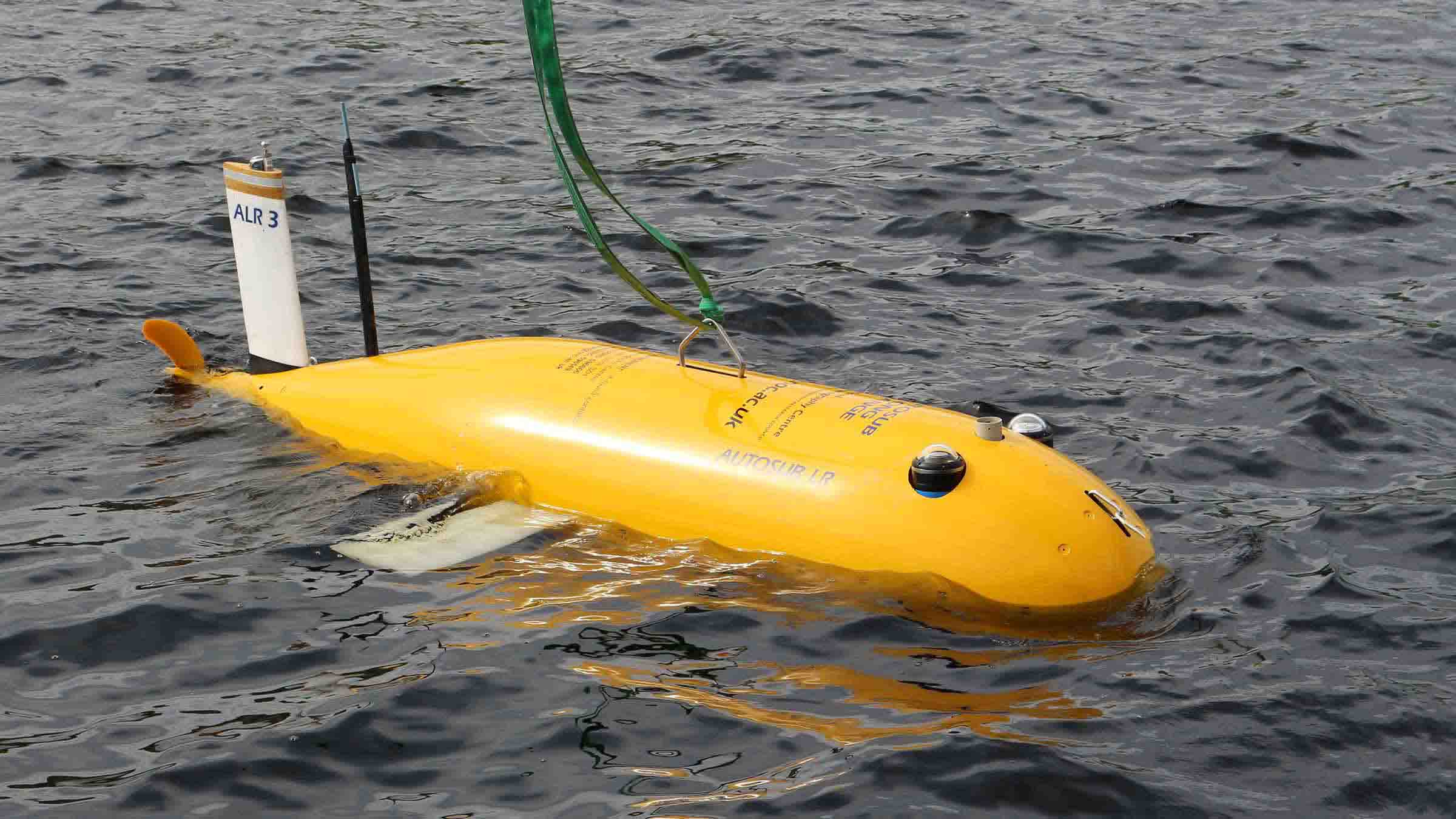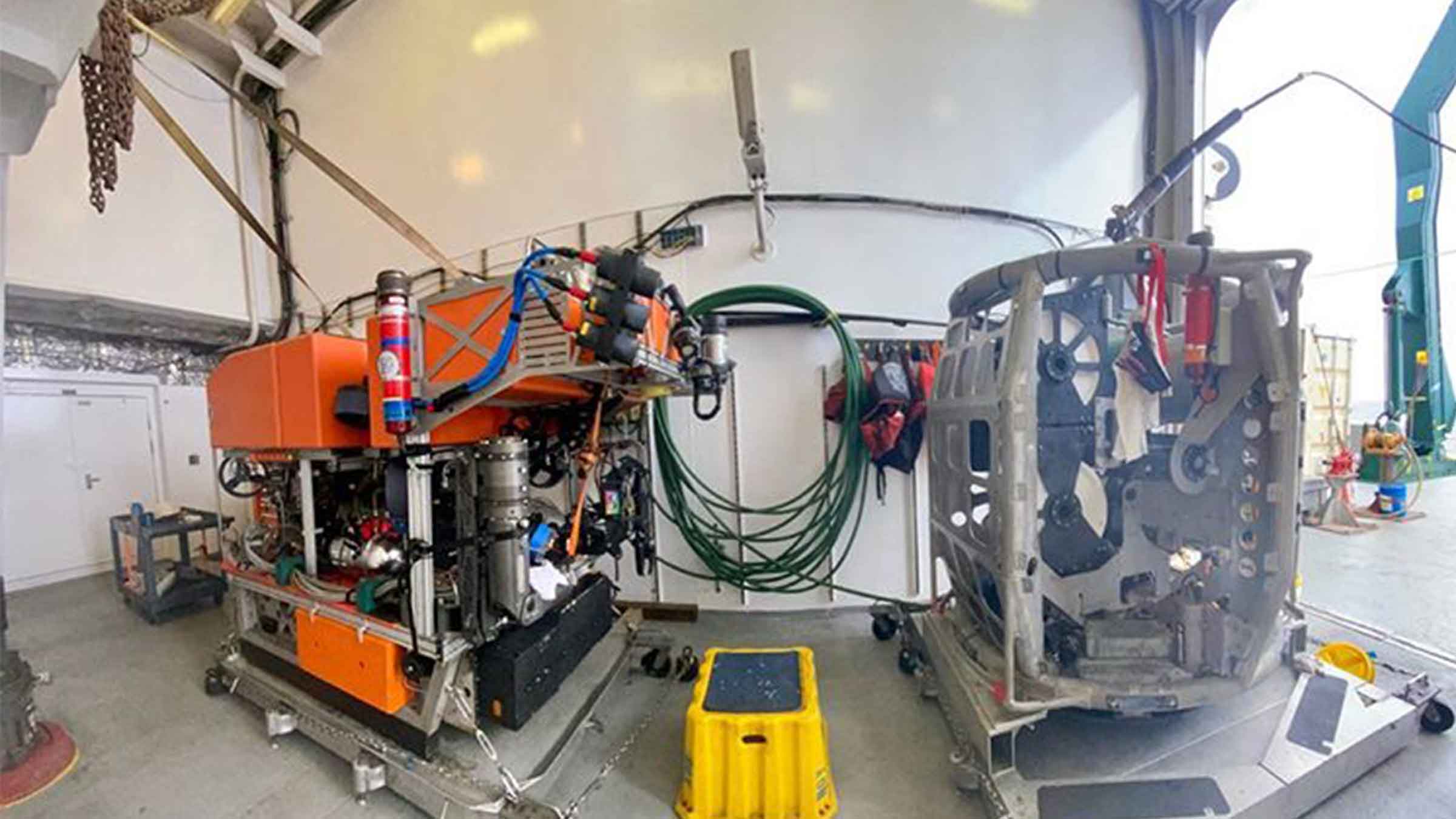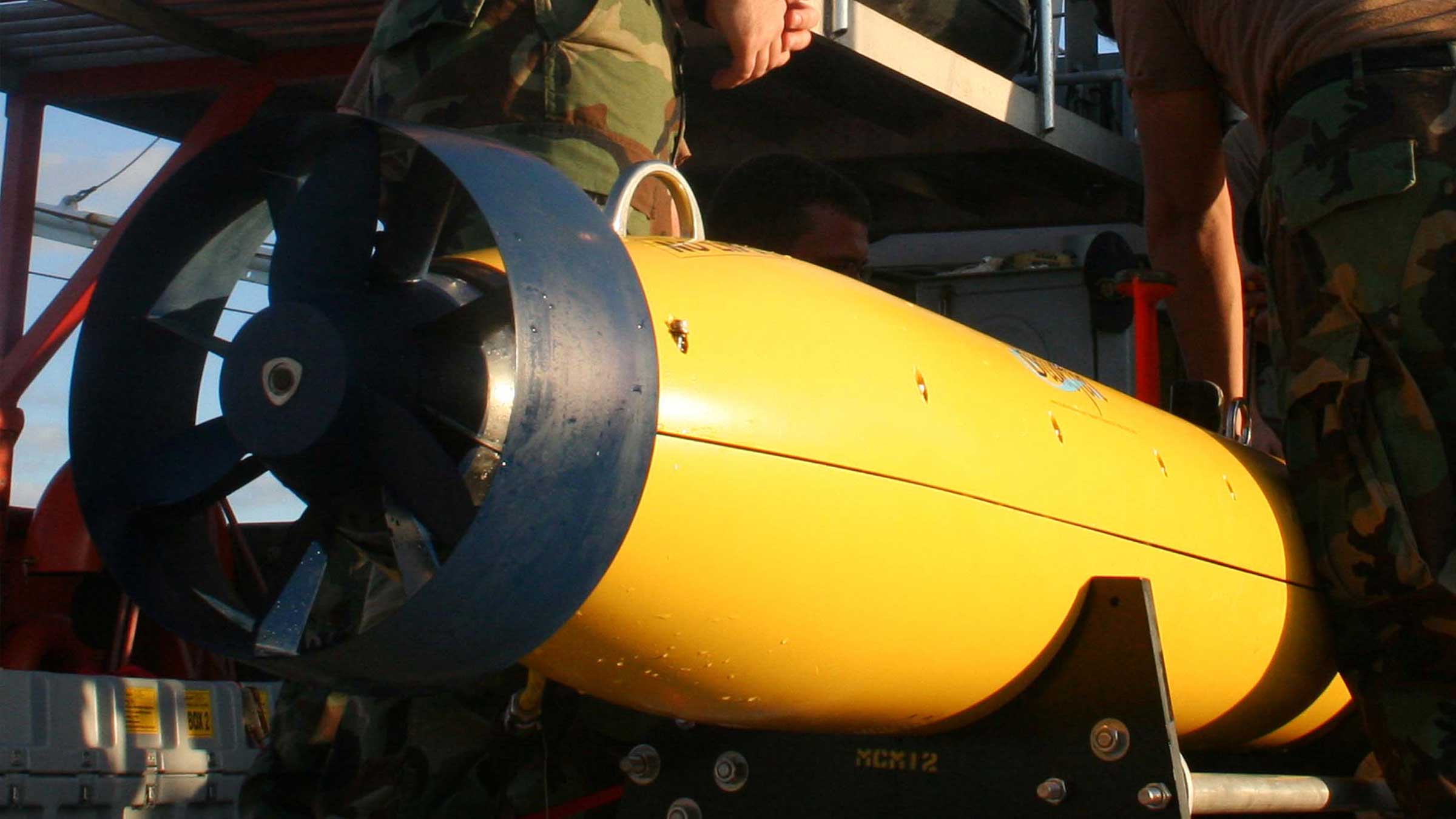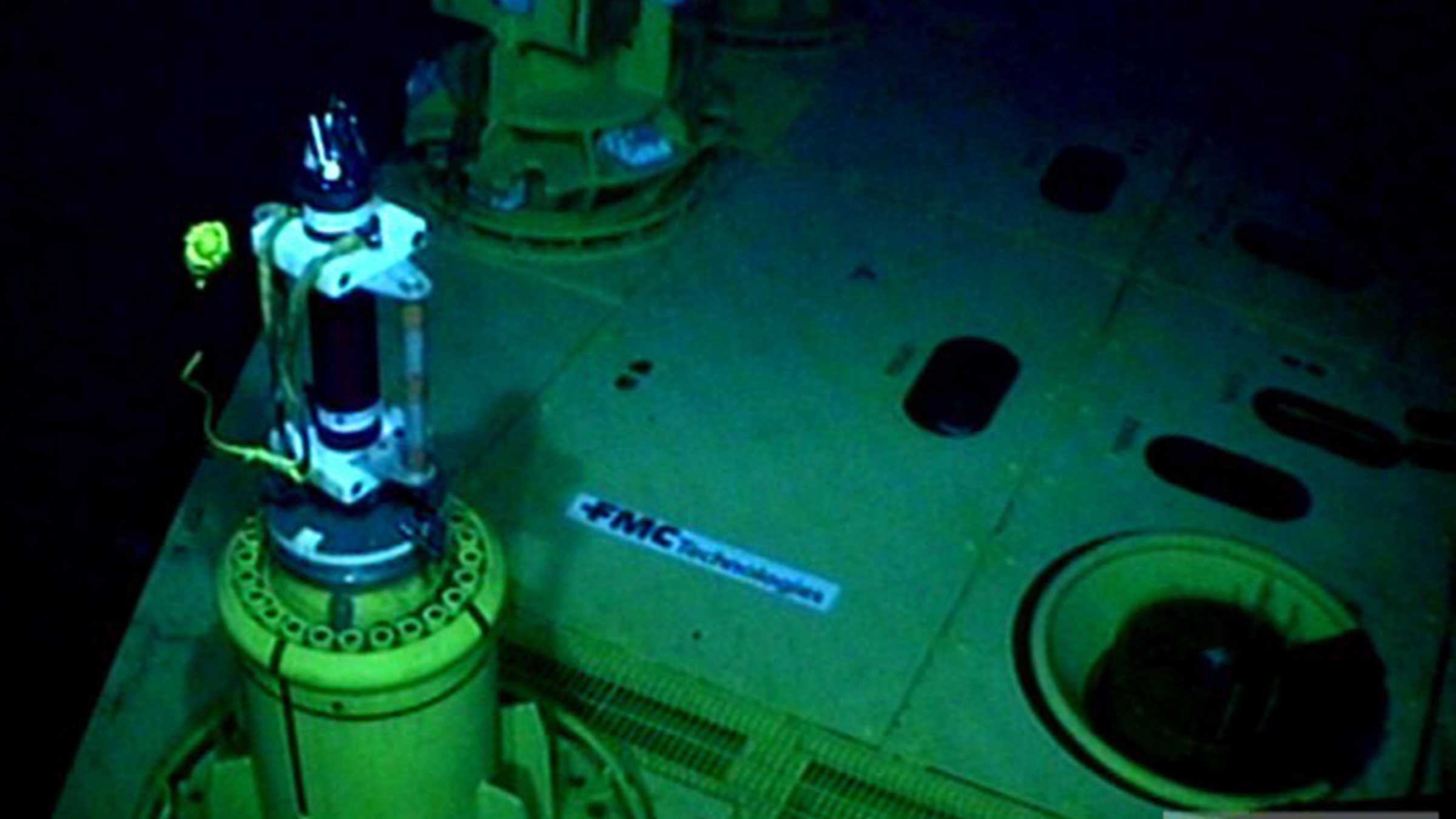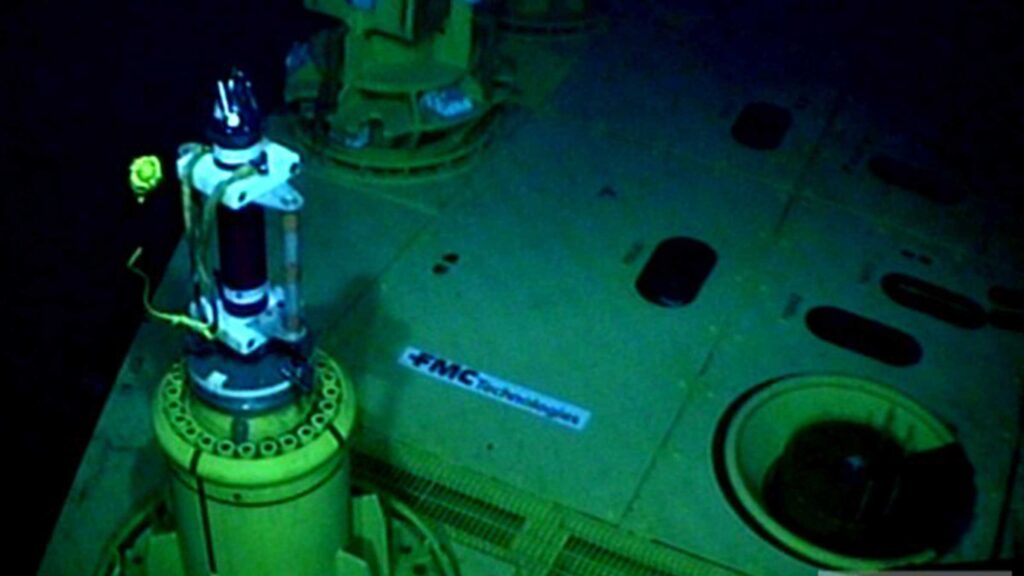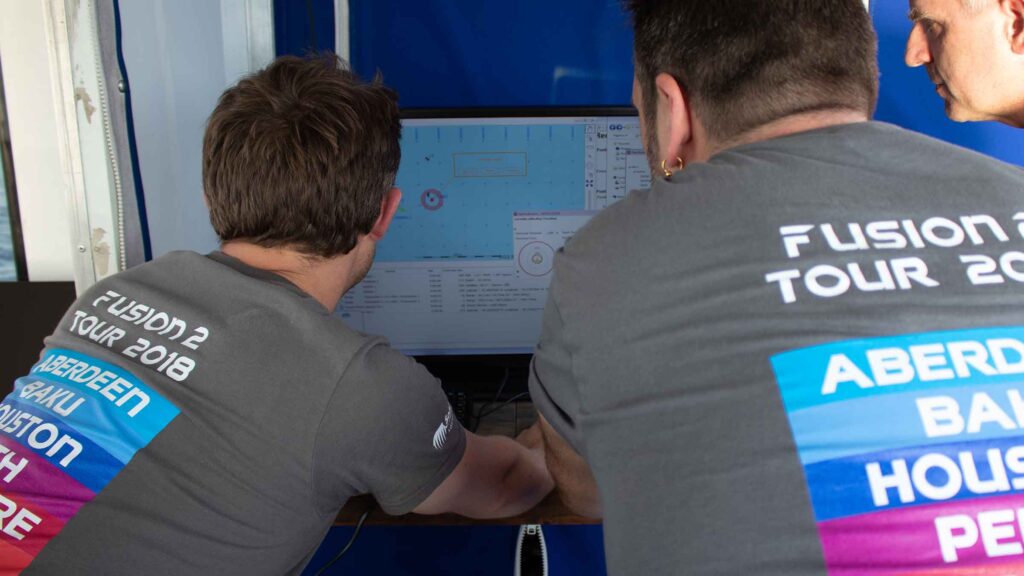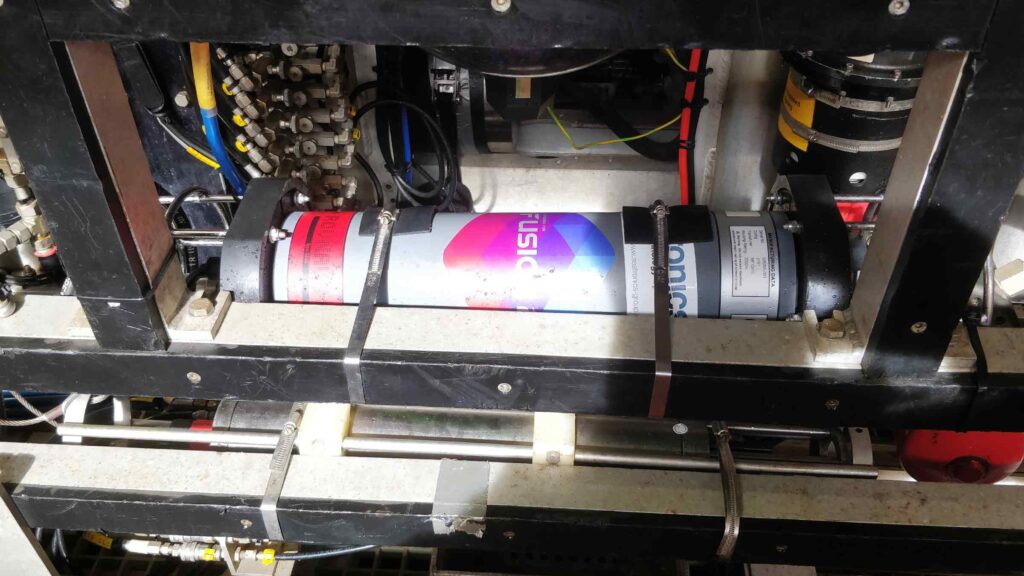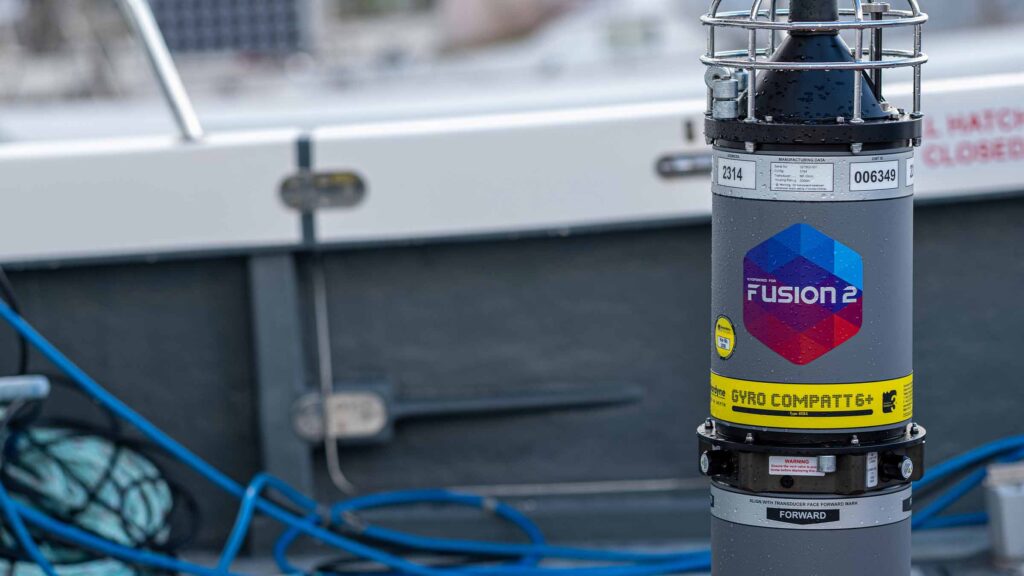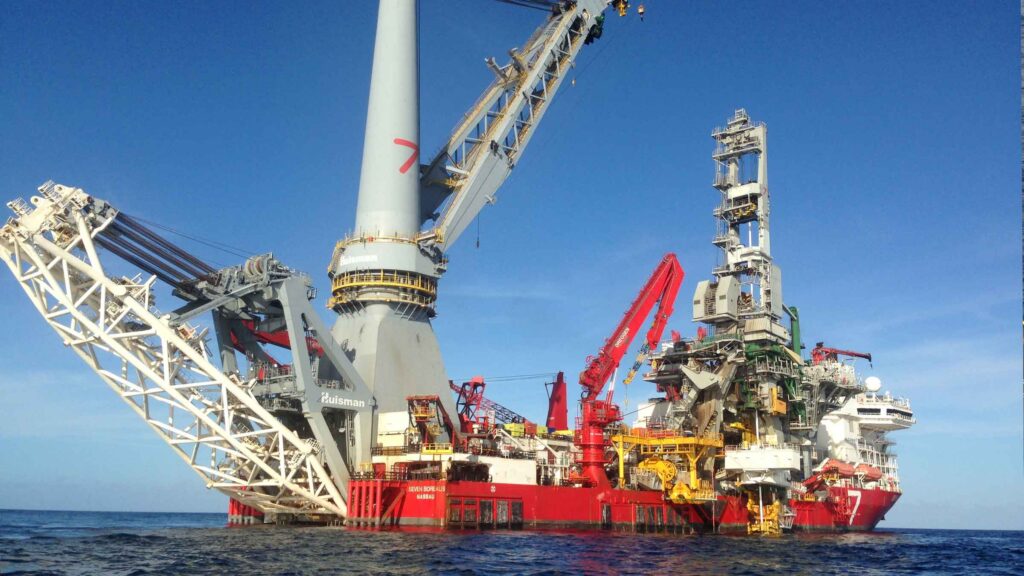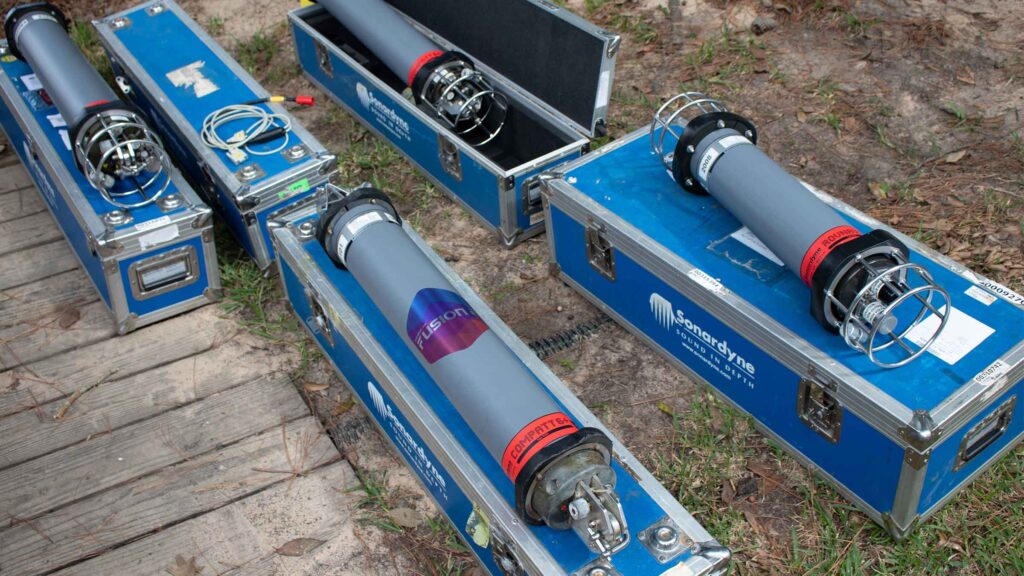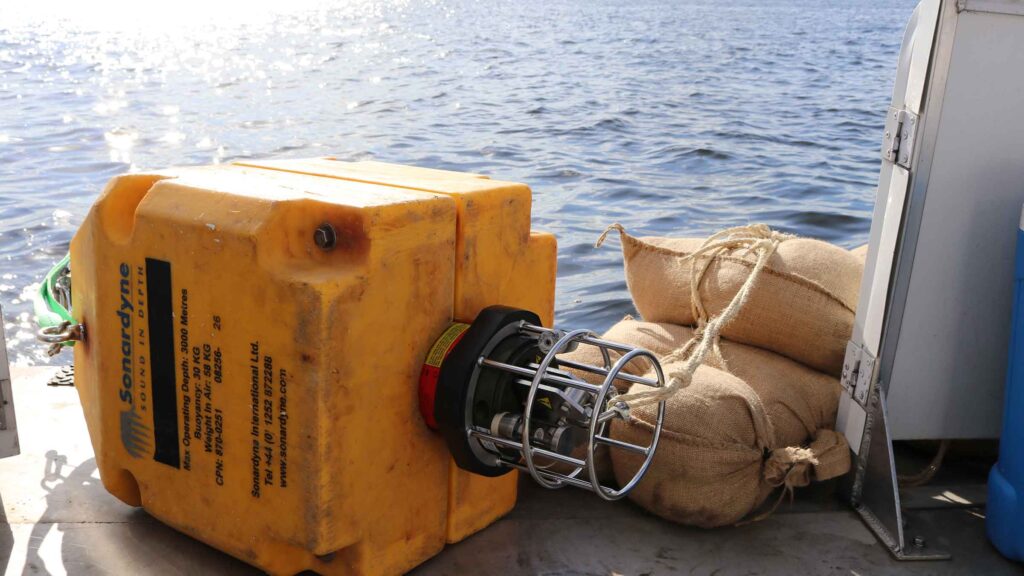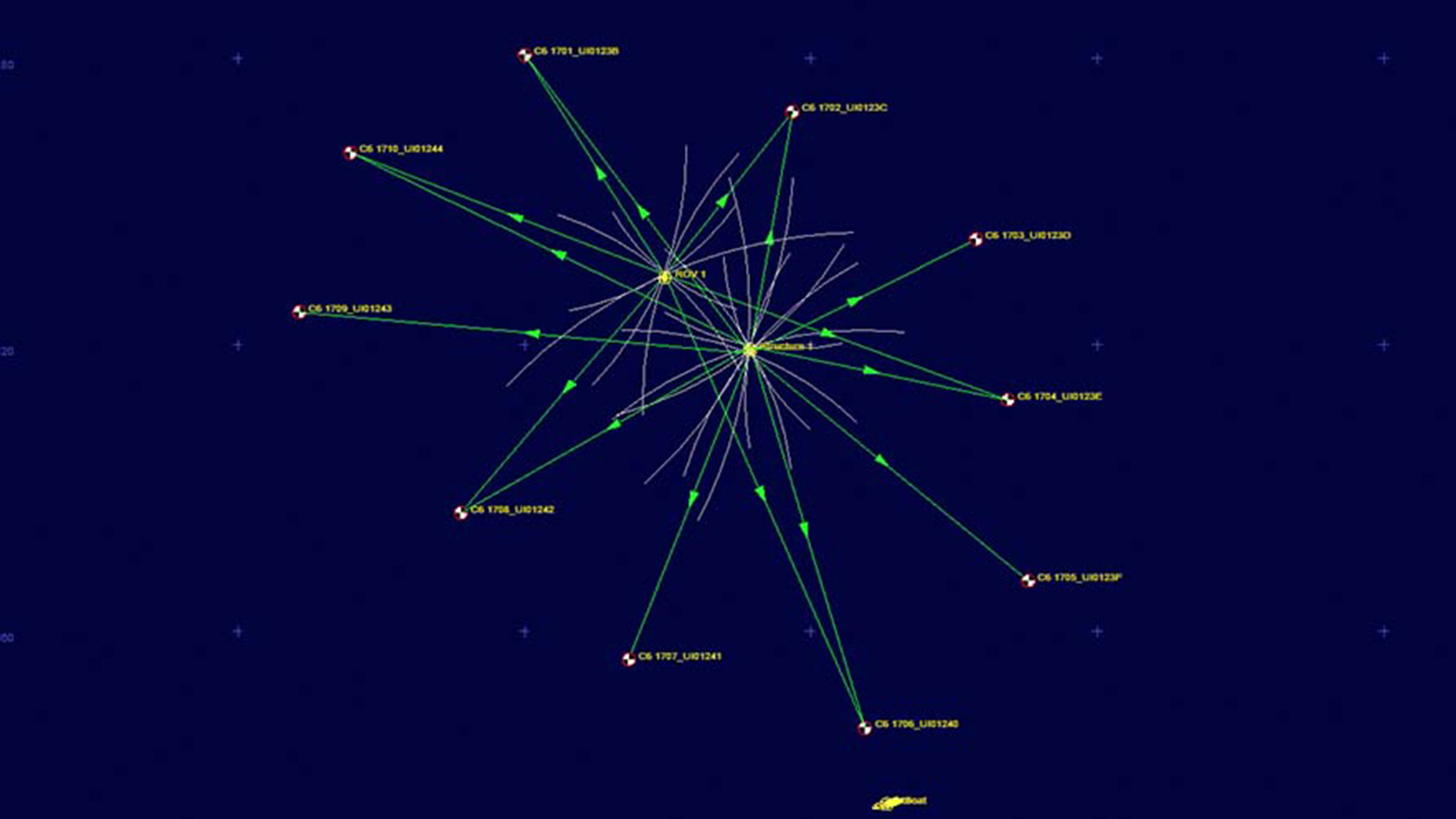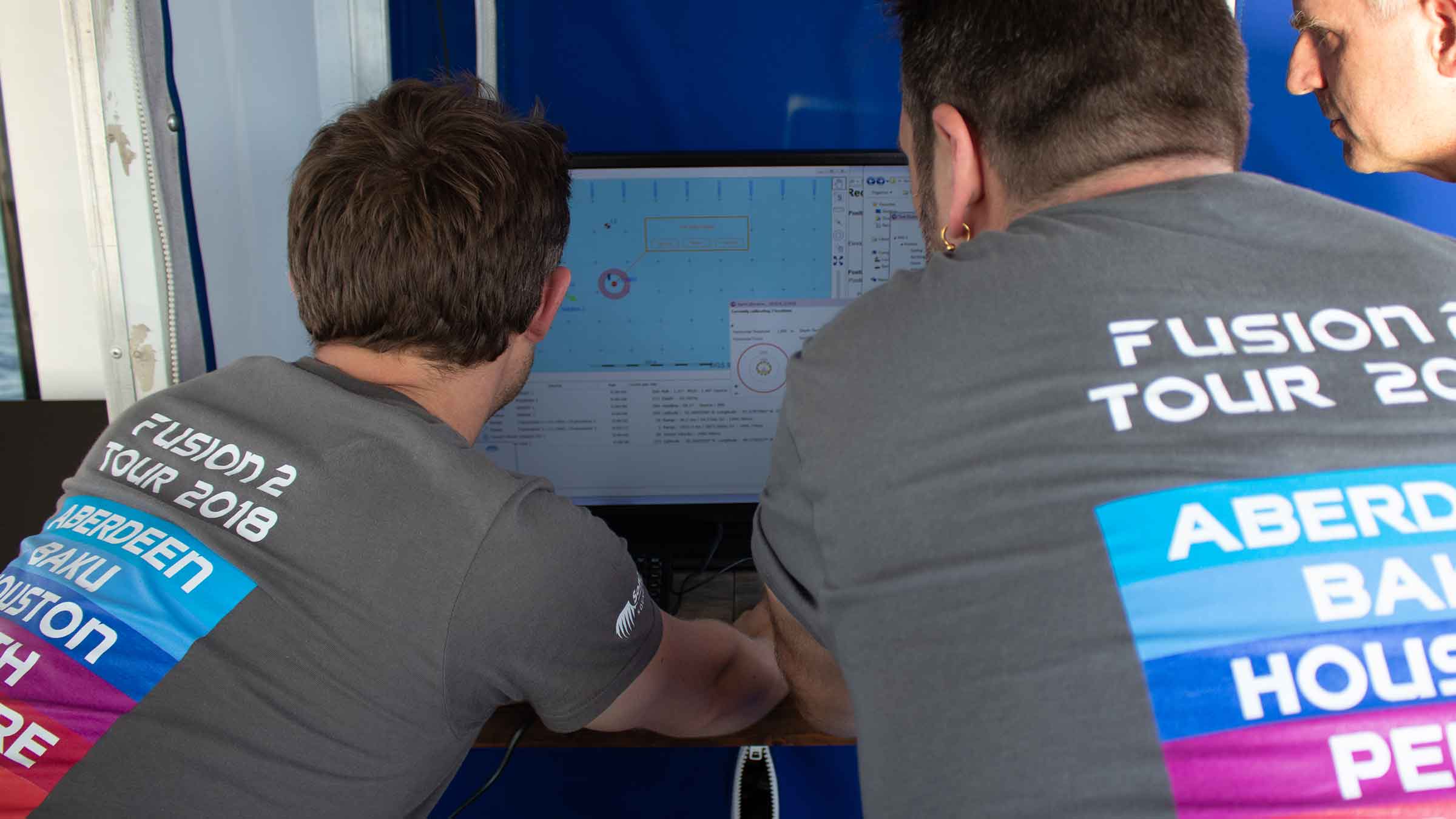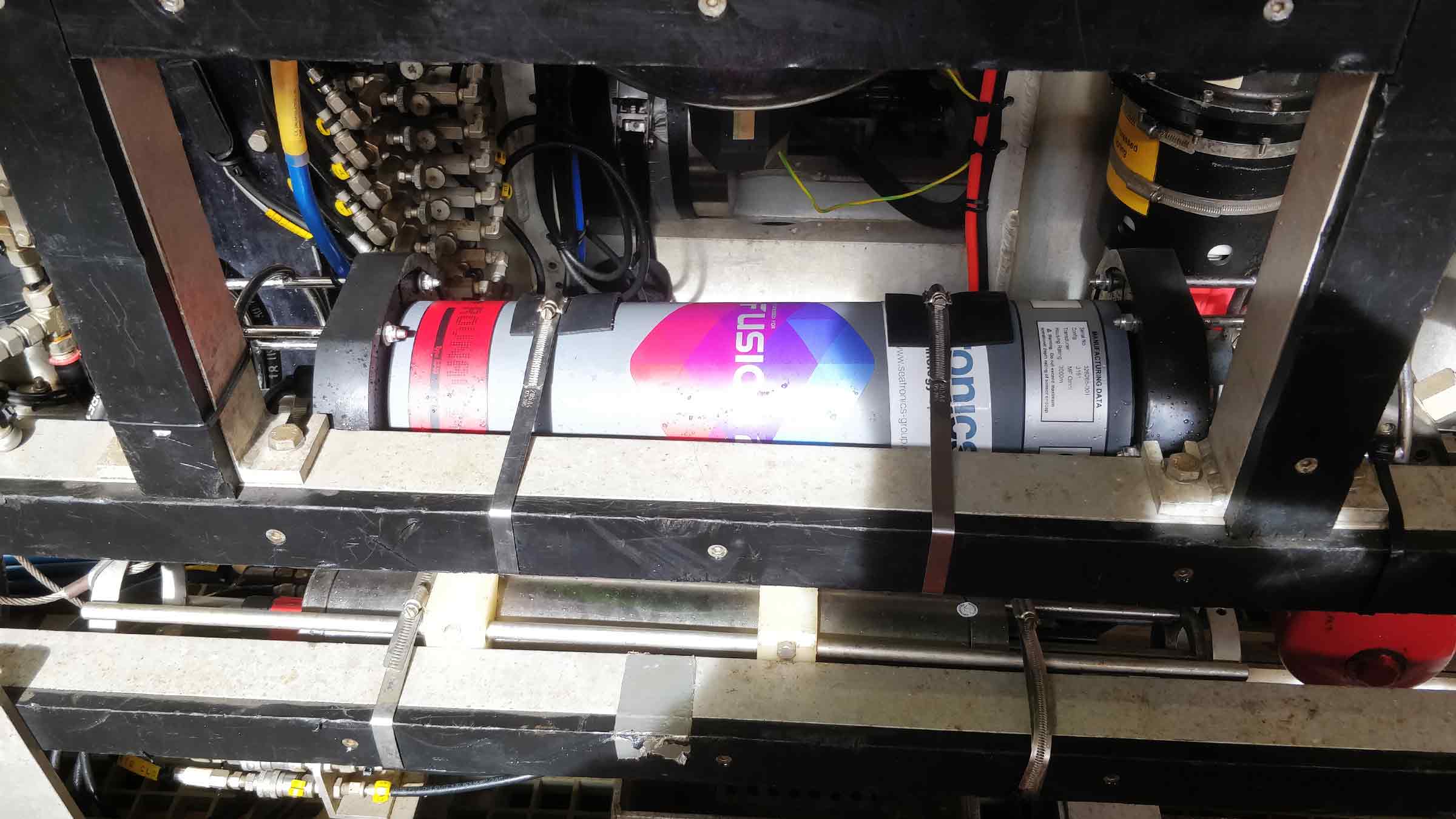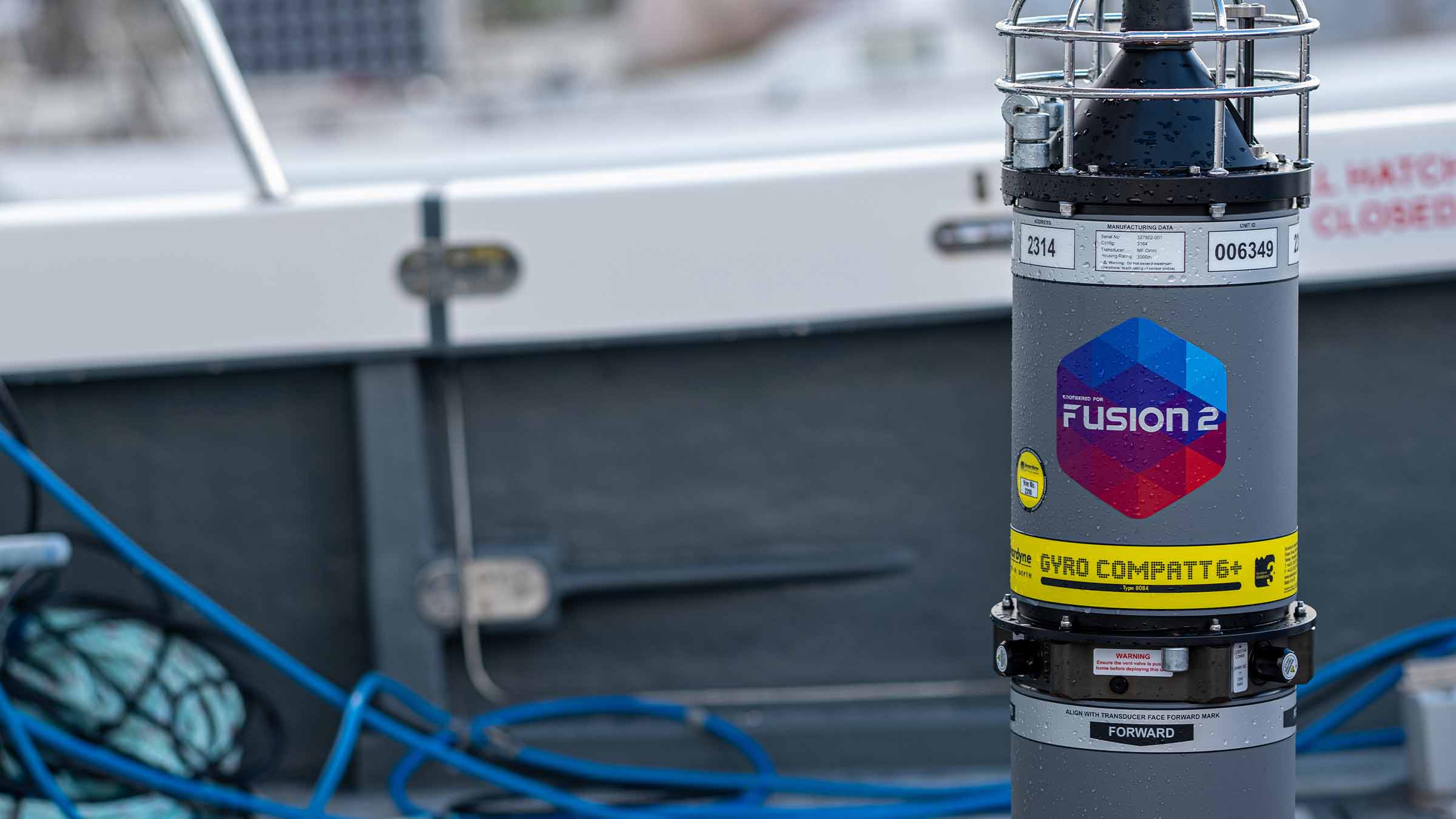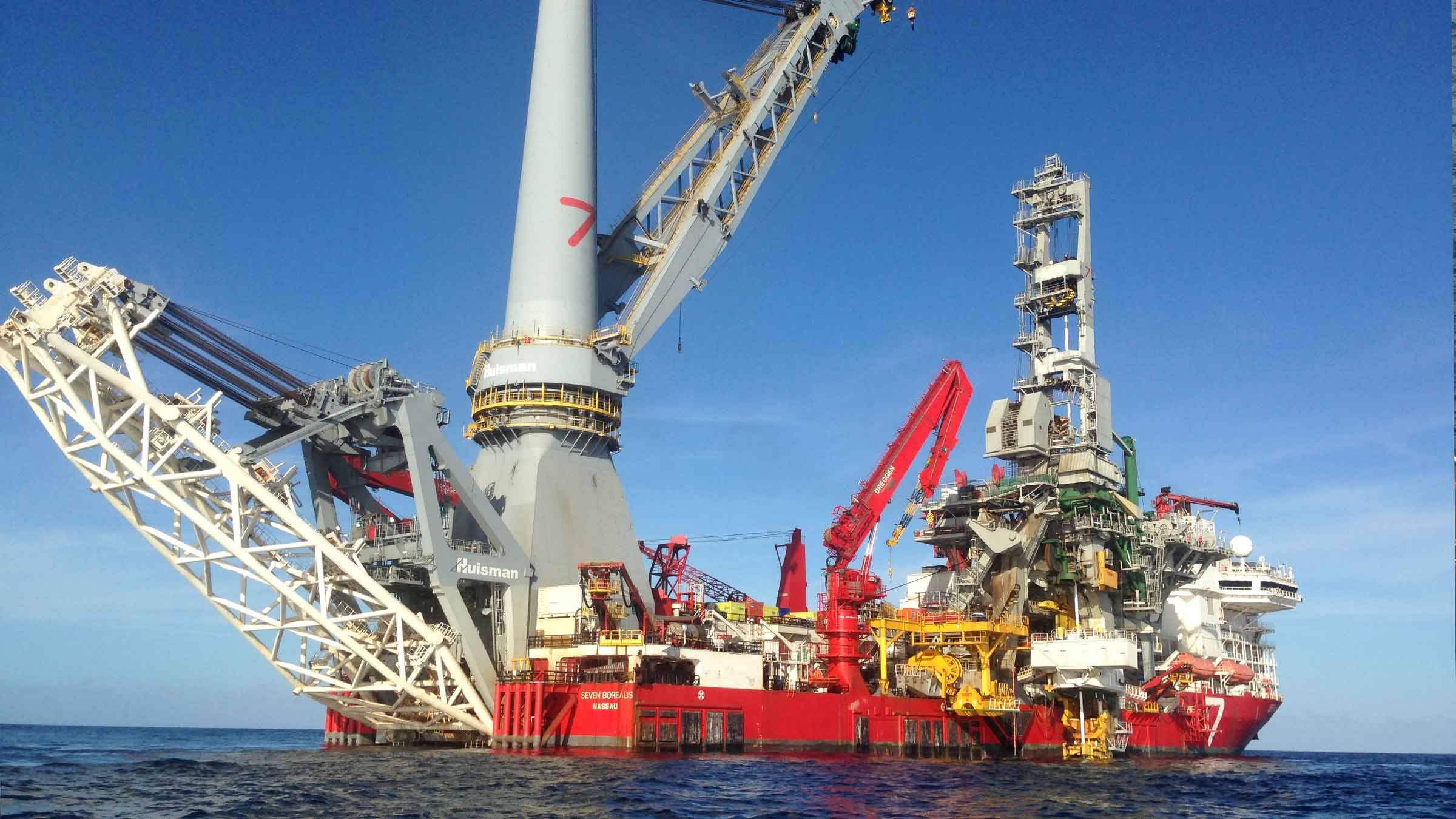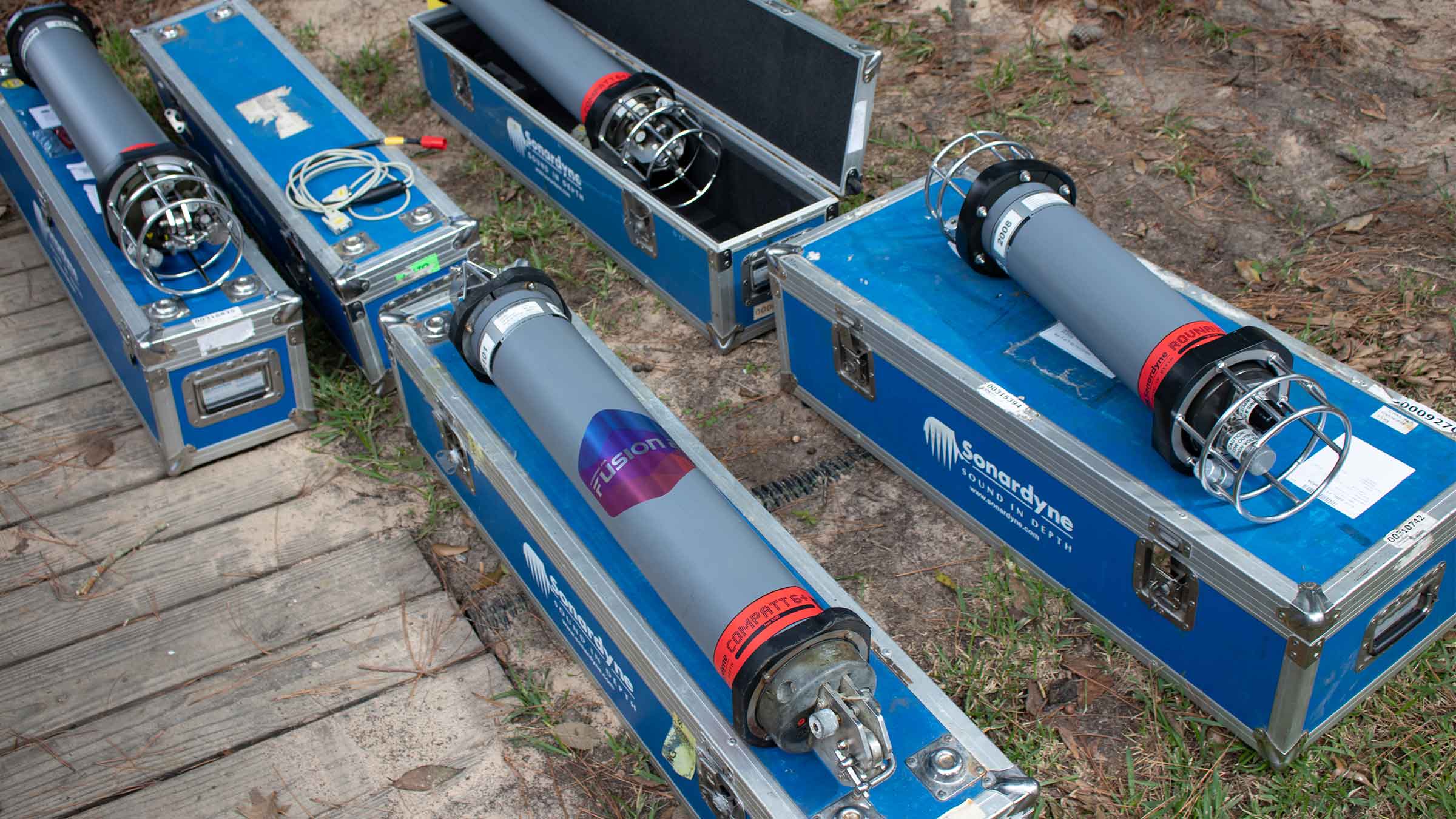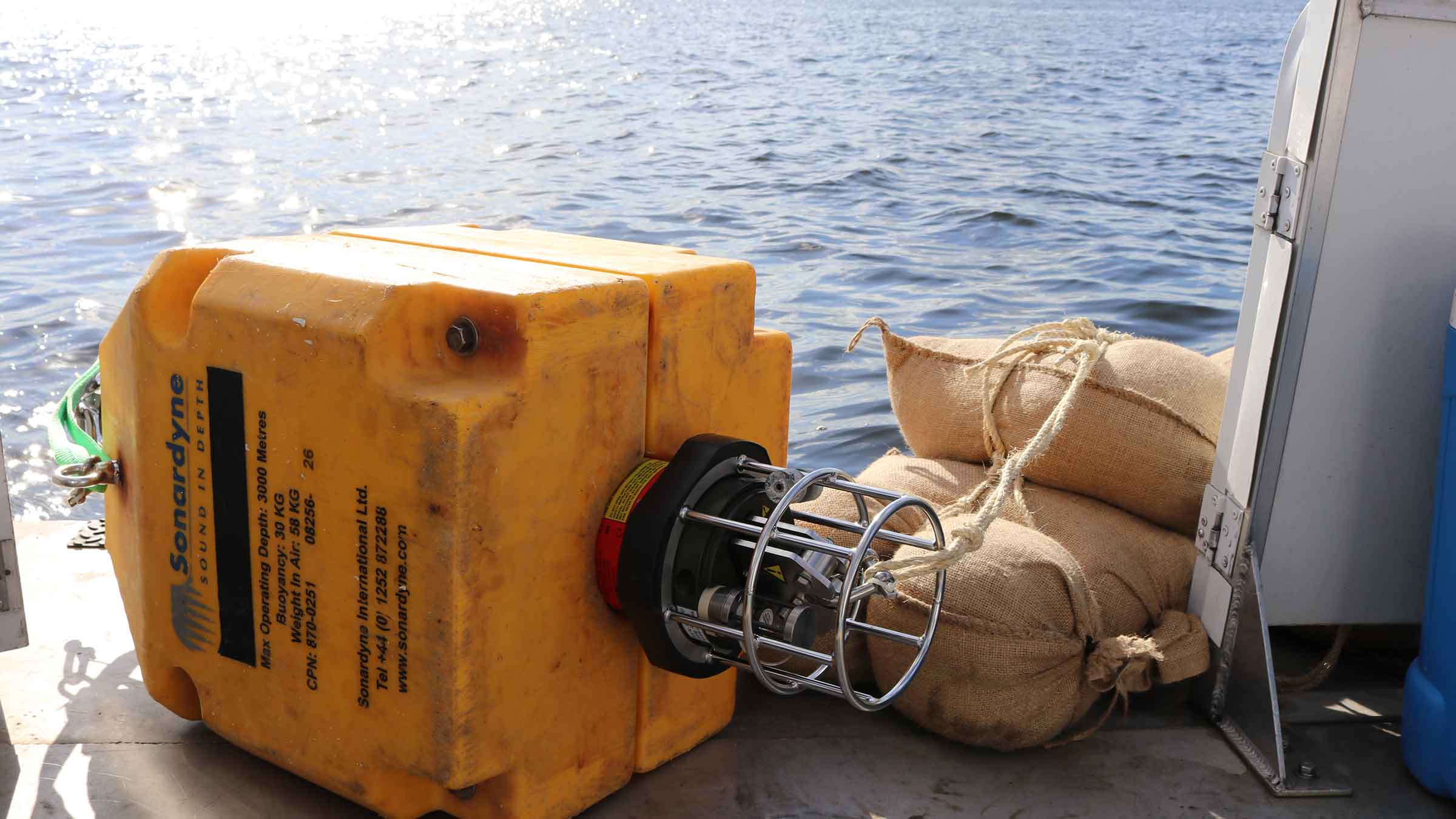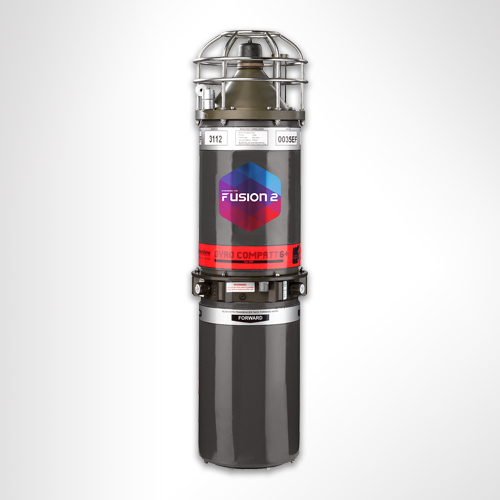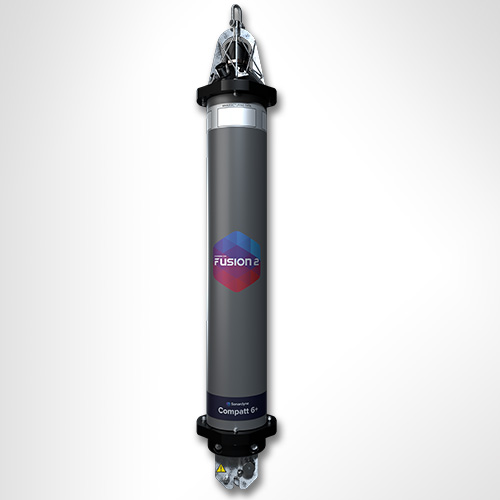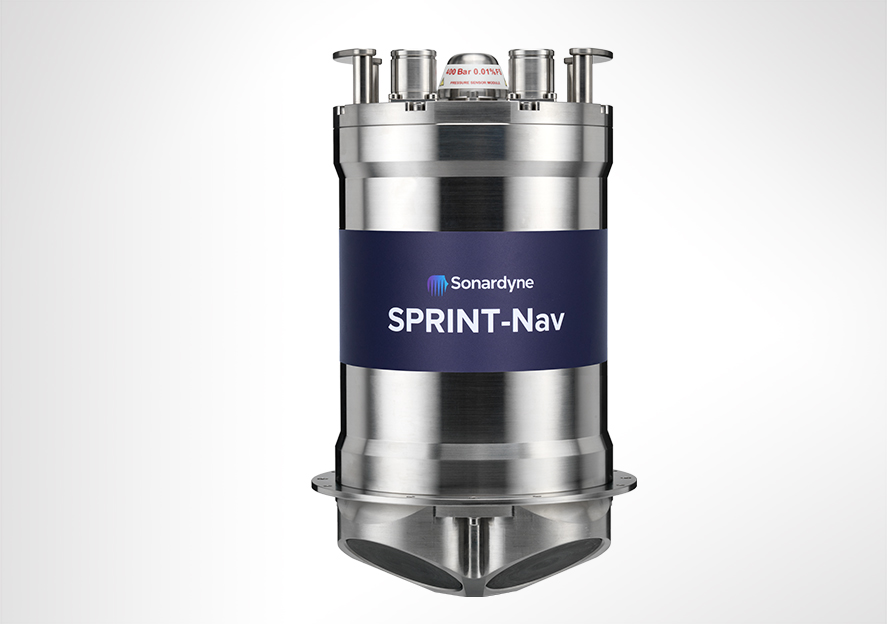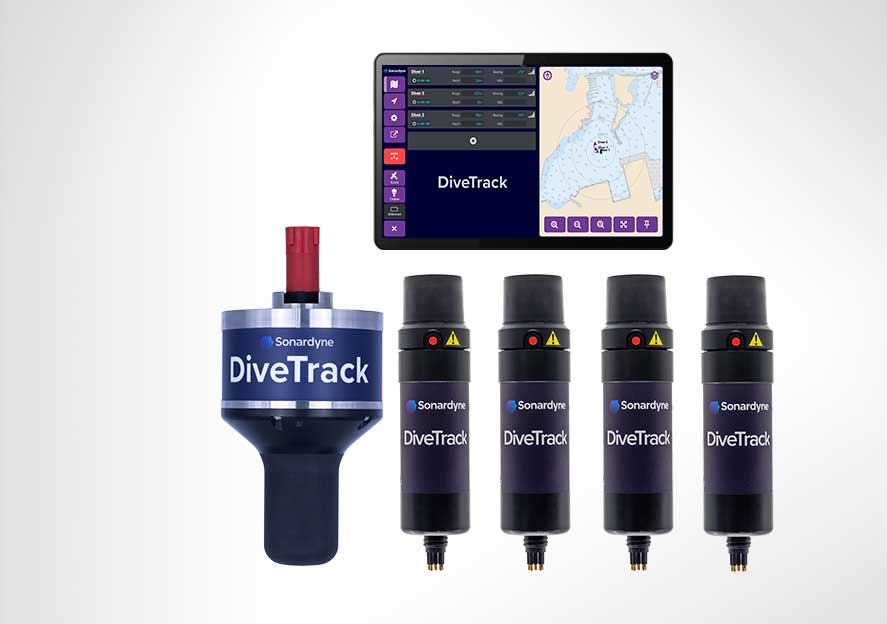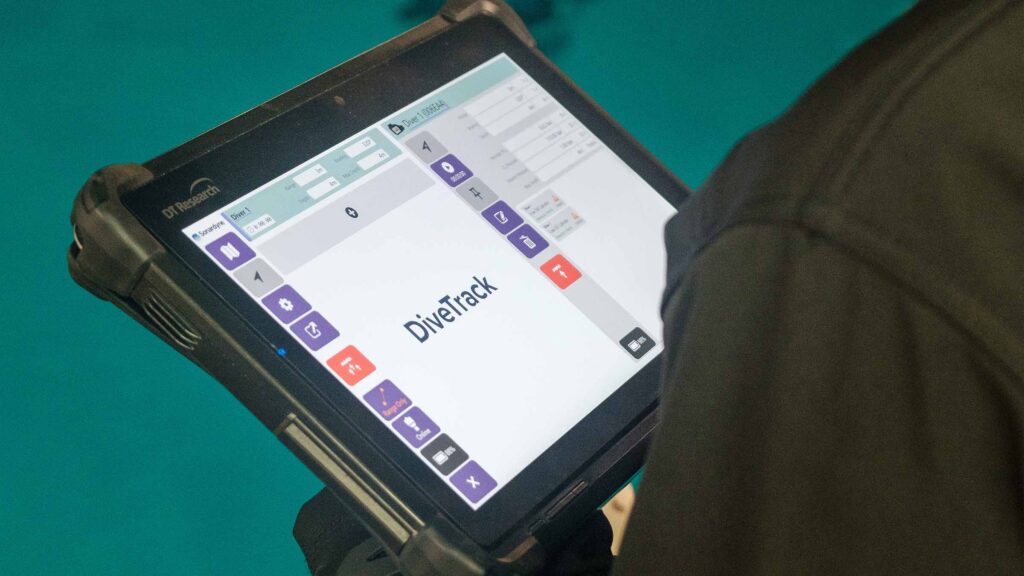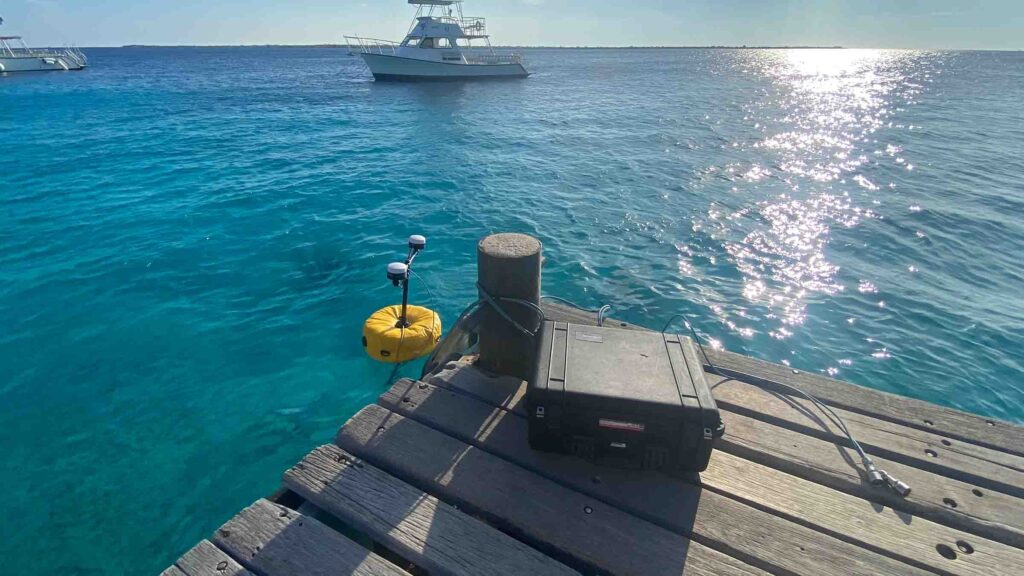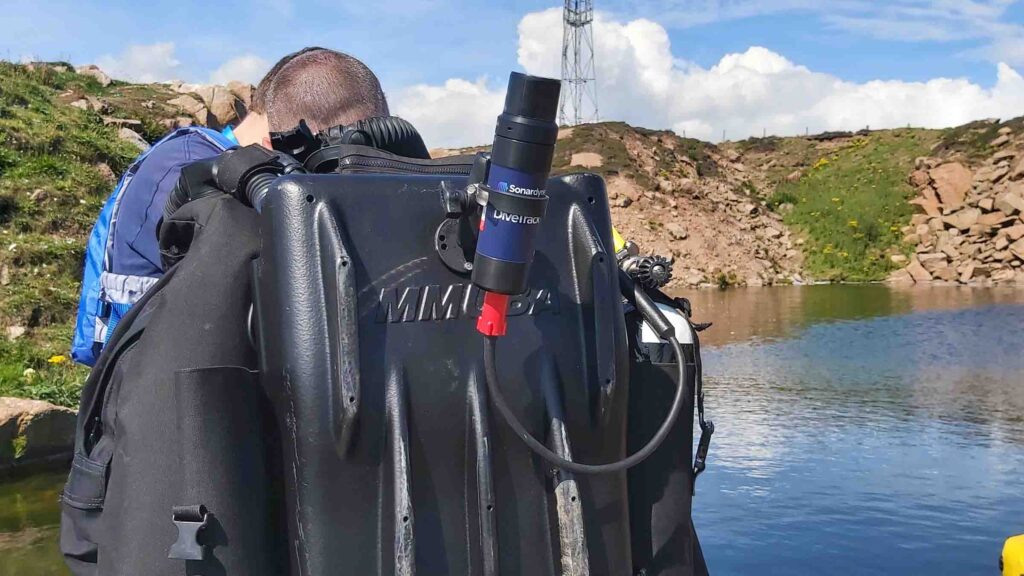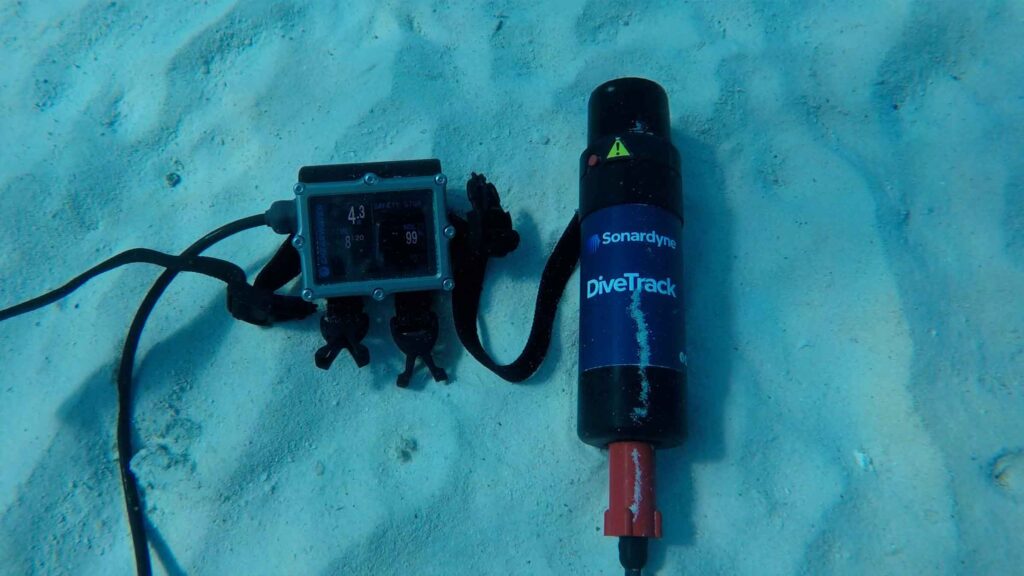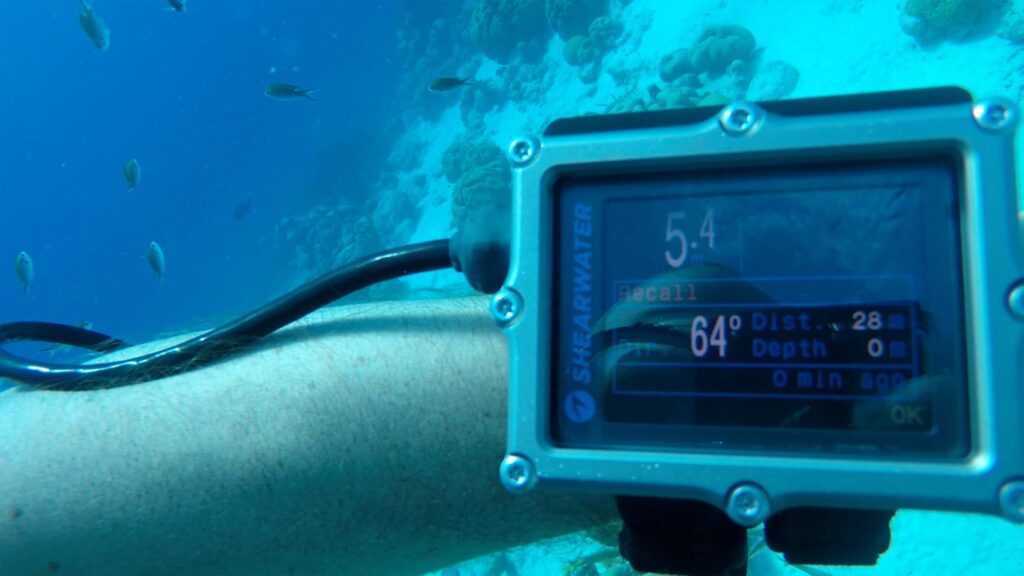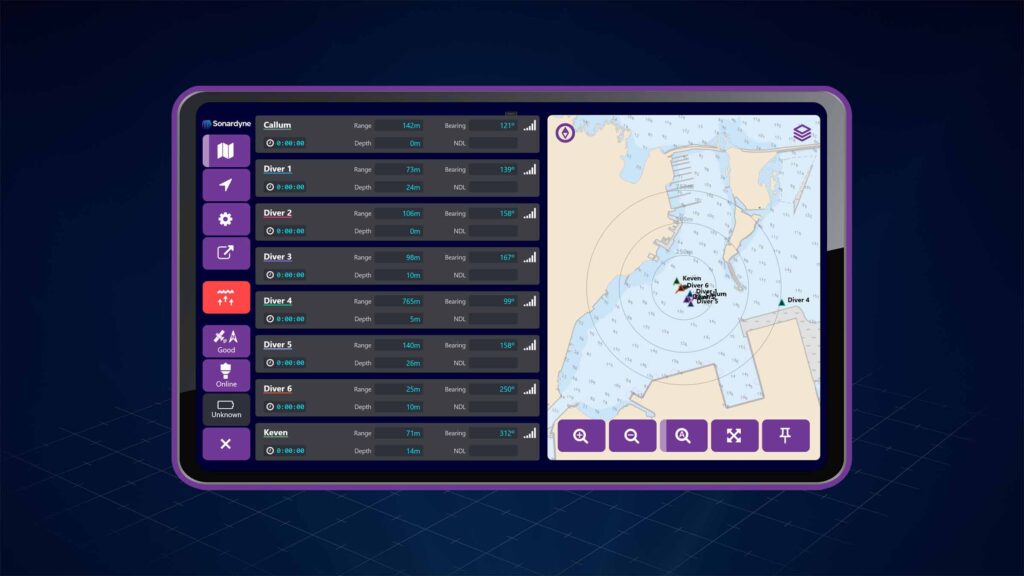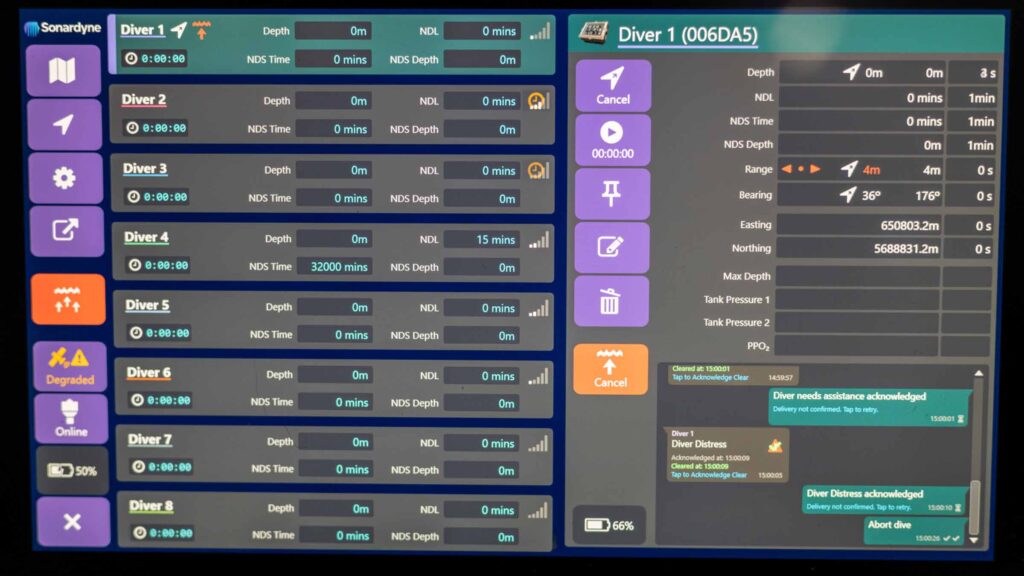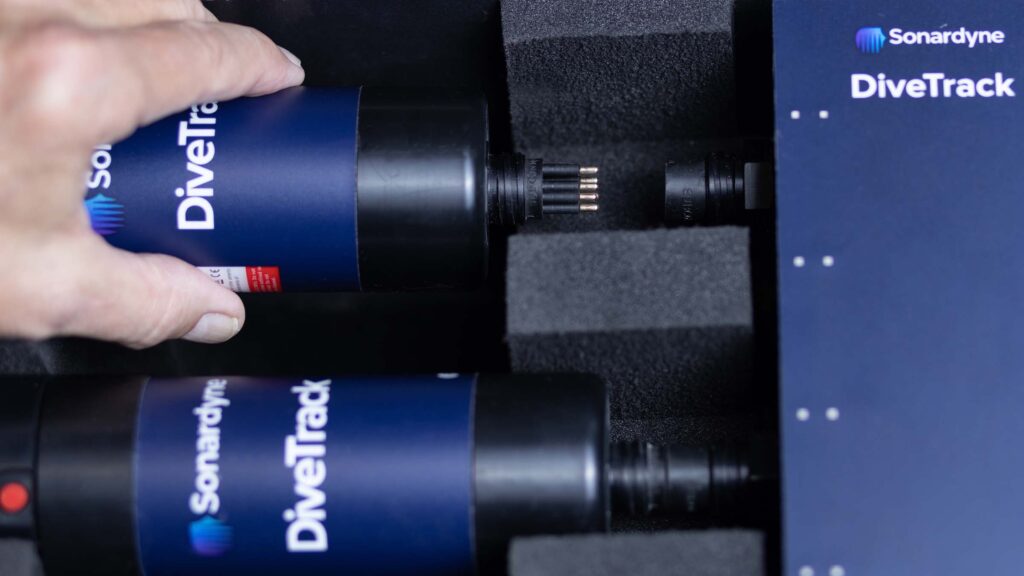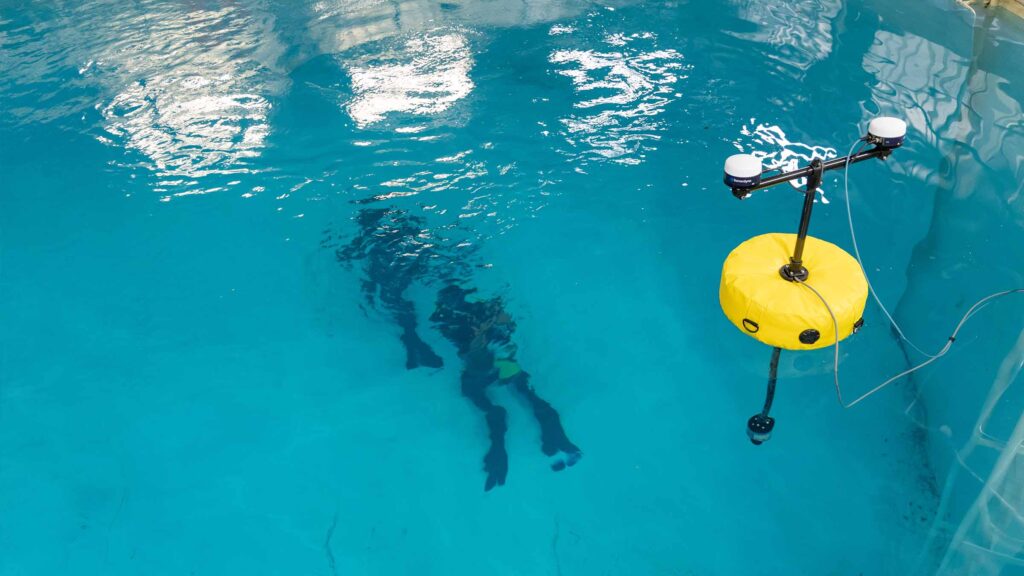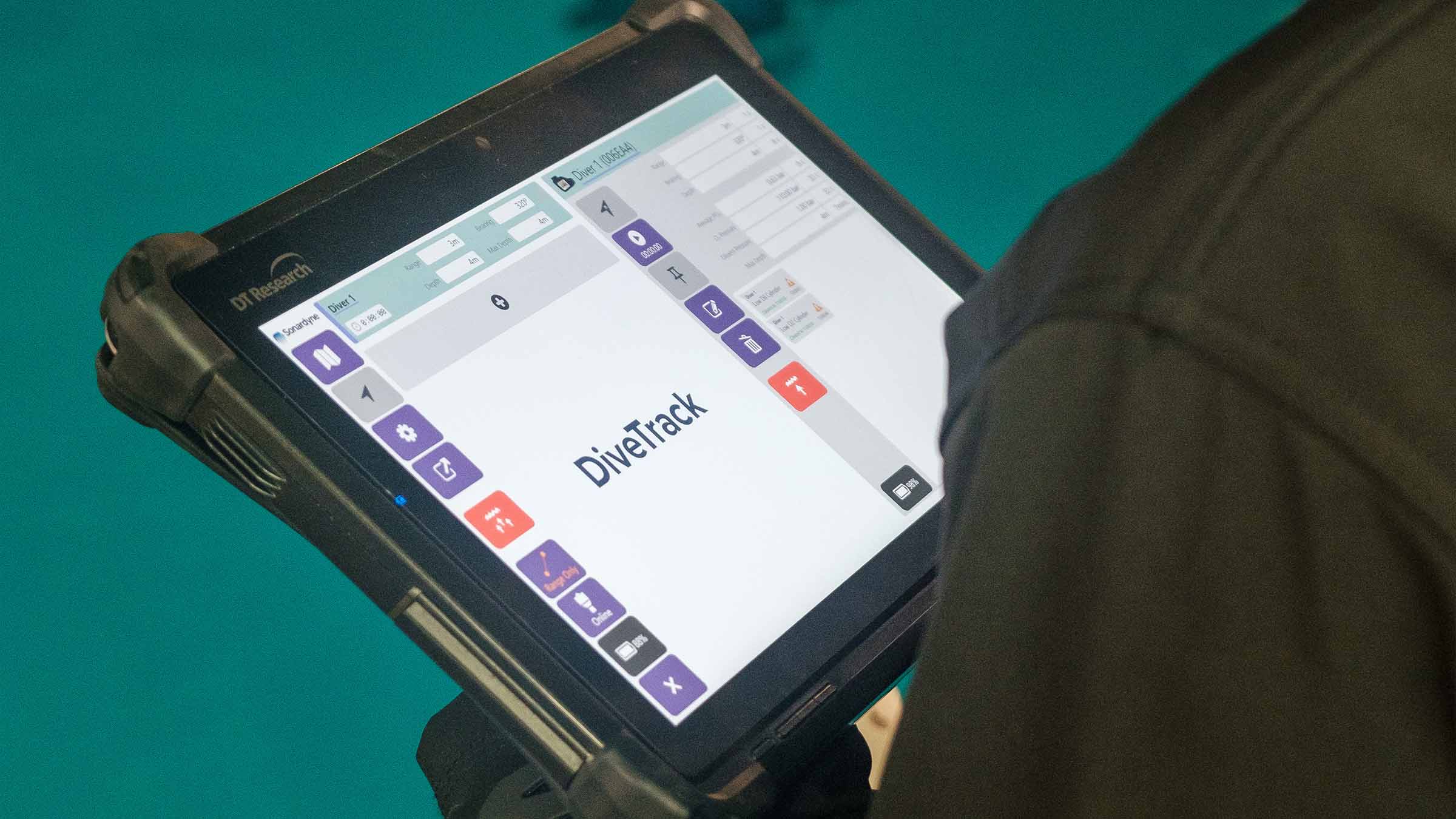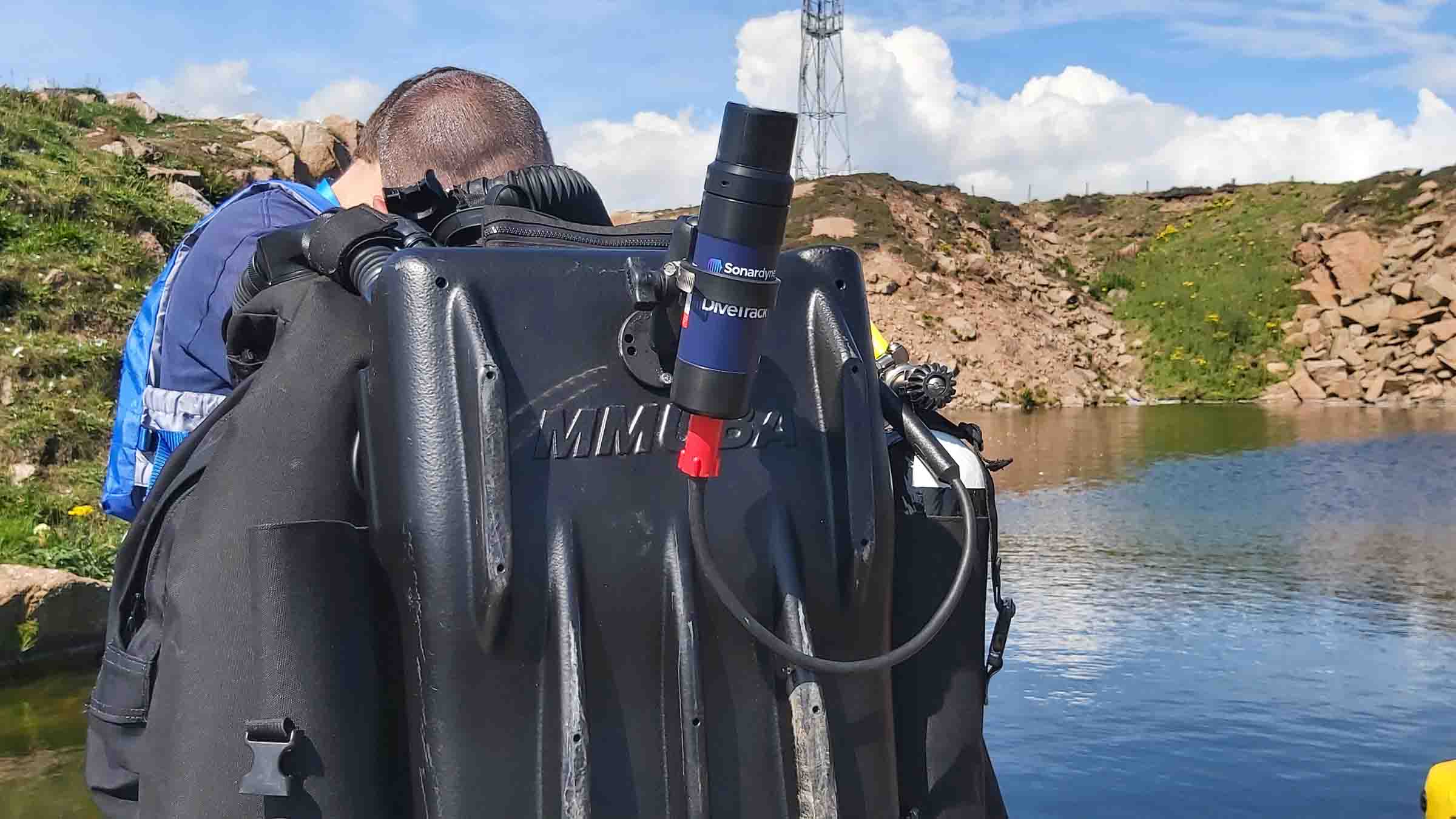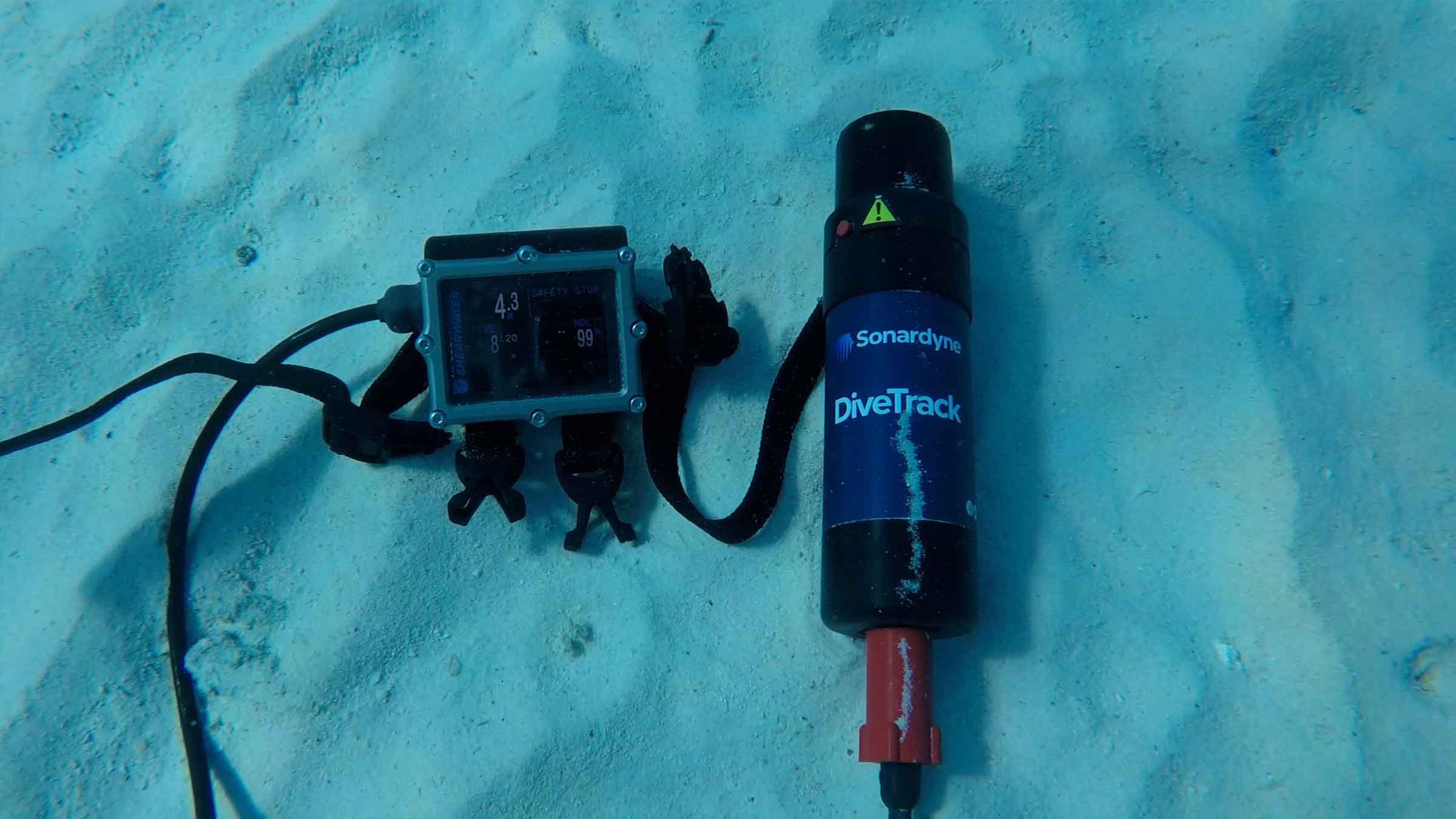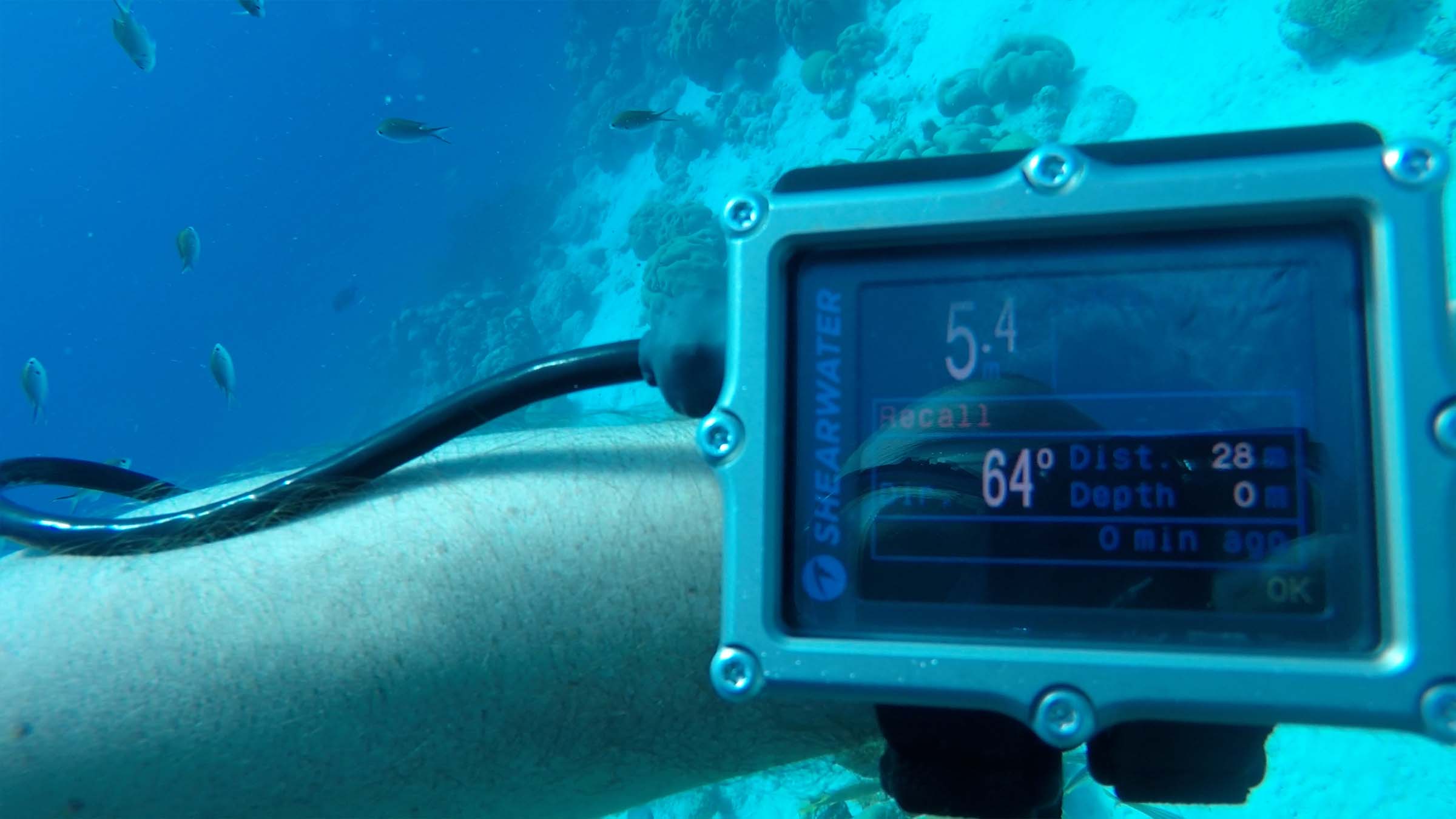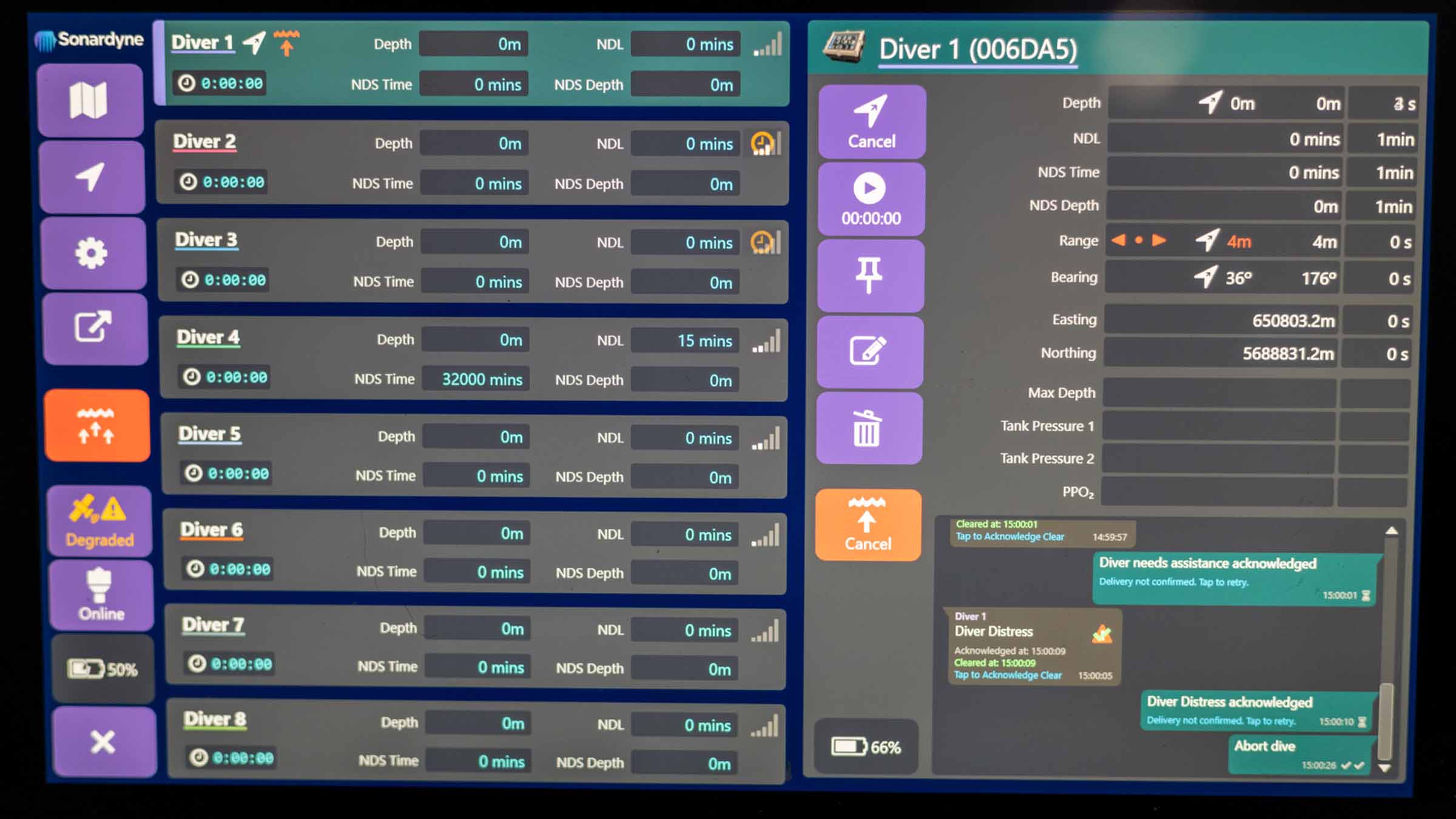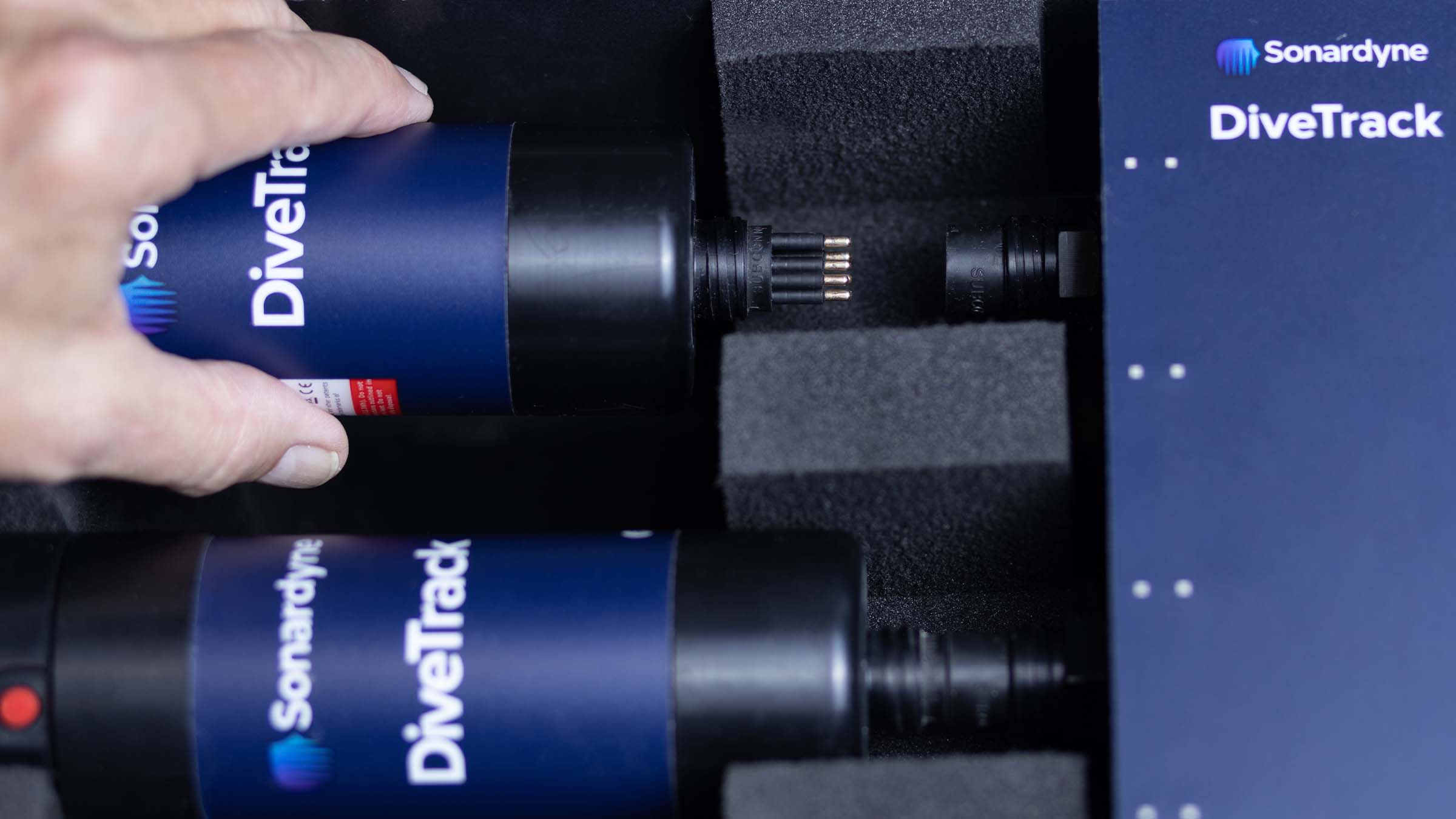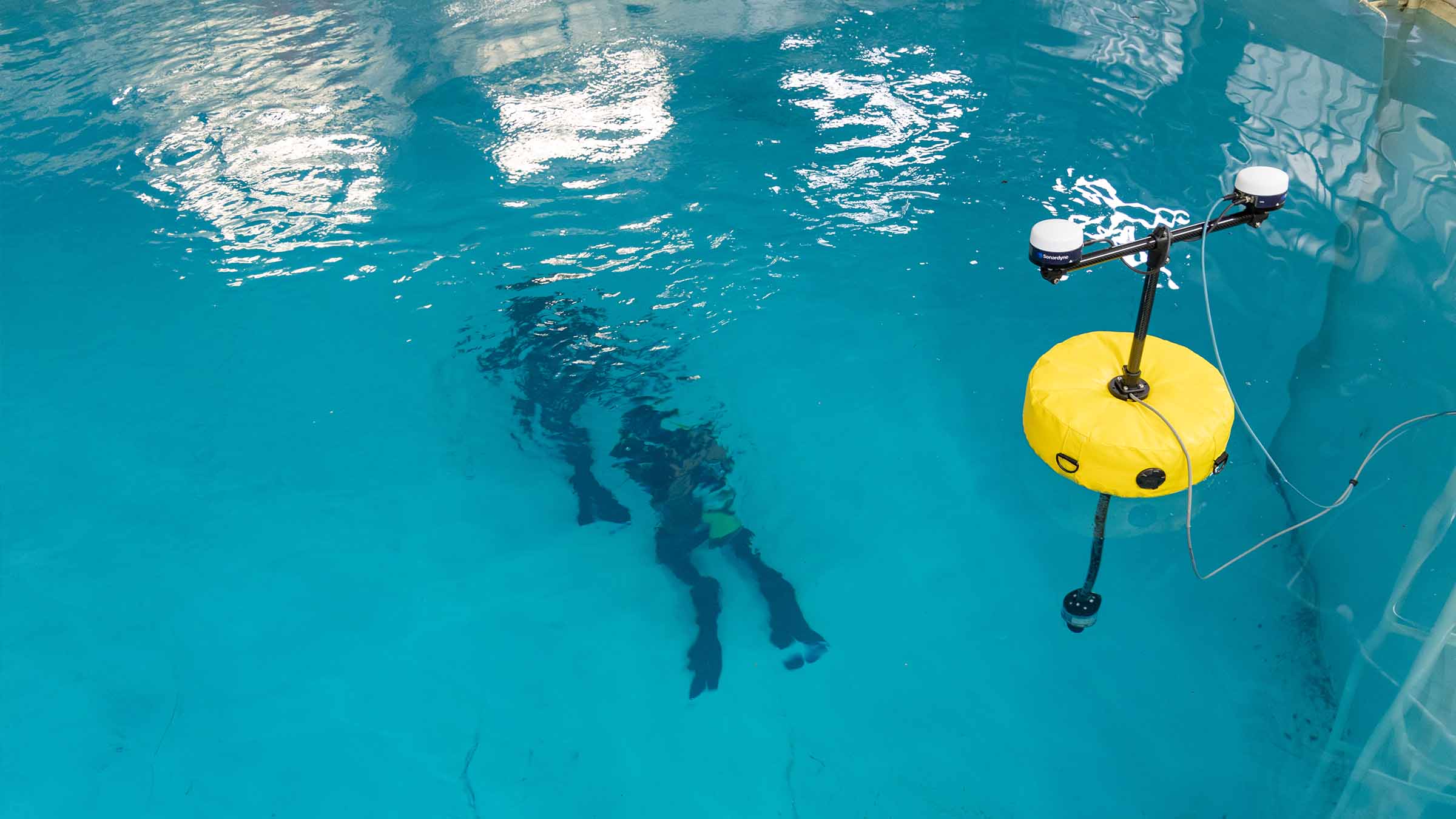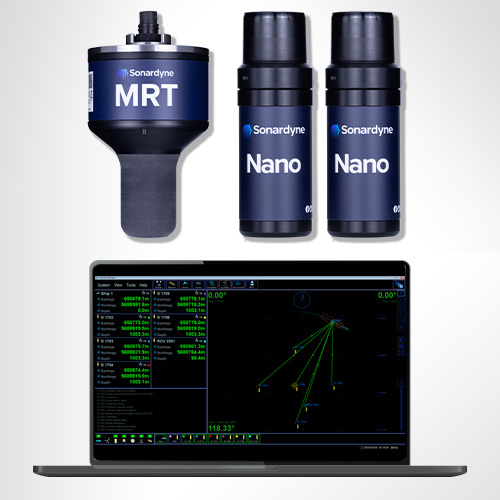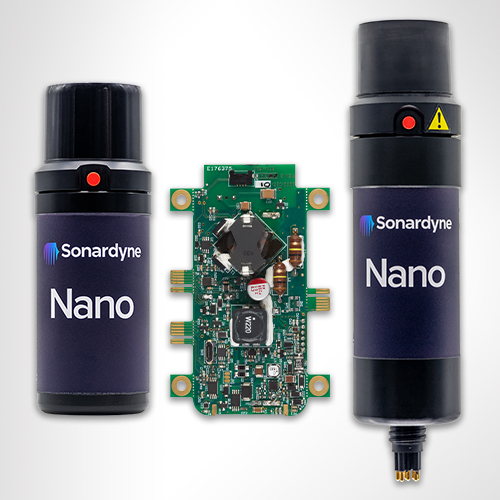Bringing special order accuracy to small diameter AUVs
L3Harris has armed its Iver3 AUV with Special Order survey navigation capability – thanks to our Mini-Ranger 2 Ultra-Short BaseLine (USBL) system and AvTrak 6. Find out how – and how it will help cut offshore wind farm survey costs.
The challenge
Demand for underwater surveys in coastal waters as part of the offshore wind life cycle is at an all-time high. There’s little sign of that demand falling, thanks to a global shift to renewable energy. But surveys come at a cost.
To keep costs down, surveyors are looking at innovative ways to survey more seabed more efficiently using smaller AUVs that reduce operational costs by requiring smaller vessels and fewer people and reducing their overall carbon footprint.
This includes International Hydrographic Organization (IHO) classified Special Order standard surveys, which are often specified for pre- and post-surveys underwater power cables and UXO surveys.
To meet navigation requirements, Special Order surveys in shallower waters tend to require ship-mounted sensors, to achieve the absolute positional accuracy required (using the vessel’s RTK/GNSS position).
In deeper waters, heavier, larger diameter AUVs are used. Because they rely on a DVL and an inertial navigation system (INS) for their navigation, they also must be supported by large vessels.
But what if you could perform Special Order surveys in shallower coastal waters with smaller low-cost AUVs, reducing your reliance on large vessels, reducing logistics, emissions and operational costs?
This was the challenge set by customers of L3Harris who were keen to find ways to use their Iver3 AUV for Special Order surveys.
Specifically, they set out to test if USBL-aiding at high enough accuracy for Special Order surveys could be achieved within the size, weight and power limitations of a smaller, light weight AUV platform, such as the 5.8 in-diameter Iver3.
If it could, it would allow underwater run-times of more than eight hours, and a new paradigm in lower operational cost coastal surveys.
The solution
L3Harris had already used our Mini-Ranger 2 for USBL aiding an iXblue Phins INS, via one of our AvTrak 6 OEM Nanos, on one of its Iver3s on a separate customer project. Read more here.
Mini-Ranger 2 is the ideal USBL system for coastal operations, supporting high-elevation tracking of up to 10 targets simultaneously down to 995 m water depth (extendable to 4,000 m), as well as data harvesting. It offers performance without the cost and complexity of a larger deep water USBL system.
At the heart of the system our HPT 3000, a highly capable surface deployed USBL transceiver which is optimized for performance in shallow water, high elevation and long lay back operating scenarios, as well data telemetry.
To provide INS aiding, L3Harris’ customer chose to integrate our AvTrak 6 OEM Nano, with a remote transducer, into their Iver3.
AvTrak 6 OEM Nano is the smallest variant of our AvTrak transceiver, designed for ease of integration on smaller underwater vehicles. It combines the functions of a transponder, transceiver and telemetry link, enabling communications, tracking and USBL aiding for subsea robotics. It’s also based on our 6G hardware platform, which means it’s interoperable with all our USBL, LBL and INS systems. This provides flexibility, but also performance enhancement, for example when combined with a Sonardyne INS.
As in the earlier project, the AvTrak 6 was programmed to speak the right language to the third-party IXBLUE Phins INS, by sending out an APOS PSIM SSB telegram, instead of our proprietary SPOS. The AvTrak 6 transducer was also supplied on a special Iver3 mounting post design, to make it easy to plug and play into the AUV – and any other Iver3, for that matter.
Mini Ranger 2 was pole-mounted to the support vessel with hemisphere GPS for topside absolute positioning.
The results
L3Harris ran a <5 km-long survey, with six 800 m legs, in challenging <20 m water depth in Narraganset Bay on the north side of Rhode Island Sound.
Real-time USBL-aiding improved the survey accuracy by upwards of 7 m on far end of survey legs through the turns. During the survey, real-time survey performance ranges up to 800m were tested with USBL position standard deviations ranging from 1 – 3 m.
In addition, using Mini-Ranger 2’s robotics pack, the L3Harris team were able to provide the vehicle with information of the acoustic environment, so its autonomy could make decisions to adjust the AvTrak 6 OEM Nano’s power and gain settings to improve acoustics without a human in the loop.
“The standard deviation on the USBL position fixes were accurate allowing real-time position updates to the INS. The ease of operation using the Mini-Ranger 2 topside to track and monitor environmental influences throughout the survey also added a layer of safety for monitoring the UUV.”
“This set up allows surveyors to meet Special Order navigation standards, which is a big deal for small unmanned underwater vehicles (UUVs),” says John Sloat, Application Engineering Lead, L3Harris. “The problem before has been that there’s not a lot of real estate inside smaller UUVs to house the onboard technology required for Special Order navigation capability in. But now they can.
“This capability adds a high level of survey efficiency by reducing the need to frequently surface for a position fix which increases the vehicles endurance, reduces the risk of vehicle entanglement or loss, and allows for larger areas to be surveyed. It also means they have real-time data vehicle positioning, which, when post-processed, could be improved even more. That’s really valuable to survey customers and we do see this as the cusp of a new UUV survey era,” adds John.
What was also hugely valuable to the L3Harris team was the support from Sonardyne’s experts.
“The level of support and service from Sonardyne has been exceptional,” says John. “We are very pleased. It’s been a fantastic experience at every phase of the integration we have done and that’s a big de-risk for us, having a partnership like this.”
A 'custom-off-the-shelf' product provides a timely solution for Dana Petroleum
Our experience and expertise allowed us to rapidly adapt our off-the-shelf technology for Dana Petroleum. This delivered a cost-efficient, low environmental impact, and timely solution for them to monitor their suspended wells in the North Sea.
The challenge
As they reach the end of their productive life, oil and gas well heads still need to be monitored whilst suspended – for up to five years, before they become fully abandoned / decommissioned. A regime must be in place to monitor the assets ‘in perpetuity’ to meet government regulations. As this is ‘abandonment expenditure’, rather than capital expenditure, any monitoring schedule must be conducted as cost effectively as possible.
Dana Petroleum (Netherlands) was faced with one such challenge in early 2023 when they needed to plan and implement a well annulus monitoring schedule for suspended wells at their Van Ghent and Van Nes subsea wells, situated in the North Sea approximately 60km West of The Hague. The wells were situated alongside others still in operation and although the topside platform remained, communication links with the sensors on the suspended subsea wells had been lost. There was an additional challenge of the system needing to be in place within 12 weeks.
The solution
The ’simple’ solution would have been to lay new communication cables from the suspended well heads to the topside platform to enable the monitoring. But this would have been lengthy, expensive and carbon intensive, involving bringing in large vessels to lay long stretches of subsea cables. A quicker, cost effective and lower carbon solution was needed. Having heard about Sonardyne’s experience and expertise in long-term subsea asset monitoring, Dana Petroleum approached us for a solution.
We have many years’ experience in providing subsea pressure and temperature data directly from well downhole gauges, mostly during the appraisal phase in a field development, providing essential data to the reservoir engineers before connection is made to the offshore or onshore facility.
Although Dana Petroleum’s requirement was well within our capabilities, there were some initial unknowns such as; field layout, pressure gauge model and manufacturer and how the equipment would be mounted to the subsea manifold. Also, which topside would be most suitable for data harvest? Something which is typically dictated by the vessel size, noise profile and water depth. The timeframe was also very challenging.
In the following weeks, Dana Petroleum provided information on the field layout, drawings of the subsea infrastructure and a strong specification for a system capable of monitoring the annulus pressures at both locations. Having received this, we were able to provide illustrations of previously designed bracketry, 3D CAD images of our potential offering and expert advice to work out the optimum placement to enable best line of site for data harvesting. With a firm specification and known time constraints we looked to our off-the-shelf products with a view to creating a semi-custom solution with our projects team.
The obvious choice was to make custom alterations to our Autonomous monitoring transponder (AMT). The AMT has been used in a wide variety of different applications including overburden monitoring and pipeline movement monitoring, all utilising and autonomously logging pressure sensor data. These solutions can operate autonomously over long periods of time, over five years – depending on deployment – logging data and making it accessible for wireless upload.
The topside platform of choice was a Nano topside equipped with a ruggedised laptop running Sonardyne’s Monitor software fitted to a small crew transfer vessel that would pass by the wells at regular intervals, delivering workers to the platforms. The size of the vessel dictated a small portable solution but other options are available for all sizes of vessels.
Once the seabed and topside products were selected, custom modifications were made by the projects team to the AMT, allowing the pressure sensor to be connected to the annulus via a flange – rather than inside the AMT –to give flexibility in the location of the AMT and achieve best line of communication with the Nano transceiver when it passed overhead.
A factory acceptance test was witnessed by Dana Petroleum where our projects team provided documentation and coordinated the testing. Following this the equipment was shipped and ready for installation – all within a few months!
Over the horizon robotic data harvest aids Shell's net zero ambition
Sonardyne, working with XOCEAN’s Uncrewed Surface Vehicles (USV), deliver a lower cost, lower risk and lower carbon, remote acoustic data harvesting service to Shell from their Ormen Lange gas field in the Norwegian Sea.
Shell’s Ormen Lange gas field is a deep-sea site 120 km / 75 miles off the coast of Norway. As Norway’s second largest gas producer, it plays a key role delivering stable gas supplies to Europe. Built on the site close to Storegga, a major landslide which occurred some 8000 years ago, about 5 million tonnes of rock was used to prepare the seabed for subsea equipment back in 2005. The field has been operational since 2007. Ormen Lange is distinctive in that it doesn’t have conventional surface operation platforms.
Close monitoring of any seabed movement is key to prevent any potential impact to the pipe system. Monitoring of the ocean floor around the well heads is conducted by seabed sensors. The first monitoring array at the site saw 203 Acoustic Monitoring Transponders (AMTs) installed in 2011. These sensors enabled monitoring of changes in pressure and tilt to provide an understanding of seabed movement.
This array was recovered in 2016 due to battery limitations and uncertainty in drift. Today the monitoring is undertaken by an array of 75 Sonardyne seabed Pressure Monitoring Transponders (PMTs). Shell took the decision to install 30 PMTs in 2019 with a further 45 installed in 2020.
The challenge
Without surface platforms, acoustic data from the subsea sensors had to be harvested by crewed vessels in the early years of the field’s operation. This was costly, carbon heavy and posed a risk to personnel in often challenging sea conditions.
With a company ‘Powering Progress’ strategy to achieve net-zero emissions by 2050, Shell was looking for an alternative data harvest method that would reduce cost and risk as well as its carbon footprint.
The solution
Marine robotic platforms provide the opportunity to remove carbon and personnel risk. Working with the customer and XOCEAN as a sub-contractor we developed a solution that would save time, costs. and carbon, while also eliminating the human risk element, using a USV to conduct the data harvest.
The proposal was to use our HPT 3000 transceiver mounted to an XOCEAN USV to remotely harvest data from the 75 seabed PMTs. The HPT 3000 is perfect in terms of size, weight and power for deployment from a USV and can communicate with seabed transponders at depths up to 995 m (or 4000 m with an extended range version).
XOCEAN USVs are perfect for the data harvesting mission at Ormen Lange. They enable full over-the-horizon 24/7 operations. This means that operators and data analysts can remain safely onshore whilst the operation takes place and data can be sent ashore and verified in near real-time using the USV’s satellite communications.
This satisfied Shell’s commitment to accelerate the transition of their business to net-zero emissions and to integrate sustainability within their business strategy. Following the successful PMT installation in 2019, a five year project was agreed where Sonardyne are responsible for the data delivery to Shell and XOCEAN are responsible for delivering the transceiver to the field for data collection via their USV.
The results
The project began in January 2020 and this was the first time a remote USV data harvest was completed offshore in Norwegian waters by any operator.
Whilst the USV and HPT 3000 were in Norwegian waters surveying the Ormen Lange site, the Sonardyne and XOCEAN personnel never left their bases in England and Ireland.
The data harvest was monitored in real time, 24/7 and the two teams were in contact with each other as well as the remote equipment. This mean that data was being monitored by our team as it was collected and there was no risk of the USV returning with missing or irrelevant data. Had there been any missed or partially collected data the Sonardyne team could ask the XOCEAN team to return to recollect from a particular PMT whilst still in the field, rather than waiting until the vessel returned and having to send it out again.
Successful data harvests have been conducted yearly since 2020 and continue to be a cost effective, low impact operation. This year we collected data from the Ormen Lange site twice, in Spring and Autumn.
If you think you have a similar challenge for us, contact us today.
Autonomous robots prepare to storm the ocean depths
Sonardyne were delighted to be part of the trials of a fleet of marine robots able to tackle complex offshore tasks as part of a ground-breaking project funded by Innovate UK, which is poised to change approaches to ocean exploration. Autonomous marine systems are being developed and deployed in increasing numbers. However, as maritime operations become ever more complex and expensive, and installed energy infrastructure increases in scale and distance from shore, there is a rapidly emerging need for more sophisticated multi-platform capabilities in the offshore renewable energy (ORE) market.
Squads of Adaptive Robots (SoAR) is a two-year collaborative research project, led by the developer of ecoSUB autonomous underwater vehicles (AUVs), Planet Ocean. The project kicked off in September 2021 and culminated this summer with full system testing at Smart Sound Plymouth on England’s south coast.
The SoAR team’s aim was to demonstrate how large-scale survey and exploration missions can be achieved by going beyond the limitations of individual AUVs. We worked alongside industry and academic partners; Planet Ocean, HydroSurv, the National Oceanography Centre (NOC), Royal Holloway University and the Offshore Renewable Energy (ORE) Catapult to develop advanced AI-driven mission planning, communications protocols for fleet coordination and significant improvements in underwater navigation and communications technology.
The trials simulated an offshore windfarm concession survey mission informed by a comprehensive business case analysis by the team at ORE Catapult.
The technology
The fleet-level autonomy engine developed by Royal Holloway, University of London served as the mission’s central nervous system, making real-time decisions and replanning when necessary due to factors such as inaccurate mission execution, vehicle faults, changes in the operating environment or the addition and removal of stations. The division of labour enabled by this approach showed significant promise in productivity gains made possible by robotics and AI.
The SoAR Communications Backbone, developed and released by the team at the NOC, acted as a central messaging system which enabled interoperability between the fleet-level autonomy engine, each vehicle-specific command and control system and any other sub-system requiring bi-directional communication. This was key to allowing the seamless introduction of different platforms and sub-systems in diverse combinations to suit a wide range of mission objectives.
We provided inter-medium communications via our AvTrak 6 Nano acoustic transceivers fitted to each AUV. This enabled simultaneous USBL tracking via a surface vessel and robust telemetry for AUV-to-vessel and AUV-to-AUV communications.
A small swarm of four ecoSUB AUVs, each fitted with an AvTrak 6 Nano acoustic transceiver, played a crucial role in rapidly assessing the underwater environment and conducting preliminary evaluations to identify targets of interest.
An Auto-Hover 1 (AH1) AUV, owned and operated by NOC, capable of exceptional precision in maintaining station and navigating vertically within the water column, and fitted with an AvTrak transceiver, was dedicated to close inspection tasks, enabling intricate and comprehensive examination of identified targets.
Our HydroSurv REAV-60 uncrewed surface vessel ‘Decibel’ assumed a pivotal role, serving as a crucial communications gateway to and from the AUV swarm. It was fitted with an HPT 3000 transceiver and ran our well-established Ranger-2 software on its topside, facilitating inter-medium communication and providing navigation support to the AUVs. Decibel was also equipped with various communications devices including 4G/LTE and Iridium satellite communication systems to enable communications between subsea, surface and the Autonomy Engine.
The deployed SoAR fleet was managed and controlled from HydroSurv’s shore-based Remote Operations Centre in Exeter, using 4G/LTE and Iridium communications.
The results
The open-water trials successfully showcased co-ordinated missions designed, monitored and adapted in real-time by an intelligent “Autonomy Engine”. The trials involved several surface and underwater autonomous systems, with mission management conducted from a remote shore-based command and control facility.
SoAR has led to the introduction of several technological innovations, including advanced AI-driven mission planning, open-source communications protocols for heterogenous fleet coordination and a range of new and enhanced platform capabilities for both surface and sub-surface systems. The variety of small form factor robotic platforms involved in the project represented some of the best innovation in UK ocean robotics to date.
The SoAR concept is adaptable to various applications but strategically tailored to address the specific needs of the offshore wind sector, developing an approach that will offer new operating paradigms and substantial long term cost savings for offshore asset construction and maintenance compared to conventional methods.
SoAR received funding from the ‘Next Generation Subsea Technologies’ competition, a joint initiative supported by Innovate UK, the Net Zero Technology Centre and the Royal Navy.
Robotic inspections ensure fish nets are securely anchored
With precise positioning a priority in fish farm mooring maintenance, Aquasky Ltd needed a reliable tracking system for their remotely operated inspection vehicle (ROV). Find out how Micro-Ranger 2 proved equal to their challenge.
The challenge
In aquaculture, second only to the welfare of the fish, the maintenance and exact positioning of the nets and their moorings is critical. With specific areas set aside for fish farms, it’s important that the nets don’t drift out of place or into shipping lanes. To maximise production, fish farmers need to moor as many nets as possible within their area whilst ensuring the moorings don’t damage each other. All of this requires careful and precise placement and inspection, which is where Aquasky Ltd excel.
Aquasky Ltd first operated as a small diving company servicing local fish farms along the west coast of Scotland. During 2011/13 it branched out into moorings inspections using a Videoray Pro 5 ROV. They continued to grow and now provide their services to all the major fish farm companies operating in Scotland plus some others abroad.
As the aquaculture industry has grown so has the size and complexity of its subsea equipment. Aquasky Ltd use an ROV to inspect mooring lines and anchors is to verify their integrity and location. The number of anchors can vary from 26 to over 60 for each site depending on the size of the farm.
Accurate identification of anchor positions is essential. Farmers must ensure assets remain within their lease areas as moving outside can lead to suspension of the lease, with significant financial impact.
It is also essential to maintain separation between moorings to prevent any damage. Anchors being incorrectly positioned can result in the following causes of mooring failure: –
- Anchor chains rubbing through the mooring ropes.
- Mooring ropes contacting rocky reefs and rubbing through.
- Moorings being positioned where the anchors cannot locate firmly into the seafloor, for example on clean rock.
In the event of mooring failure, movement of the cages can initially result in the nets coming into contact with the submerged farm grid system. The nets are then squashed, and the fish are forced into a very small area with reduced oxygen available, resulting in them becoming stressed and dying.
In the event of catastrophic failure, cages can break away and drift ashore or out to sea, resulting in the fish escaping into the wild population.
As part of the inspection process, Aquasky provide their clients with detailed reports confirming the location and condition of the moorings.
In order to meet their requirements, Aquasky needed a positioning system that was accurate, compact enough to fit on a small ROV, reliable and portable so that it could be transported to and used in all of their clients’ locations, including those abroad.
The solution
Portable and quick to mobilise, our Micro-Ranger 2 USBL system can be used from any waterside location or vessel to track divers, underwater vehicles and equipment. Ideal for using in lochs and challenging water.
It is our smallest ever underwater tracking system. Everything is engineered to fit in one medium-sized carry case. Apart from a laptop to run the software, nothing else is needed and the size is so small, it can be carried on a plane. Perfect for when Aquasky find work outside of Scotland.
For their anchor and mooring inspections, Aquasky attach a Micro-Ranger 2 Nano transponder to their ROV which then travels around the fish farms. A transceiver is mounted on a vessel nearby and acoustic signals between the transponder and transceiver are used to establish the ROVs, and therefore the anchor/moorings, position. This position can be displayed for in-water tracking and output in real world co-ordinates for interfacing into external chart plotting systems for the clients reports.
“We needed an accurate positioning system that continues to work as mooring lengths increase and in a noisy subsea environment. Having used other cheaper systems, the Micro-Ranger 2 is the only one able to consistently supply reliable positions for anchors at the 300m length currently used by the farms we service.“ Steve Barlow, Founder, Aquasky Ltd.
The results
By adding Micro-Ranger 2 to their subsea inspection tool kit, Aquasky Ltd are able to provide a service that has become the industry standard for fish farm inspections. Their use of an ROV means that inspections are quicker, safer and less expensive than traditional diver inspections. Using Micro-Ranger 2 ensures that the ROV never gets lost and provides accurate data which is vital for the inspection reports.
Up to
0
%
slant range accuracy
Tracks up to
0
targets sequentially
Maximum
0
m
tracking range
0
Hz
position update rate
Mapping the future for seagrass beds in Plymouth Sound
Seagrass beds are incredibly important ecosystems that offer a range of ecological benefits. Not only do they provide crucial habitats for a diverse array of marine wildlife, especially in coastal areas like Plymouth Sound, they can also store carbon, helping to mitigate the effects of climate change. These underwater meadows serve as nurseries for many species of fish in the early stages of their life, offering them protection and abundant food sources. Additionally, seagrass beds help to stabilise the seabed with their root systems, preventing coastal erosion and maintaining water quality by trapping sediments and nutrients.
However, despite their importance, locating and monitoring seagrass beds using traditional methods, such as survey boats, presents significant challenges. Seagrass typically grows in shallow waters, which can make it difficult for boats to navigate close enough to the shore to obtain accurate data. Traditional survey boats are often large and cumbersome, making them hard to manoeuvre in shallow or rocky areas. This limitation can result in incomplete or inaccurate assessments of seagrass distribution and health.
Furthermore, the process of using boats for surveying can be time-consuming and labour-intensive. It often requires multiple trips and extensive manual labour to map out the seagrass beds accurately. The visibility in shallow waters can also be poor due to water turbidity, further complicating the survey efforts and leading to potential underestimation of seagrass coverage.
Finding a solution…
This is where Sonardyne and Wavefront Systems come in. The solution, which combines Sonardyne and Wavefront technology, is a survey boat carrying Solstice MAS™ (Multi-Aperture Sonar) as well as a SPRINT-Nav Mini mounted to a pole, deployed over the side of the boat; this maps the chosen area in 200 m wide strips. Once this survey has been completed, the sonar data that has been captured is then processed to create a map of the seagrass in a GIS. A Remotely Operated Vehicle (ROV) is then sent to the same area to ground truth features on the seabed to check that they are how they have been interpreted by Solstice MAS. The ROV is fitted with SPRINT-Nav Mini, allowing us to track its position underwater and guide it, using the map, to the features identified by Solstice; the ROV is also fitted with a camera and the recorded video can be used to create 3D models of the seabed.
Wavefront Systems’ Solstice MAS uses sound signals to produce high-quality images of the seabed, capable of creating images 200 metres wide at high resolution even in shallow water environments, all while consuming very little power. The Solstice family of sonars are built on unique MAS technology and are designed to fill the gap between standard side scan sonars, which are typically simple in design but give low image resolution, and Synthetic Aperture Sonars (SAS), which are expensive, more susceptible to complete data loss due to platform movement and also produce vast amounts of data. In order to execute more detailed mapping, Solstice MAS requires a high quality navigation sensor, which in this case is SPRINT-Nav Mini.
SPRINT-Nav Mini is an all-in-one vehicle guidance and navigation instrument, which combines AHRS data, Doppler Velocity Logger (DVL), Inertial Navigation System (INS) and depth sensor into a single housing. Having SPRINT-Nav Mini fitted onto the ROV provides positioning input, as well as attitude and heading data.
Creates images
0
m
at high resolution
ROV fitted with
0
D
camera
Solstice creates images
0
m
each side of the vessel
Adopting these technologies on such small versatile platforms opens the possibility of high-grade survey data in shallow waters. As a result of the cross Covelya Group collaboration between Sonardyne and Wavefront Systems, a high-definition map of seagrass beds can be created with a greater degree of accuracy than was previously possible with more traditional methods.
A seagrass restoration project conducted by the Ocean Conservation Trust (OCT) in Plymouth Sound, which involves monitoring, conserving and expanding the existing seagrass beds can be enhanced with the use of an ROV which has SPRINT-Nav Mini fitted to it. To help grow the existing seagrass beds, the OCT are placing seagrass mats on the seabed in Plymouth Sound. A survey boat fitted with Solstice and SPRINT-Nav Mini followed by an ROV fitted with SPRINT-Nav Mini can then be used to monitor and create a map of where these mats have been placed so that they have a better understanding of the success of the restoration and expansion project.
Small in size, big in performance
AvTrak 6 Nano may be our smallest acoustic transceiver, but its features and performance are anything but.
It’s built on the same 6G hardware and Wideband 2 digital signal architecture found in its larger cousin, AvTrak 6, all packed into the smallest possible form factor.
Use it with our popular MF USBL Ranger 2 family to track your AUVs or seafloor nodes. Then use the Sonardyne Messaging Service (SMS) to exchange status messages with the USBL or other AvTrak 6 Nanos in your vicinity. With hundreds of units in the field, AvTrak 6 Nano is ideal for AUV swarms.
Like its larger cousin, AvTrak 6 Nano has been developed to meet the requirements of a wide variety of AUV mission scenarios, vehicle types and the operational demands for different industries.
For energy – it’s not just for AUVs. Integrate AvTrak 6 Nano with your seabed nodes and you have a network of sensors that can position and communicate with each other.
For defence – its small form factor and ability to enable surface to AUV or AUV-to-AUV communications, makes it a prime option for swarm or squad robotics operations.
For science – AvTrak 6 Nano enables an AUV to undertake simultaneous USBL tracking and telemetry with a research vessel, as well as AUV-to-AUV communications making your projects more cost and time efficient.
At a glance
- Tracking, communications, and emergency relocation in one instrument
- Use with Ranger 2 to track every move your AUV makes
- Bi-directional acoustic modem with user selectable data rates; 200-9,000 bps
- Wide voltage input range and multiple communication methods for robotics integration
- Optimised for Ranger 2 Robotics pack for aiding navigation systems with remote position outputs
- Housed variant or OEM for integration into vehicles
Mini but mighty
AvTrak 6 Nano measures just 192 x 55 mm, you won’t find a smaller AUV transceiver with this much capability. It has an operating range of 3,000 m, a depth rating of 500 m and full SMS and Modem functionality.
Going smaller still, AvTrak 6 OEM Nano redefines nano, measuring at just 95 mm x 43 mm. You won’t find a smaller OEM AUV transceiver with this much capability. Its omni-directional transducer is small too, at 49 mm diameter and 72 mm long.
Equipped with AvTrak 6 Nano, your AUV will receive unlimited data and share messages every navigation cycle when used with Ranger 2. By supporting the integration of a data payload inside every navigation signal, this allows more data to be transferred to and from AUVs with fewer transmissions which ultimately reduces power consumption and increases mission endurance.
A common configuration enables the USBL system to communicate with a squad of AUVs equipped with AvTrak 6 Nanos, broadcasting to all the position of each member of the squad to aid the navigation solution and improve their situational awareness. Each AUV then replies in sequence with status information.
AvTrak 6 Nano can also be used to enable AUV-to-AUV communications and choose from seven telemetry schemes ranging from 200 bps to 9,000 bps of effective user bandwidth. Either for short burst communications or full large quantity data upload from seabed monuments.
AvTrak 6 Nano in action
Facing the challenge of speeding up consent in offshore renewable energy
Read moreAutonomous robots prepare to storm the ocean depths
Autonomous robots prepare to storm the ocean depths
Bringing special order accuracy to small diameter AUVs
Read moreGeneral
• Our smallest combined transponder, transceiver, and telemetry link
• Open interfaces and protocol
• Supports AUV swarm operations
Ownership
• AvTrak 6 Nano: Transceiver, 0.5m cable tail, integration guide, manual
• AvTrak 6 OEM Nano: PCB, remote transducer, integration guide, manual
• Warranty: 1 year return to Sonardyne service centre
Performance
• Depth rated to 500 m
• Effective data transfer rates between 200 and 9000 bps
• Emergency battery life >90 days
• Range precision better than 15 mm
• 3000m tracking and communication range
Design
• OEM Board set measures just 95 mm x 43 mm
• Omni-directional transducers
• Integrated depth sensor supports horizontal tracking
• Low power and compact for ease of integration
Specifications table
| Feature | Type 8262 AvTrak 6 Nano | Type 8262 AvTrak Nano OEM | |
|---|---|---|---|
| Operating range | >3,000 m | >3,000 m | |
| Depth rating | 500 m | 500 m (standard), 3,000 m (optional) |
|
| Operating frequency | MF 20–34 kHz | MF 20–34 kHz | |
| Transducer beam shape | Omni-directional ±130º | Omni-directional ±130º | |
| Source level (re 1 µPa @ 1 m) | Modem | 175 dB | 175 dB |
| Tracking & telemetry | 184/175 dB | 184/175 dB | |
| Range precision | Better than 15 mm | Better than 15 mm | |
| Communication interface | RS232, 3V3 TTL | RS232, 3V3 TTL | |
| Depth sensor | 50 bar abs +/-0.7% FS | 50 bar abs +/-0.7% FS | |
| Power supply | 12–28 V dc | 12–28 V dc | |
| Power consumption | Wideband Listening (Battery) | 5 mW | 5 mW |
| Wideband Listening (Ext. Power) | 20 mW (including trickle charge) | 20 mW (including trickle charge) | |
| Battery Charging | 60 mW to 2.5 W (depending on battery charge state) | 60 mW to 2.5 W (depending on battery charge state) | |
| Peak (During Transmission) | <30 W SMS, <20 W Modem | <30 W SMS, <20 W Modem | |
| Battery life | Quiescent Listening | >90 days | >90 days |
| 1 Sec Ping Rate | >12 hours | >12 hours | |
| Battery charge time | 12 hours | 12 hours | |
| External connections | Subconn MCIL8M | Molex Microfit | |
| Mechanical construction | Polymer | n/a | |
| Transducer wire length | n/a | 150 mm (6”) | |
| Operating temperature | -10 to 45°C | -10 to 45°C | |
| Storage temperature | -20 to 55°C | -20 to 55°C | |
| Dimensions | Length x diameter | 192 x 55 mm |
n/a |
| Transducer (length x diameter) | n/a | 72 x 49 mm | |
| PCB board assembly (length x width x height) | n/a | 95 x 43 x 42.5 mm | |
| Hole centres (M2 clearance – length x diameter) | n/a | 71.5 x 35 mm | |
| Weight in air/water | 584/162 g | n/a | |
| Weight (OEM) | PCB in air | n/a | 138 g PCB + 12 g cable |
| Transducer in air/water (estimated) | n/a | 200/150 g |
Frequently asked questions
STP files
Software and firmware
Software and control hardware
Datasheets
Manuals and quick start guides
Add AvTrak, add capability to your AUV
AvTrak 6 has been designed to form part of your integrated AUV tracking and navigation system.
Built on our 6G hardware platform running secure Wideband 2 spread-spectrum signal processing, AvTrak 6 combines the functions of transponder, transceiver and telemetry link in one low power unit that meets the requirements of a wide variety of AUV mission scenarios, vehicle types and the operational demands for different industries.
For energy – whether you’re operating a resident vehicle over-the-horizon or deploying an AUV for a pipeline inspection, AvTrak 6 is a key enabler for your oilfield and renewable energy projects.
For defence – AvTrak 6 technology provides amazing flexibility bringing together tracking, navigation aiding and secure battlespace communications into one low logistics payload that’s perfect for unmanned covert and swarm missions.
For science – AvTrak 6 is an excellent choice for your long-endurance ocean observation platforms, with the added ability to communicate and download data from seafloor sensor arrays.
The unit is fully compatible with our family of survey quality LBL and USBL navigation systems. It supports Sonardyne Messaging Service (SMS) allowing USBL position fixes to be sent to your vehicle or for status messages to be retrieved from the topside system.
At a glance
- Combines tracking, communications, and emergency pinger functionality in one instrument
- Track your AUV in USBL mode, localise it in LBL transponder mode
- Bi-directional acoustic modem with user selectable data rates; 200-9,000 bps
- Integrated outputs enable control of a release, burn-wire or drop-weight functions
- Worried about onboard power interruption? AvTrak’s internal battery provides days of emergency vehicle relocation tracking
- Choice of hardware configurations to simplify vehicle installation
Are you ready to add the AvTrak advantage?
AvTrak 6 is available in a variety of configurations to meet your mission profiles.
A popular option is an omni-directional unit with integral or remote transducer options. For operations at depth, an integral directional transducer option is common.
A flexible configuration assists the AUV manufacturer with the mounting of AvTrak 6 within the AUV and ensures the highest levels of acoustic performance. Low-medium frequency (LMF) and high-power (HP) versions of AvTrak 6 are also available.
An AUV equipped with AvTrak 6 can receive navigation updates from any 6G compatible USBL or LBL system, send status updates to multiple 6G instruments including other AUVs and synchronise clocks with other 6G instruments to better than 50 microseconds as standard.
That’s not all, there is an option to include an HPR400 Series tone for compatibility with a variety of other acoustic systems and transponders and another option to enable a RSPSK Modem upgrade for large volume data transfers.
It’s simple to integrate to your AUV using our rich 6G protocols and command language and RS232 serial interface. Choose from over 600 independent acoustic addresses and AvTrak 6 enables your AUV to work as part of a swarm if required.
General
• Emergency burn-wire, drop-weight, or release options
• Open interfaces and protocols
• Supports AUV swarm operations
• Combined transponder, transceiver, and telemetry link in one low power unit
Ownership
• What’s in the box: AvTrak 6 and manual
• Warranty: 1 year return to Sonardyne service centre
Performance
• Depth rated to 3,000 m and 7,000 m
• Effective data transfer rates between 200 and 9000 bps
• Emergency battery life 30 days
• Range precision better than 15 mm
• LMF (14-19 kHz) and MF (19-34 kHz)
Design
• Different configurations including omni-directional and directional transducers
• Integrated depth sensor supports horizontal tracking
• Low power and compact for ease of integration
• OEM option also available
Specifications table
| Featured | Type 8220-3111 | Type 8220-7212 | |
|---|---|---|---|
| Depth Rating | 3,000 m | 7,000 m | |
| Operating Frequency | MF (20–34 kHz) | MF (20–34 kHz) | |
| Transducer Beam Shape | Omni-directional | Directional | |
| Transmit Source Level (re 1 µPa @ 1 m) |
High Power | 187 dB | 193 dB |
| Low Power | 181 dB | 187 dB | |
| Tone Equivalent Energy (TEE) WBv2+ |
High Power | 193 dB | 199 dB |
| Low Power | 187 dB | 193 dB | |
| Range Precision | Better than 15 mm | Better than 15 mm | |
| Depth Sensor | ± 0.5% full scale | ± 0.5% full scale | |
| Communications Interface | RS232 (9,600–115,200 baud) | RS232 (9,600–115,200 baud) | |
| External Supply Voltage | 24 or 48 V dc (± 10%) | 24 or 48 V dc (± 10%) | |
| External Power | Sleep | ~650 mW | ~650 mW |
| Wideband Listening | ~1 W | ~1 W | |
| Battery Charging | 6 W | 6 W | |
| Peak (During Transmission) | <50 W | <50 W | |
| Battery Life (Li-ion 15 V) | Listening | 30 days | 30 days |
| Continuous 5 Sec Interrogation | Approx. 6 days at low power | Approx. 6 days at low power | |
| Operating Temperature | -5 to 40ºC | -5 to 40ºC | |
| Storage Temperature | -20 to 55ºC | -20 to 55ºC | |
| Mechanical Construction | Anodised aluminium alloy and plastic | Anodised aluminium alloy and plastic | |
| Dimensions (Diameter x Length) | 93 x 500 mm | 97 x 513 mm | |
| Weights in Air/Water | 5.1/2.2 kg | 7.0/3.5 kg | |
| Options | Remote, cable connected transducer Right-angle connector |
Right-angle connector |
Frequently asked questions
STP files
Software and firmware
Software and control hardware
Datasheets
Manuals and quick start guides
Unite your navigation and positioning for seamless efficiency
Fuse your workflow and control all your Long BaseLine (LBL), Sparse LBL, and SPRINT Inertial Navigation System (INS) projects from one intuitive interface. No more juggling multiple programmes – Fusion 2 simplifies your operations.
From subsea structure installation, metrology, pipeline and spool piece monitoring to pipeline positioning and more, Fusion 2 streamlines your subsea navigation and positioning. It connects LBL, Sparse LBL, and SPRINT INS for smooth workflows, real-time calibration and efficient deployments. This future-proof technology unlocks the potential of 6G+ and Wideband 3 instruments.
Real-Time Calibration: For faster, more efficient Sparse LBL operations, Fusion 2 allows real-time calibration of seabed transponders using Simultaneous Localisation and Mapping (SLAM). Eliminating delays and ensuring you collect accurate data from the start.
Enhanced efficiency through optimising hardware mobilisation. By consolidating control under one program, you require less equipment offshore, reducing costs and simplifying logistics, as well as saving you valuable setup time.
Built for our latest 6G+ instruments, Fusion 2 unlocks the full potential of Wideband 3 signal technology, ensuring your operations are at the forefront of subsea navigation.
Fusion 2 – fuse your systems for optimal performance
Why Fusion 2 is perfect for your operations
Do more with less – no need to operate two independent software and hardware systems to control your 6G LBL and SPRINT INS – Fusion 2 does it all in a single interface.
Fusion 2 LBL allows you to run calibrations in real time. Meaning you spend less time calibrating and more time collecting the right data, first time.
Lower your start-up costs: for practical, reliable LBL INS, Fusion 2 supports use of our SPRINT 300 with fewer transponders.
Backed by over 40 years of LBL system experience, Fusion 2 is the obvious choice for your offshore installation projects. Its 6G+ technology allows centimetric subsea positioning in all water depths. Highly robust and accurate instruments, professionally supported by our in-house engineers and surveyors, have made it the system of choice for subsea structure installations for decades.
Used with products such as GyroCompatt 6+, it provides you with centimetric positioning along with class leading Lodestar gyroscopes for heading, pitch and roll measurements all in a single, easy to deploy instrument.
If your underwater operations require precise measurements, an acoustic metrology system using several Compatt 6+ transponders can be placed in a network on the seabed / structures / hubs. The depths of the Compatts can then be accurately measured and 6G+ Wideband acoustic ranges collected between them.
Fusion 2 enables your seabed transponders to be SLAM calibrated in real-time for easier and faster Sparse LBL operations. And by embedding sensor data with high-update navigation ranging data, there’s no more interruptions to positioning updates at critical moments.
You’ll begin to see the benefits even before your project teams head offshore. Acoustic and INS projects can be configured and checked onshore prior to vessel mobilisation – saving you time, streamlining procedures and helping you to further de-risk operations.
If you need to tailor your operations, Fusion 2 enables multiple computations, comparing different set-ups, allowing you to pick the one you want. Sparse LBL might suit one operation more than LBL and vice versa. Now it’s easy to check, on-site, which works best for you.
For optimal performance, Fusion 2 can be used with a number of our products – including Gyro Compatt 6+, Compatt 6+, SPRINT-Nav, ROVNav 6+ / mini ROVNav.
To further increase operational efficiency, digital signal processing protocol, Fusion 2 is best paired with Wideband 3, which you’ll find inside our trusted 6G platforms, Compatt 6+ and ROVNav 6+.
Wideband 3 gives you sensor data alongside navigation ranging data, providing your operators with real-time positions and sensor data at the same time. This allows the acceleration of update rates by a factor of ten, eliminating latency issues.
Fusion 2 in action
Rewriting the subsea survey rules
Read moreDeepwater structure installation made easy
Read moreRemote advances; operational advantages
Read moreSupport
• Work side-by-side with our Projects Group from concept to deployment
• Systems are manufactured and tested at our world-class in-house facilities before delivery
• Talk to our experienced team about our USV data harvesting service
• 24-hour support, wherever you are in the world
Design
• Optimised for 6G+ and Wideband 3
• Combined acoustic LBL and INS navigation
• Intelligent troubleshooting built-in
• Reduced hardware requirements
• Subsea hardware options
• High precision Compatt 6+
• High power, long-range ROVNav 6+ transceiver
• Combined LBL transponder and Lodestar AHRS Gyro Compatt 6+
Specifications
| Feature | Specification |
|---|---|
| Design | The most powerful INS and LBL system on the market |
| Seamlessly combines INS and LBL positioning techniques | |
| Incorporates 50 years of subsea navigation innovation and know-how | |
| Positioning for all phases of construction survey | |
| Full range of real-time array calibration options: SLAM, Baseline and Box-In | |
| Comprehensive EPSG geodesy database | |
| Calibration and positioning calculations in scale-free reference frame | |
| Performance | Better than 4 times precision improvement over USBL with SPRINT INS |
| Up to 3 cm Range-aided positioning accuracy with SPRINT INS | |
| Up to 3 cm LBL positioning accuracy | |
| Simultaneous LBL tracking of ROVs and structures with heading computation at up to 1 Hz | |
| Acoustics | Sonardyne Wideband 3 digital acoustics for reliable performance in all environments |
| Support for Multiuser Compatt 6+ | |
| Embedded Wideband 3 sensor data retrieval from Compatt 6+ for seamless tracking and faster calibration |
Frequently asked questions
Planning 6G beacon deployments
How to mount and extract an ISO image
SPRINT, SPRINT-Nav, Lodestar and Lodestar-Nav troubleshooting
How to use Fusion 2 LBL and INS dongles
Frequency management is obsolete. Here’s why.
What should I do if my Sonardyne security dongle expires or reports a problem?
How to download or upload files using Filezilla
Why am I getting old / incorrect data from my GyroCompatt 6+?
How to turn on a Lodestar Gyro Compatt using Ranger 2 or Fusion 2
I’m outputting a GGA from Fusion 2 / Ranger 2 to NaviPac but the position isn’t appearing in the correct location?
Will Compatt 6+ work with Ranger 2 and Marksman?
Can Compatt 6+ be used in the same LBL array as standard Compatt 6?
What is the difference between Compatt 6 and Compatt 6+?
If I’m using Fusion 2, can I choose to use Wideband 2 or Wideband 3 telemetry?
Will my ROVNav 6 work with Compatt 6+?
Will my ROVNav 6 work with Fusion 2?
How sparse is a sparse LBL array?
What software and firmware is compatible with SPRINT and Fusion 2 Systems?
Do I need to upgrade to Compatt 6+ and ROVNav 6+?
How to QC a Sound Velocity (SV) in Fusion 2
How far can my Compatt 6+ be above the seabed?
How to plan my sparse LBL array (guidance note)
How do I calibrate my sparse LBL array?
How do I set up structure deflection monitoring (SDM) in Fusion 2?
Do I need to use a scale factor in Fusion 2?
Can I use Compatt 6+ Multiuser in Fusion 2?
How do I perform a SLAM calibration in Fusion 2?
How to input or output time in Fusion 2
How do I perform an LBL calibration in Fusion 2?
How do I set up SPRINT-Nav in Fusion 2?
How do I set up sound speed collection and pressure to depth conversion in Fusion 2?
How to connect a SPRINT-Nav in Fusion 2
Software and firmware
Software and control hardware
Top tips
Transponders
Datasheets
Manuals and quick start guides
Revolutionary technology at your service
Key advantages for your operations
- Real-time tracking and communication with your dive teams
- Intuitive operation – no acoustic expertise needed
- Seamless integration with industry-leading dive computers and rebreathers from Shearwater Research and JFD
- Quick deployment from dockside or RHIB with our simple deployment kit
- Unrestricted by export controls
Our breakthrough digital signal architecture delivers you:
- Superior performance in challenging shallow water environments
- Extended range capability for long-distance dive profiles
- Simultaneous tracking of all divers
- Intelligent acoustic management
- Real-time updates through our intuitive interface
DiveTrack testing with Shearwater
Built for real-world performance
DiveTrack gives you complete visibility of your dive operations. Building on our expertise in USBL and telemetry systems, we’re helping you push the boundaries of what’s possible in diver training and operations – all from just two rugged, easily portable, Peli cases.
Your complete solution includes:
Compact command unit housed in an IP-67 rated Peli case featuring:
- Up to 10 hours of battery life
- Integrated USBL positioning
- 10-metre cable
- Wi-Fi connectivity
- GNSS heading for calibration-free setup
- Space for your laptop or tablet
Intelligent charging station in a second Peli case:
- Charges up to 8 DiveTrack transponders
- Secure transport configuration
- Automatic ‘safe flight mode’ when stored
- 10+ hours of operational endurance per transponder
- Universal connector system for various dive computers
Working with industry leaders for the perfect setup
- The Sonardyne solution
- Shearwater integration
- JFD compatibility
The Sonardyne solution
Your rugged, rapidly deployable DiveTrack system arrives ready to go for you to get your divers in the water fast. Whether it’s from vessels or shore, all it needs is a laptop or tablet to connect to and you’re ready to dive in.
To further enhance its capabilities, extend your missions and increase the amount of information you can transmit and receive, we have worked closely with leading diving industry partners to integrate DiveTrack with their products and to give you several options in terms of performance and functionality.
Shearwater integration
We’ve collaborated with Shearwater to bring you enhanced capabilities through integration with their Petrel 2 and DiveCAN systems. This enables you to:
• Monitor crucial dive parameters in real-time
• Guide divers with dynamic navigation updates
• Enable two-way safety communication
• Coordinate team movements efficiently
• Track tank pressures
• Send recall signals
• Update mission parameters
JFD compatibility
Our work in partnership with JFD has given you the ability to take your military spec Stealth and Shadow rebreather operations further to give you:
• Real-time monitoring of vital diver metrics including average PO2, diluent and O2 pressure
• Instant system alerts and warnings
• Comprehensive system integration
• Extended capabilities for tactical diving vehicles
• Compatibility with JFD’s diver health monitoring systems
• Tank pressure levels
• Depth readings
Performance
• Up to 5% slant range
• 8 targets tracked simultaneously
• >1500 m max tracking range
• >10 hours battery life
Design
• Portable, rugged
• Simple to connect and deploy
• Easy to use, training available if required
• Developed with divers, for divers
Ownership
• Warranty: 1 year return to Sonardyne service centre
• ITAR Controlled: No
• UK Export License: Not required
• Configure a system including DiveTrack command unit, transponder transport box with 4/8 transponders, buoy/vessel deployment kit, tablet
Acoustic
• MF frequency (20-28 kHz)
• Uniquely addressed transponders for ease of use
• Digital signal architecture for high-level shallow water performance
• Omni-directional tracking and data exchange
Specifications
| Feature | DiveTrack Transceiver | DiveTrack Transponder |
|---|---|---|
| Operating range | >1,500 m | >1,500 m |
| Depth rating | n/a | 100 m |
| Frequency band | MF (20-28 kHz) | MF (20-28 kHz) |
| Transducer beam shape | Omni-directional ±130º | Omni-directional ±130º |
| Source level (re 1 µPa @ 1 m) | 181 dB | 181 dB |
| Range precision | Better than 15 mm | Better than 15 mm |
| Position accuracy | 3-5% slant range | n/a |
| Communication interface | Ethernet/Wi-Fi | RS232/CANbus |
| Depth sensor | n/a | 10 bar abs ±0.7% full scale |
| Power supply | 12/24 V dc & 115/230 V ac | 12/24 V dc |
| Power consumption – charging | ~30 W | ~6 W |
| Battery life – Quiescent listening | n/a | >3 days |
| Battery life – at DiveTrack ping rate | >10 hours | >10 hours |
| External connections | Bulgin 6000 series | Subconn MCIL8M |
| Mechanical construction | Polymer & Stainless Steel | Polymer |
| Operating temperature | -15 to 50°C | -30 to 50°C |
| Storage temperature | -30 to 55°C | 30 to 55°C |
| Dimensions (length x width x depth) | 177 x 106 x 106 mm | 192 x 55 x 55 mm |
| Weight in air/water | 1.84/0.99 kg | 584/162 g |
| Peli case dimensions (length x width x depth) | 524 x 428 x 206 mm | 524 x 428 x 206 mm |
| Peli case weight in air | 13 kg | 13 kg |
